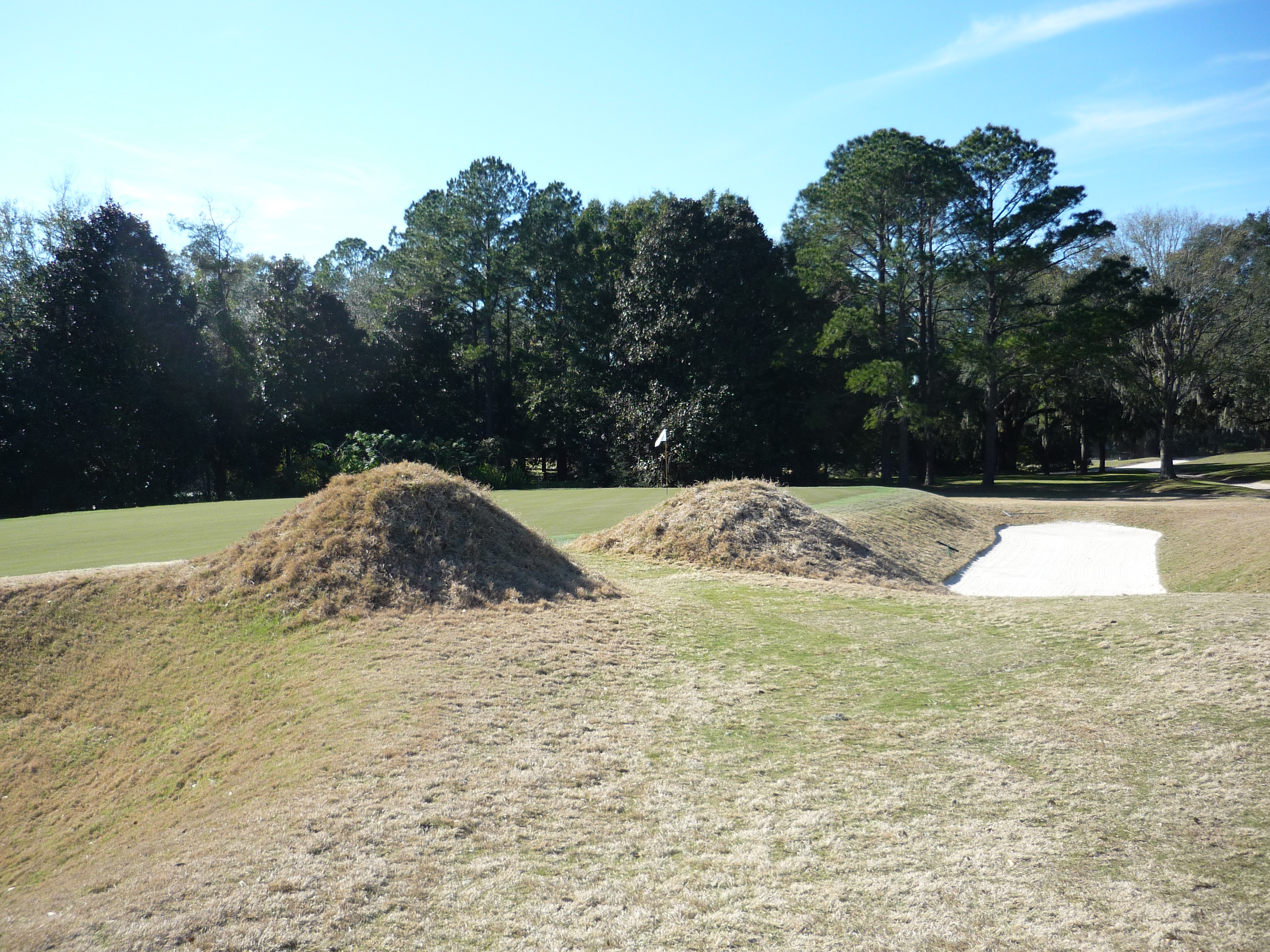
Yeamans Hall Club – Played January 2019
- Rankings: Golf Magazine #66
- Location: 900 Yeamans Hall Road, Hanahan, South Carolina
- Year: 1925
- Original Architect: Seth Raynor
- Additional Work By: Tom Doak & Jim Urbina
- Course Access: Private
- Walking Rules: Carts & Caddies Available
Score Card Information:
- Rust: 6,783 yards, Par 70, 72.8 Rating/134 Slope
- Yellow: 6,280 yards, Par 70, 70.7 Rating/130 Slope
- Silver: 5,792 yards, Par 70, 68.0 Rating/126 Slope
The golf world consistently surprises me through the connections I make in it. In July I was playing The Homestead (Cascades) with two other singles. As we got to talking my quest came up. One of them asked if I had played Yeamans Hall and I responded that I had not. He promptly offered to host me. Golfers are so generous!
Fast forward to January and we had a tee time set up on my birthday! I took the day off work and headed down to the SC coast to experience a place I had long read about and salivated over.
Yeamans Hall is the definition of understated. You turn off a busy road in North Charleston and come to a dead end with a small guard house and gate just on the other end of railroad tracks. Boom, that’s Yeamans Hall! I didn’t get a photo of the gate but you can search for it, it’s pretty great.
As you pass the gate you take a leisurely drive through a sandy road to get to the club. The history of the land dates back to the course’s namesake, Sir John Yeaman, who was a colonial governor of South Carolina. The overall plan for the land was put together by Frederick Law Olmstead, who designed Central Park.
Yeamans Hall is primarily known as a northern member-owned club. It was founded by businessmen from New York. To this day the club still has 35 cottages on site for “proprietary members”, usually the family of these founders.
The original vision for the club began in 1916 with grand designs. 250 home sites and two golf courses were planned for the location that was a day’s train ride from the founders home state of New York. For whatever reason, the project didn’t move ahead until 1924 when Seth Raynor came in to do the golf course. In 1929 the stock market crashed and put everything on hold.
The membership at Yeamans Hall is still primarily non-resident Northerners. Most of their activity takes place from late fall to the early spring. One of the coolest thing about Yeamans Hall is that they host a “summer association” of golfers who are not otherwise members. It’s a unique idea and one I wish more clubs would endorse.
I was lucky to play Yeamans Hall when I did instead of in the early 1990’s. In 1998, Tom Doak was brought in to restore the course. Like many gems from the 1920’s, greens had shrunk/changed shape and bunkers had been filled in.
Doak’s team increased the total green square footage by 75%! The greens feature Raynor’s trademark squared edges and undulation. Pin positions will greatly affect how hard a hole plays. You’ll see what I mean when we get into the tour. I highly recommend reading more about the restoration work here.
Alright, let’s get to this tour! We played the yellow tees (pictured below) so all yardages are from those markers.
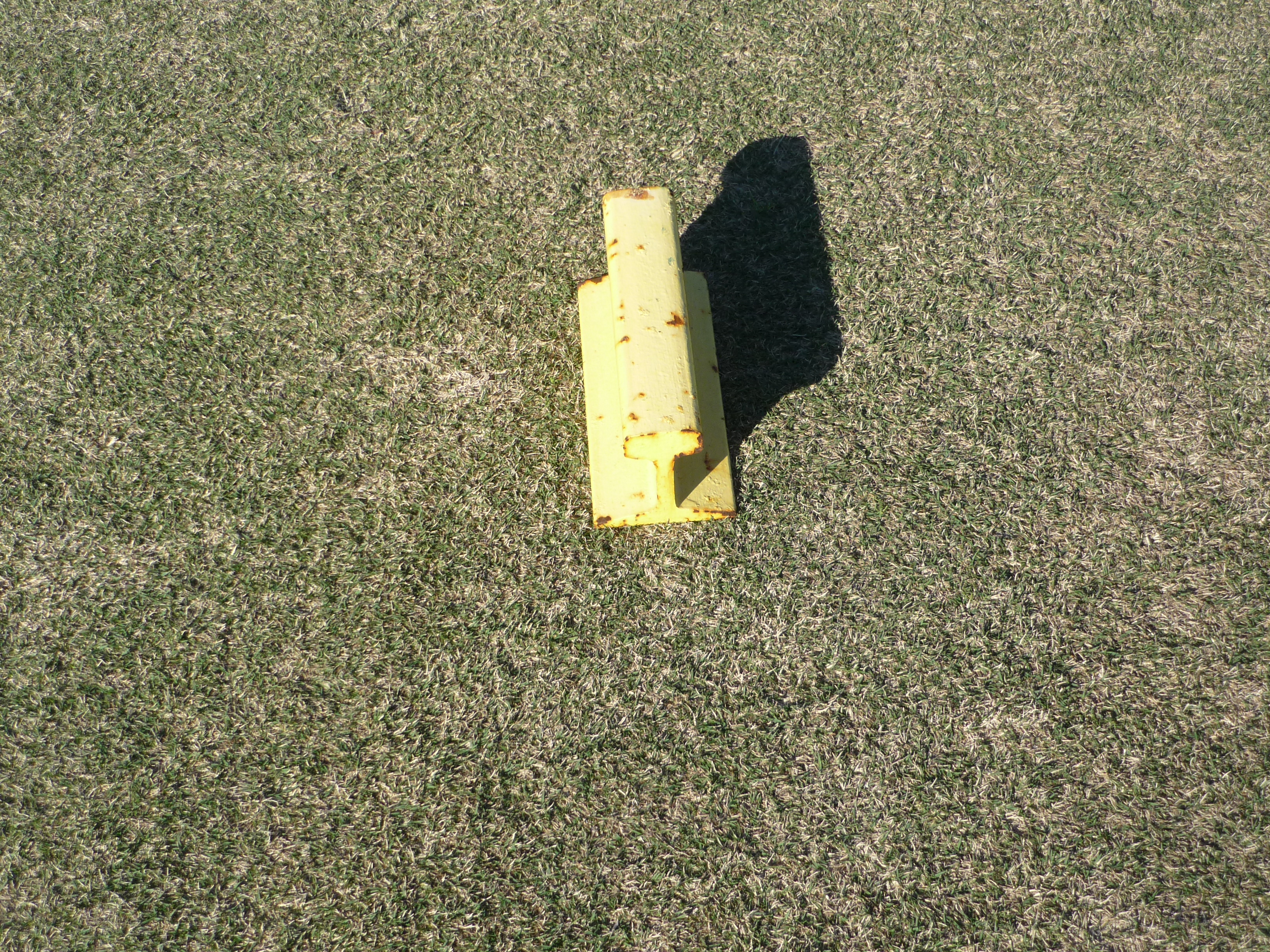
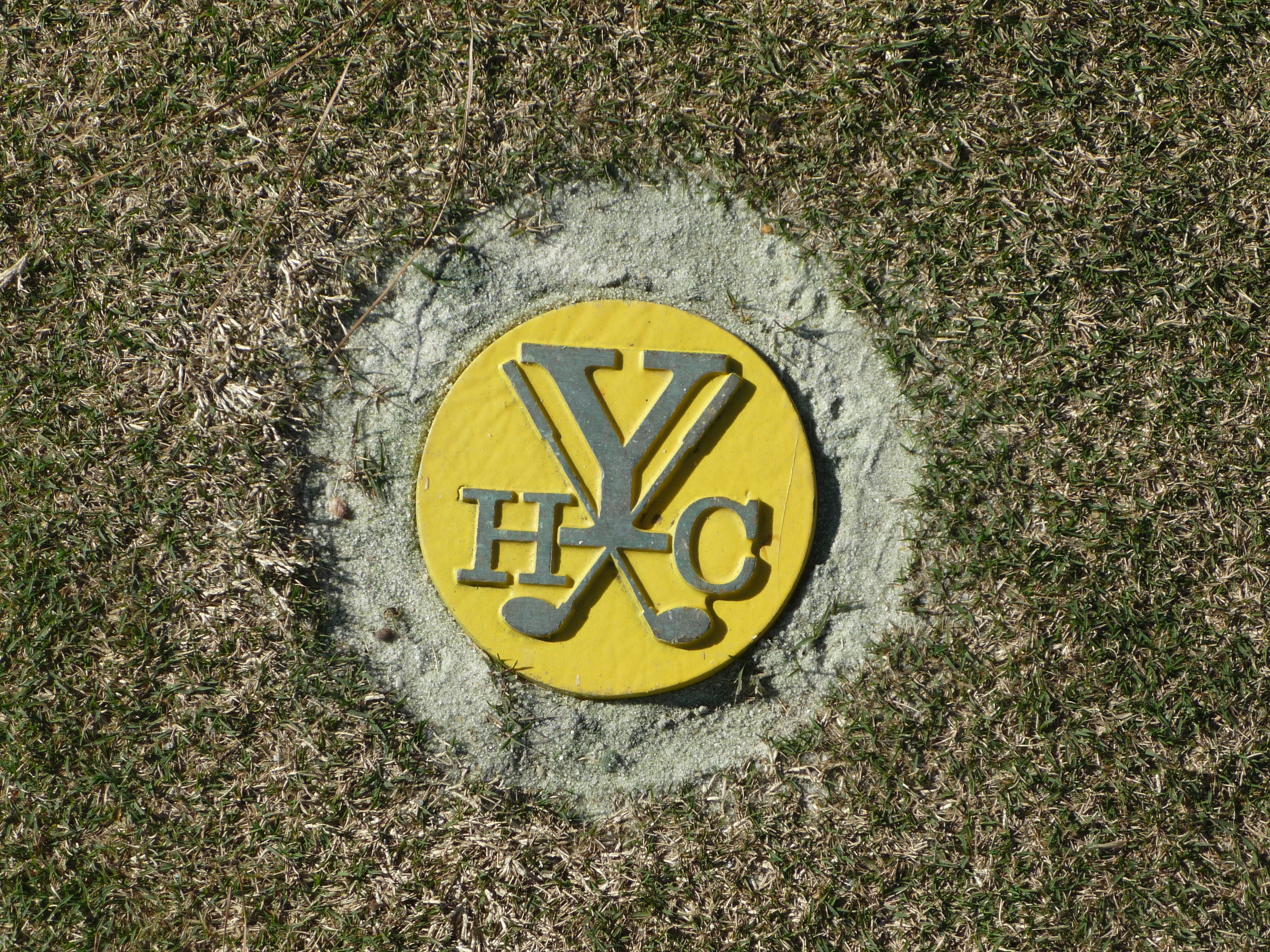
Hole 1 – 397 yards – Par 4
The first greets you with a wide fairway that moves to the right. You’ll want to be on the right side of the fairway to approach the green. The entrance road crosses this hole about 130 yards short of the green.
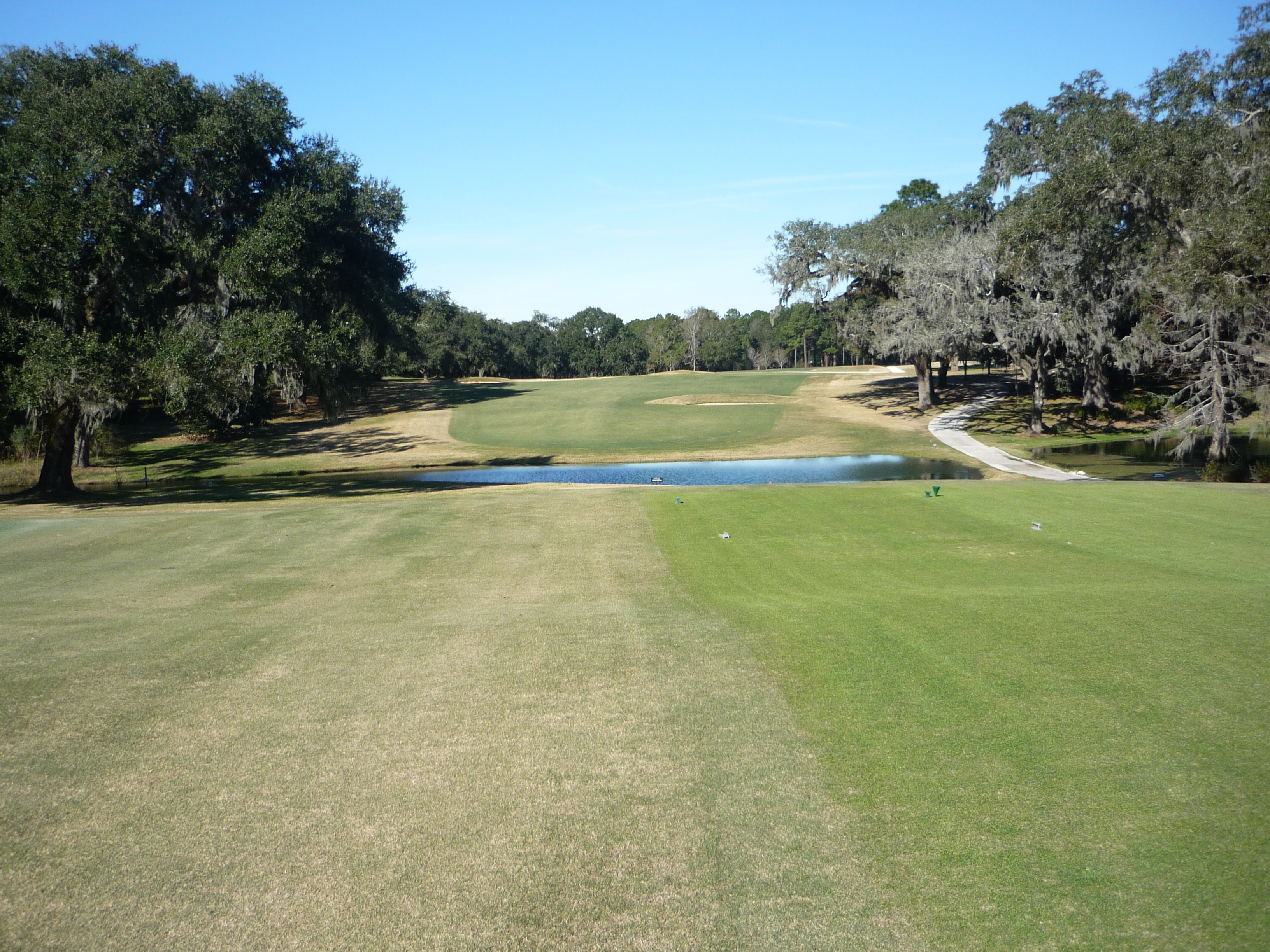
You can see the road in the photo below as well as the edges of the Principal’s Nose bunker on the left. This green is massive with severe contouring.
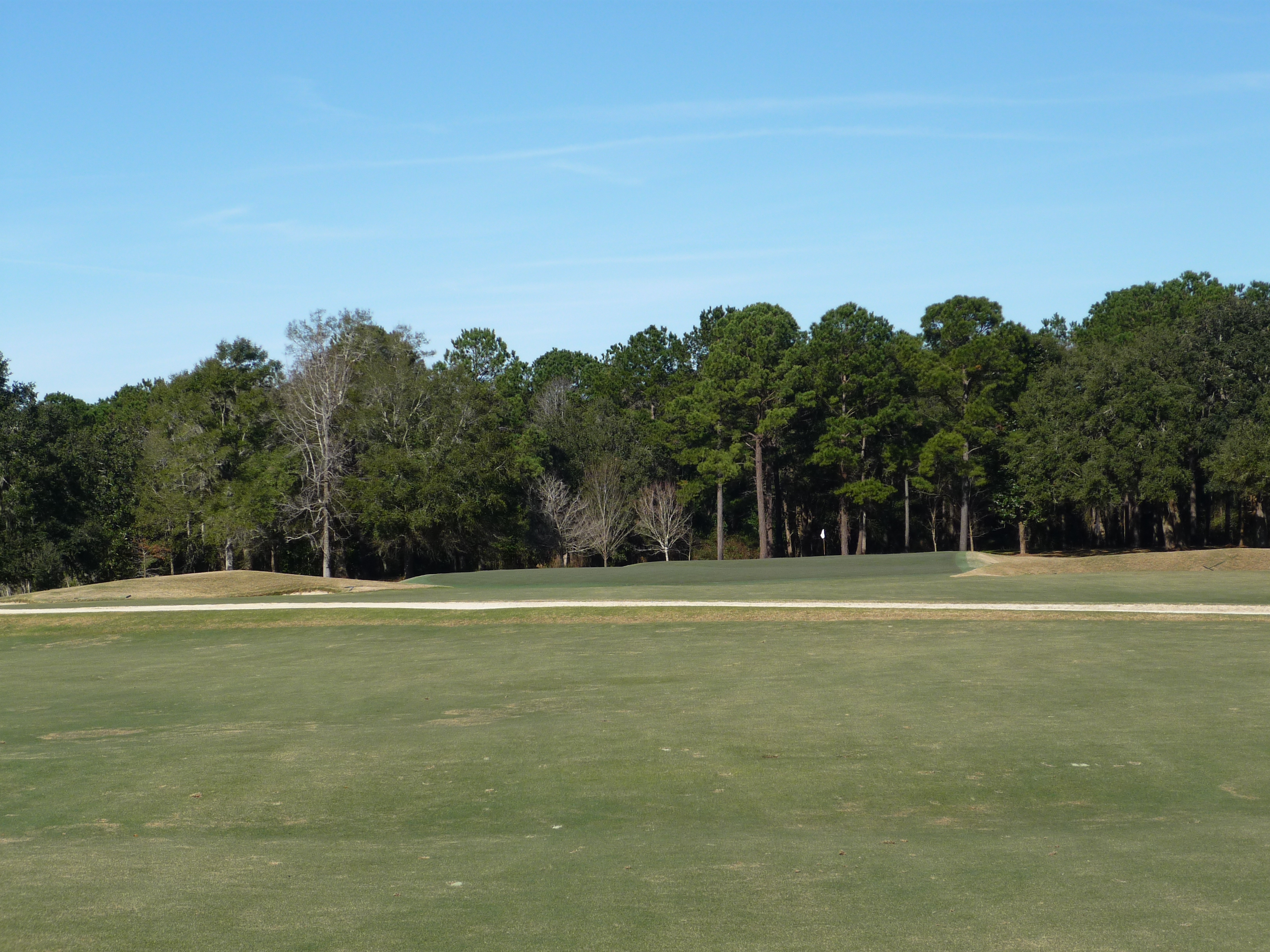
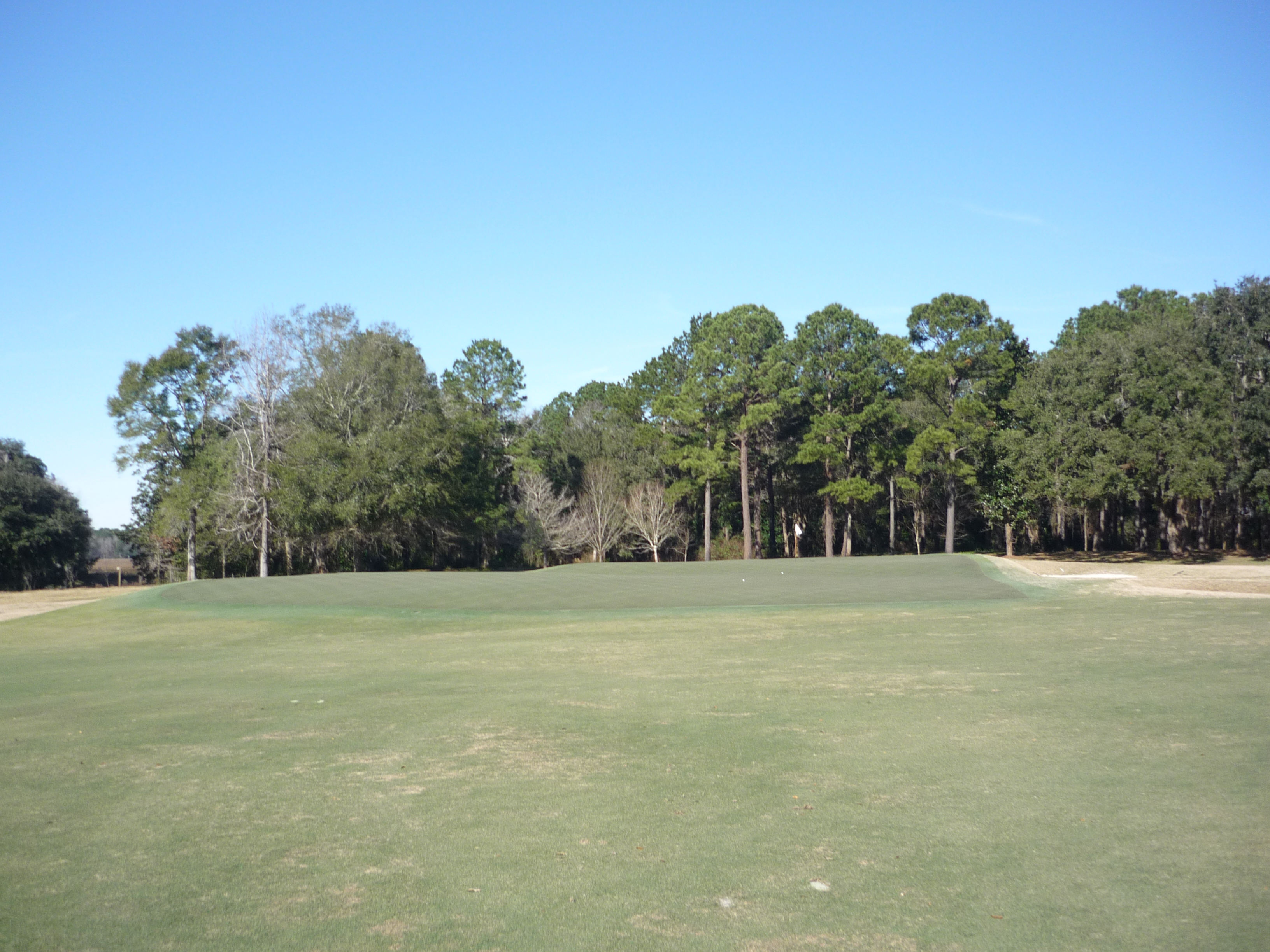
Right away we see the Raynor trademark of squared off green edges. The putting surface is about three times the size of a normal green but some parts are not playable. The depressions on the left are like missing the green.
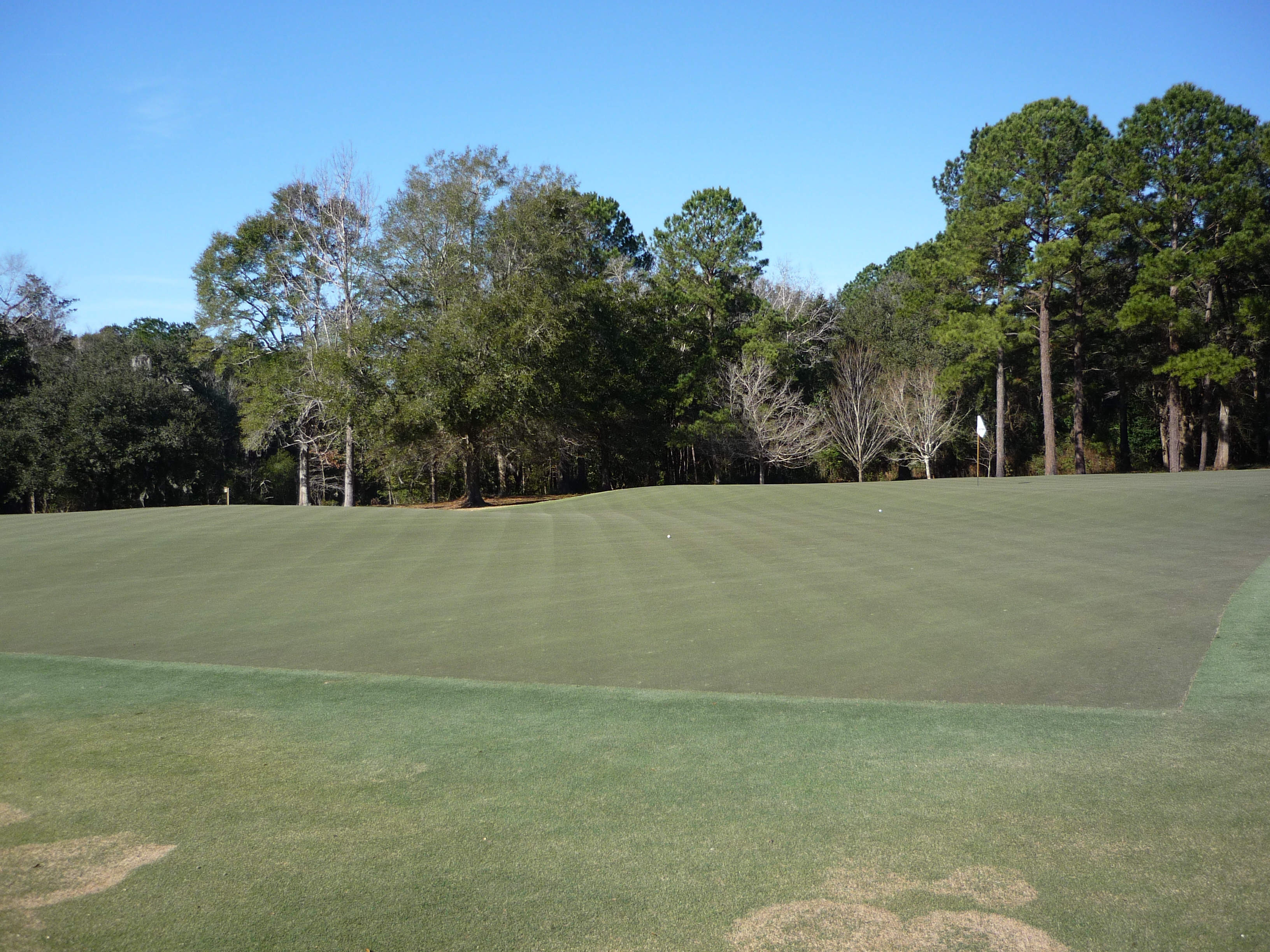
Yowza!
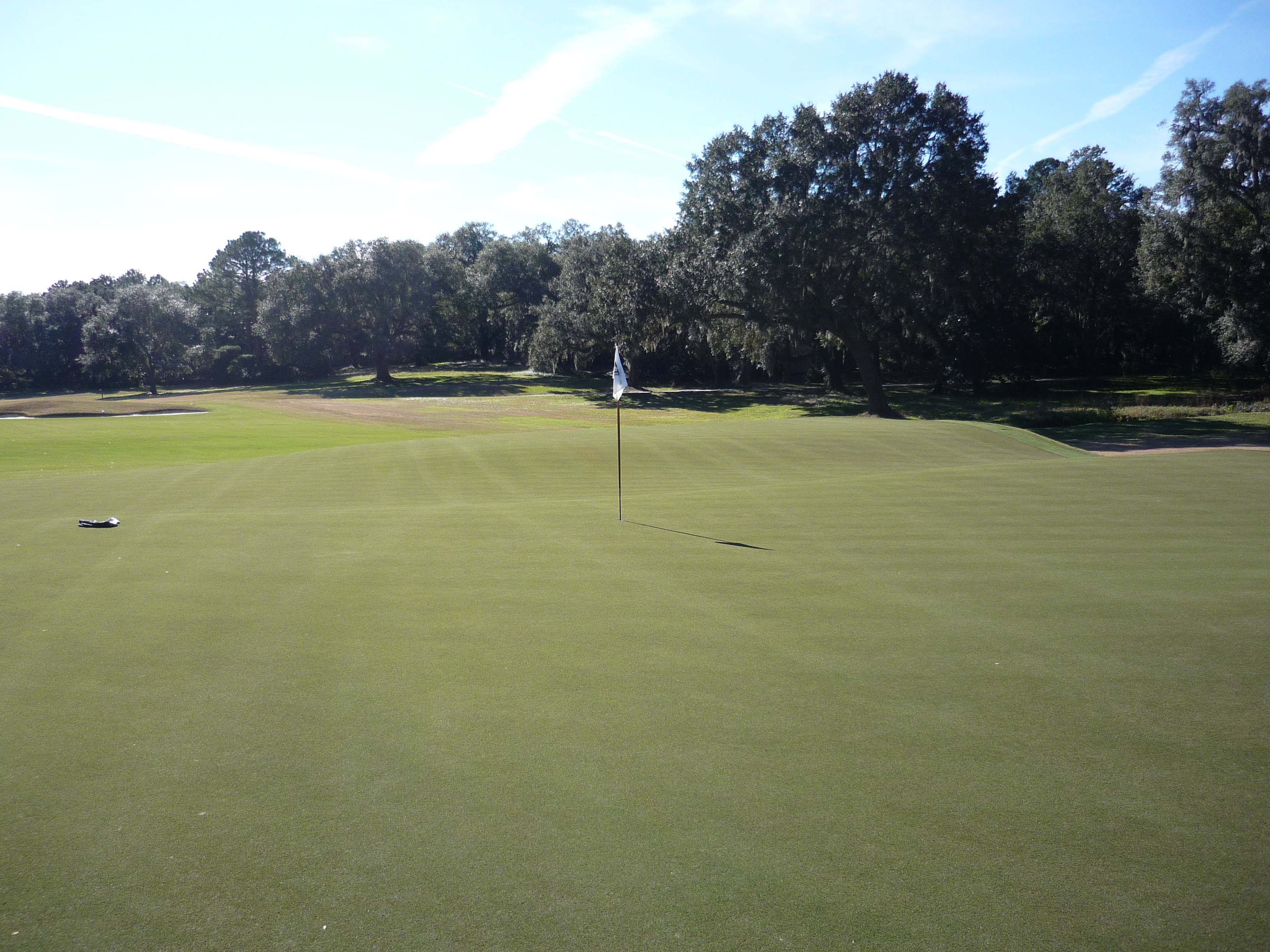
Hole 2 – 345 yards – Par 4
This hole is the Leven template where the pin position dictates strategy off the tee. You will want to be on the opposite side of the fairway from where the pin is. In the restoration this green grew by three times! A bunker sits on the outside corner of this dogleg left.
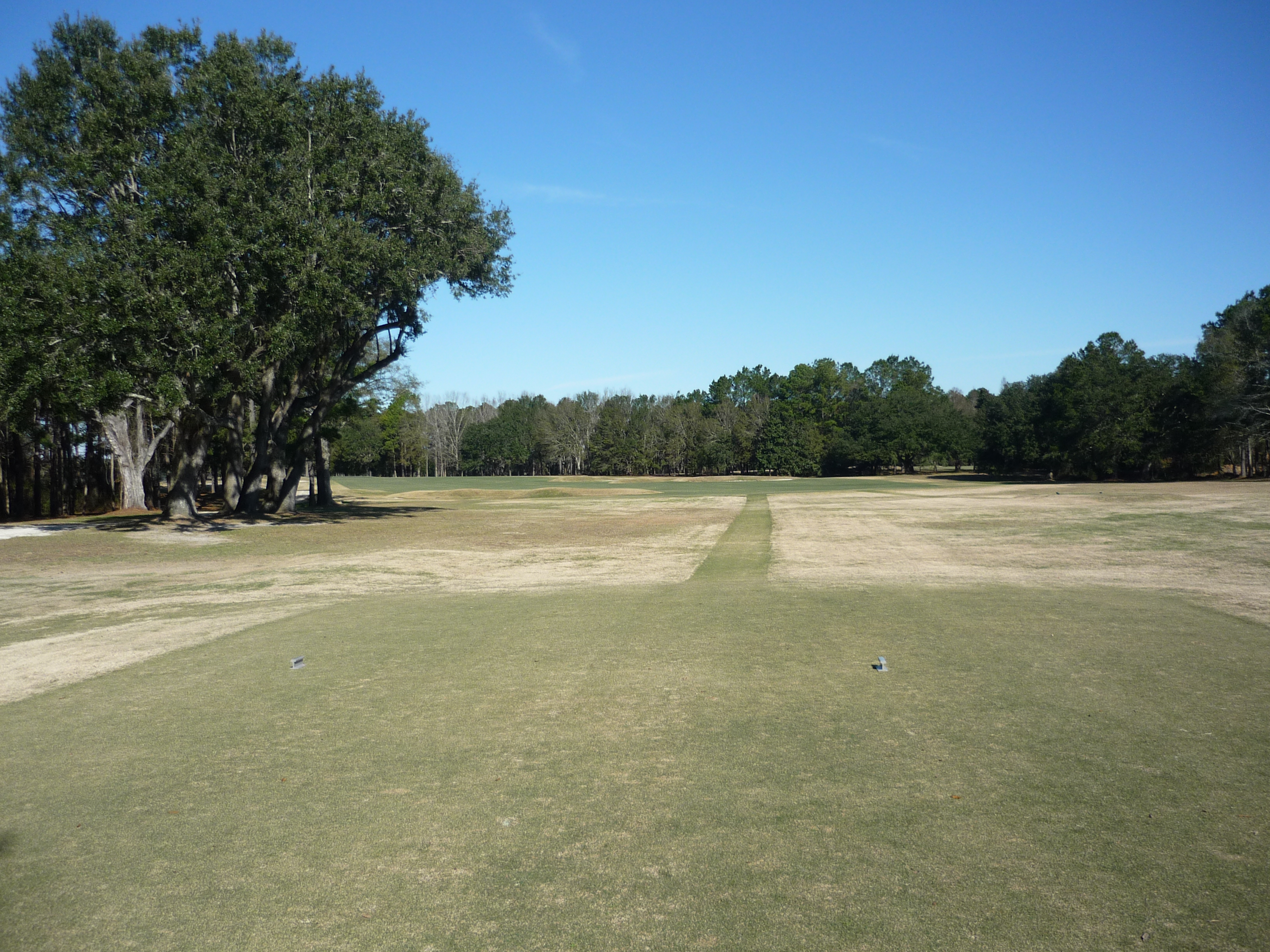
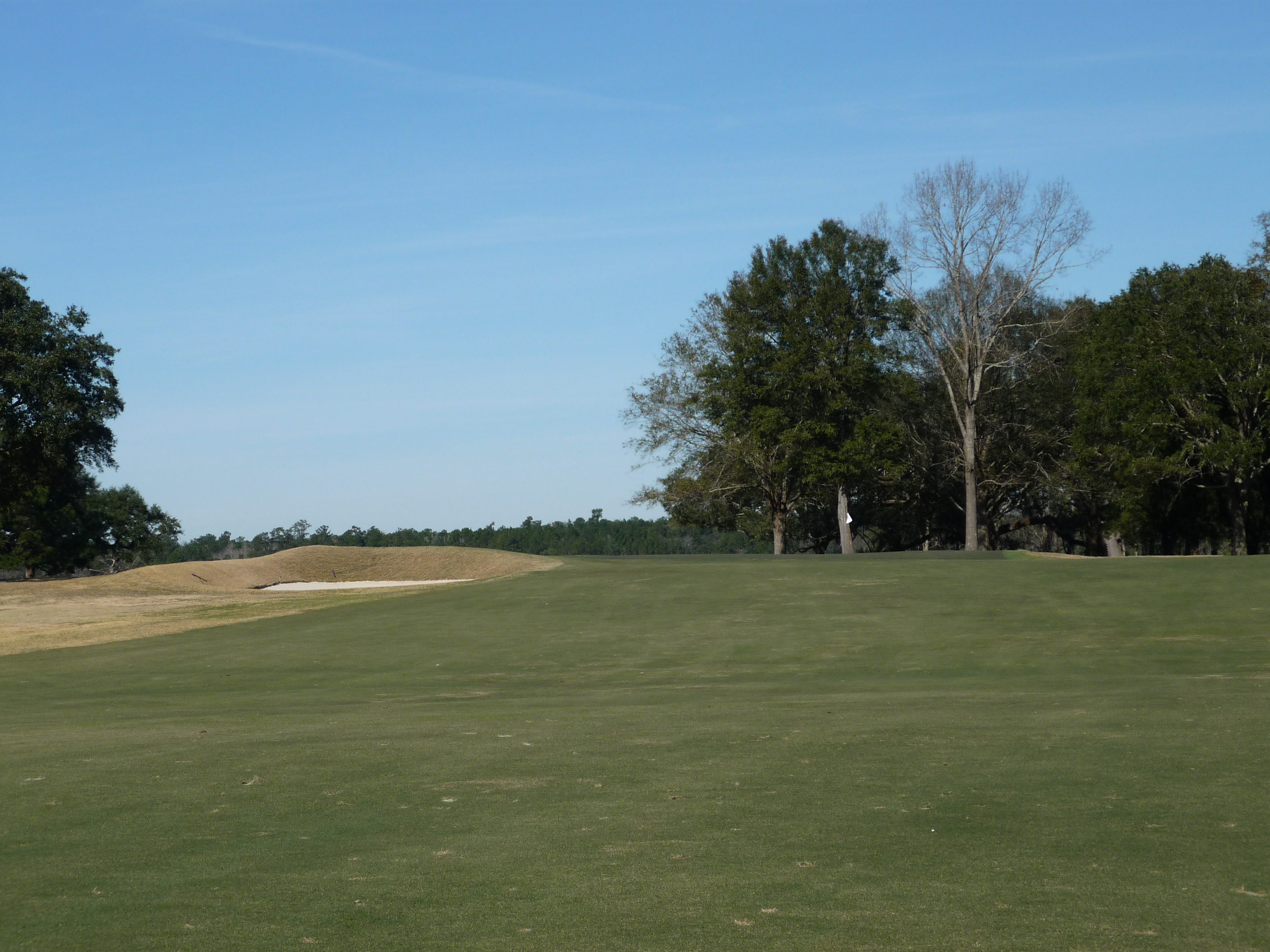
Flags near the left bunker are tough!
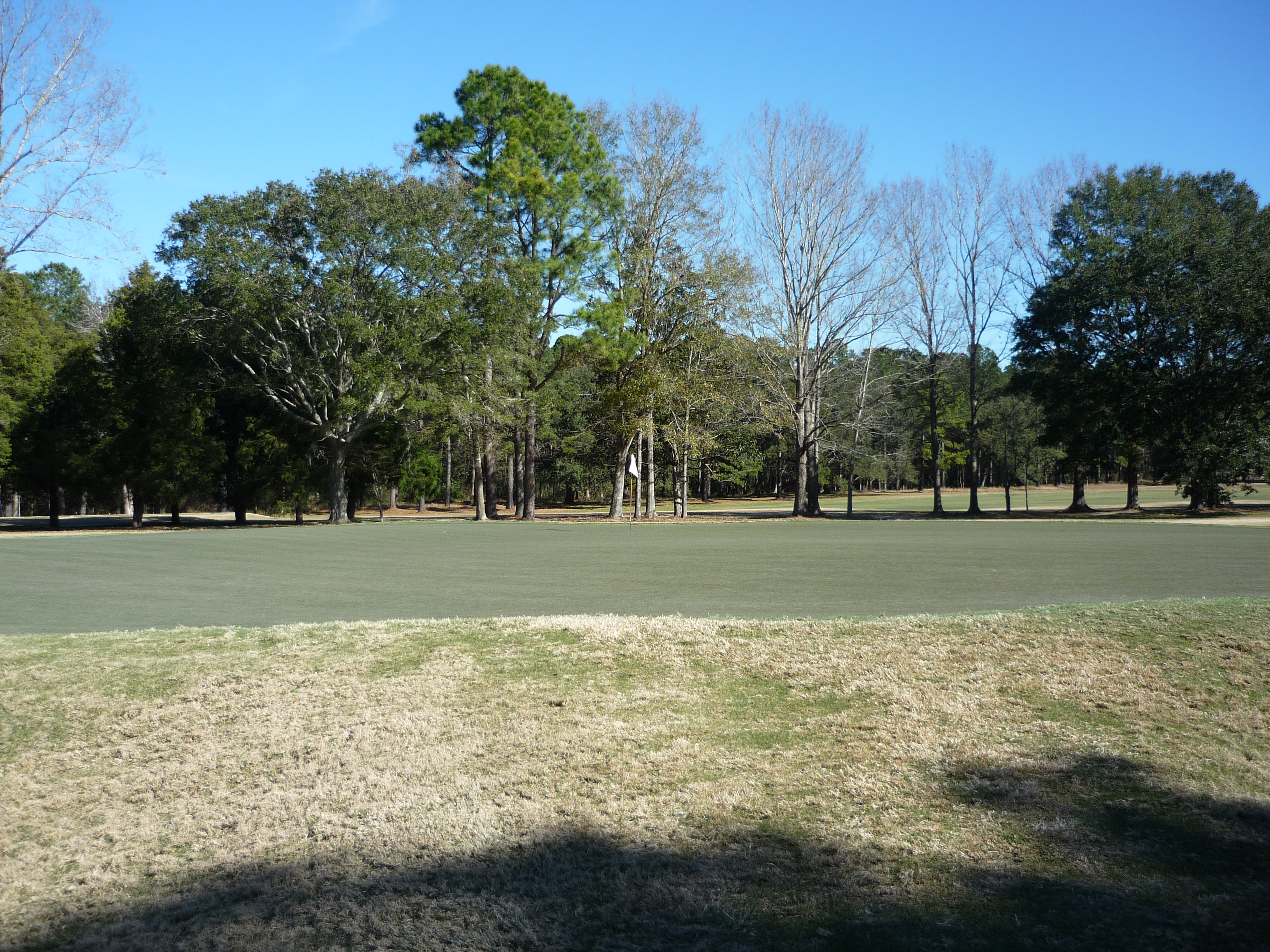
Hole 3 – 127 yards – Par 3
This short hole can be affected by the wind coming off the water. The green features a thumbprint depression that makes for some interesting putts and greatly decreases the effective target size.
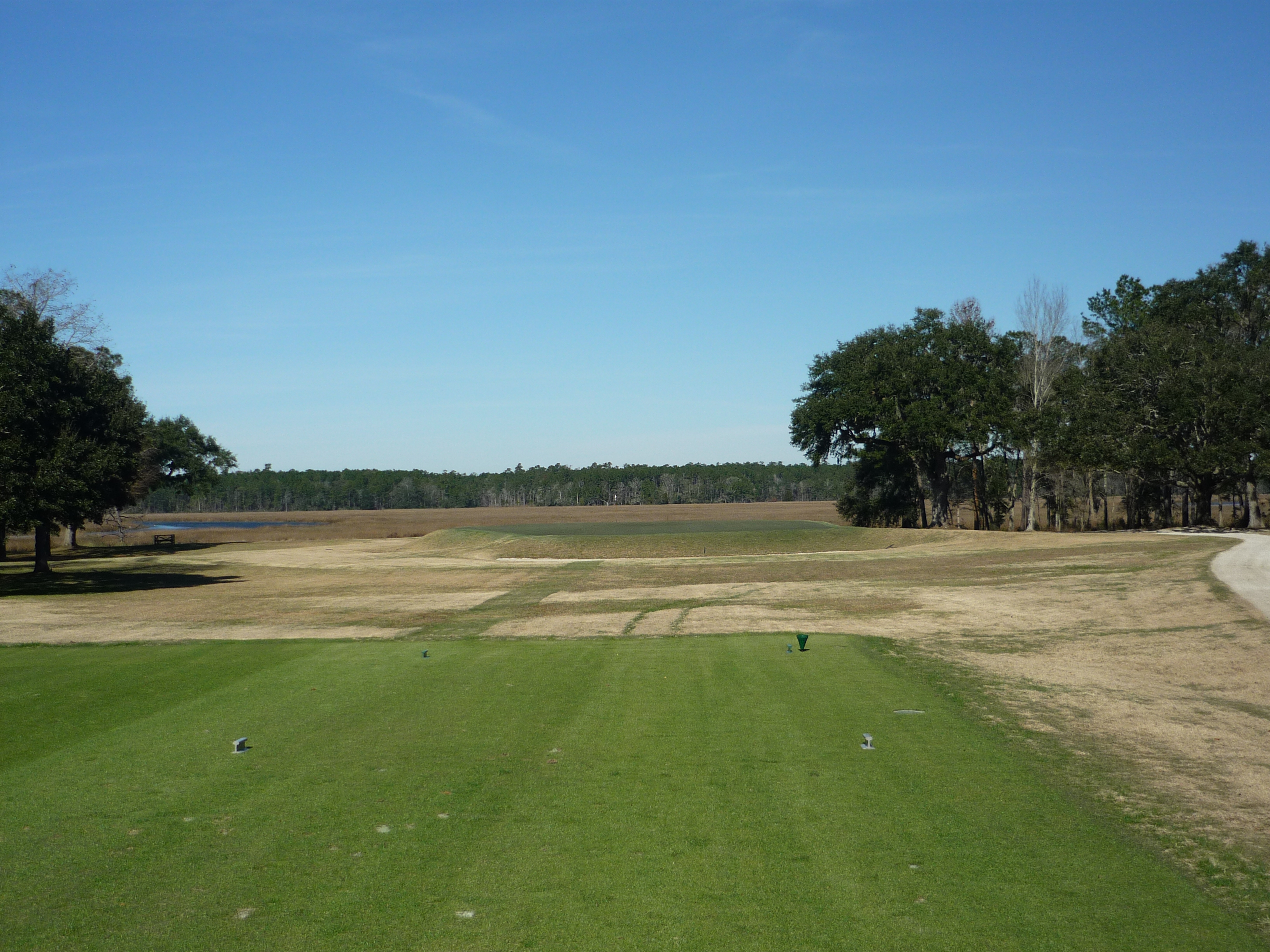
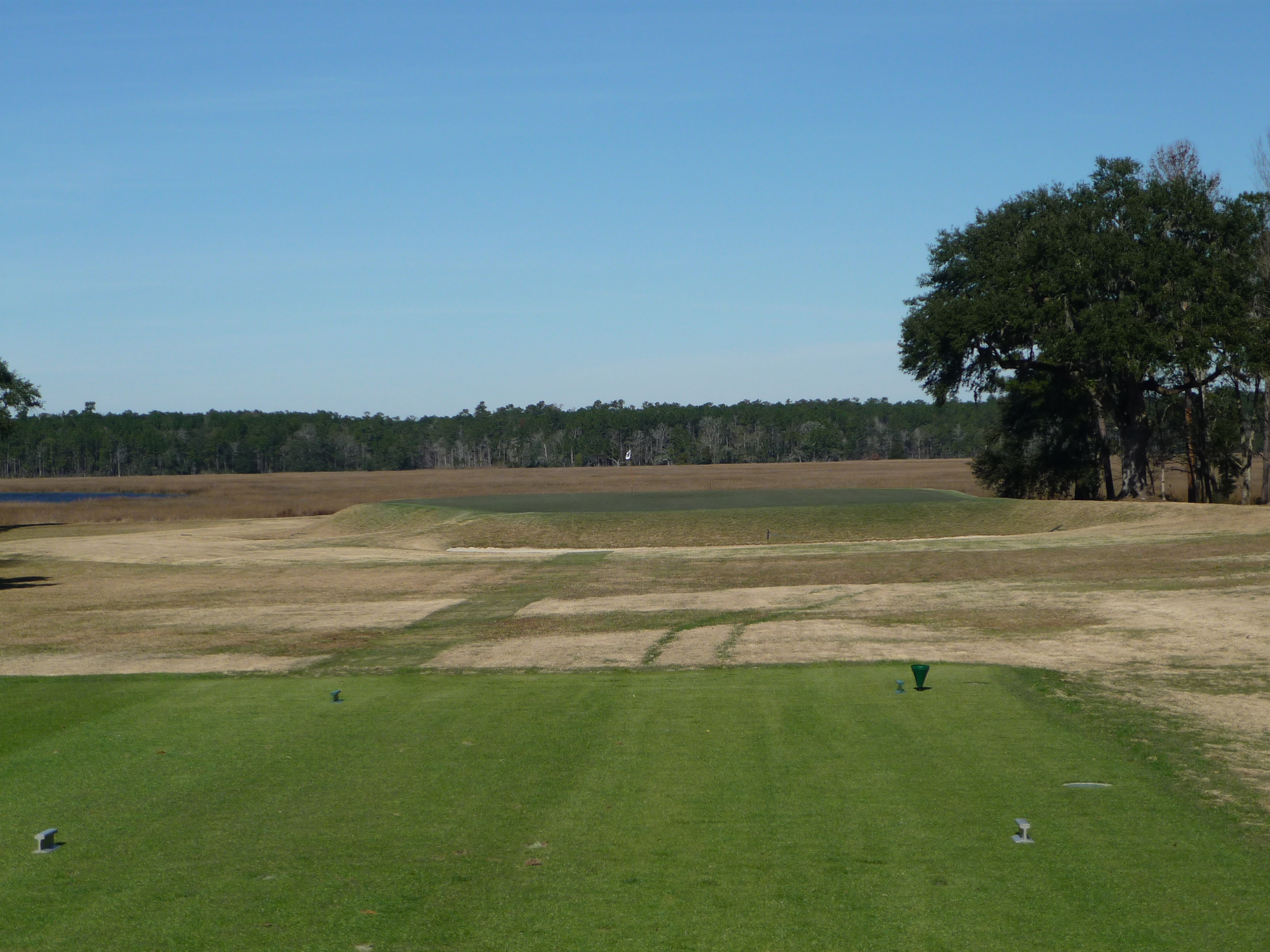
Beware of the back bunker, par is all but out the window for you if you hit it here.
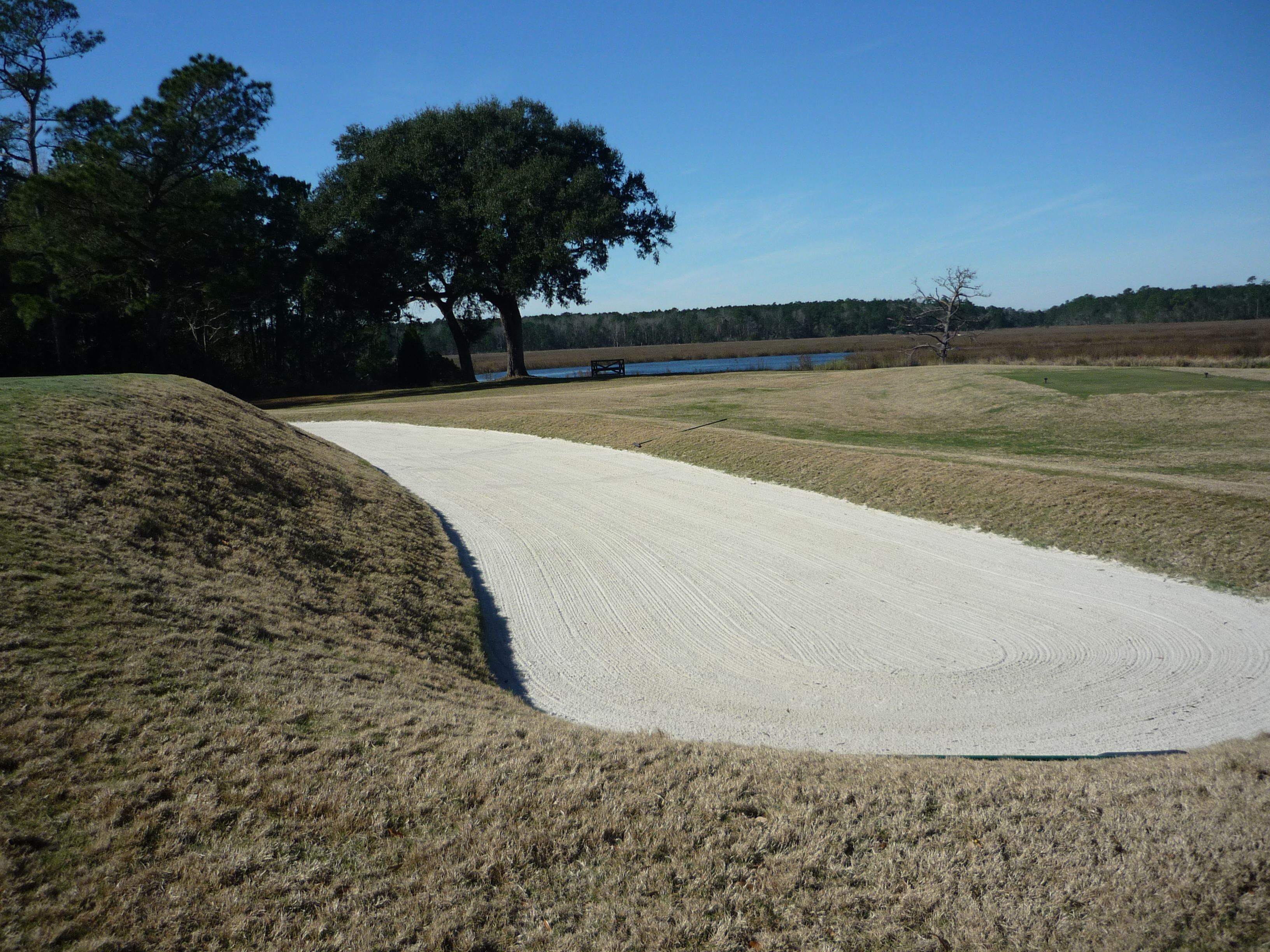
You can see the outlines of the depression in the photos below.
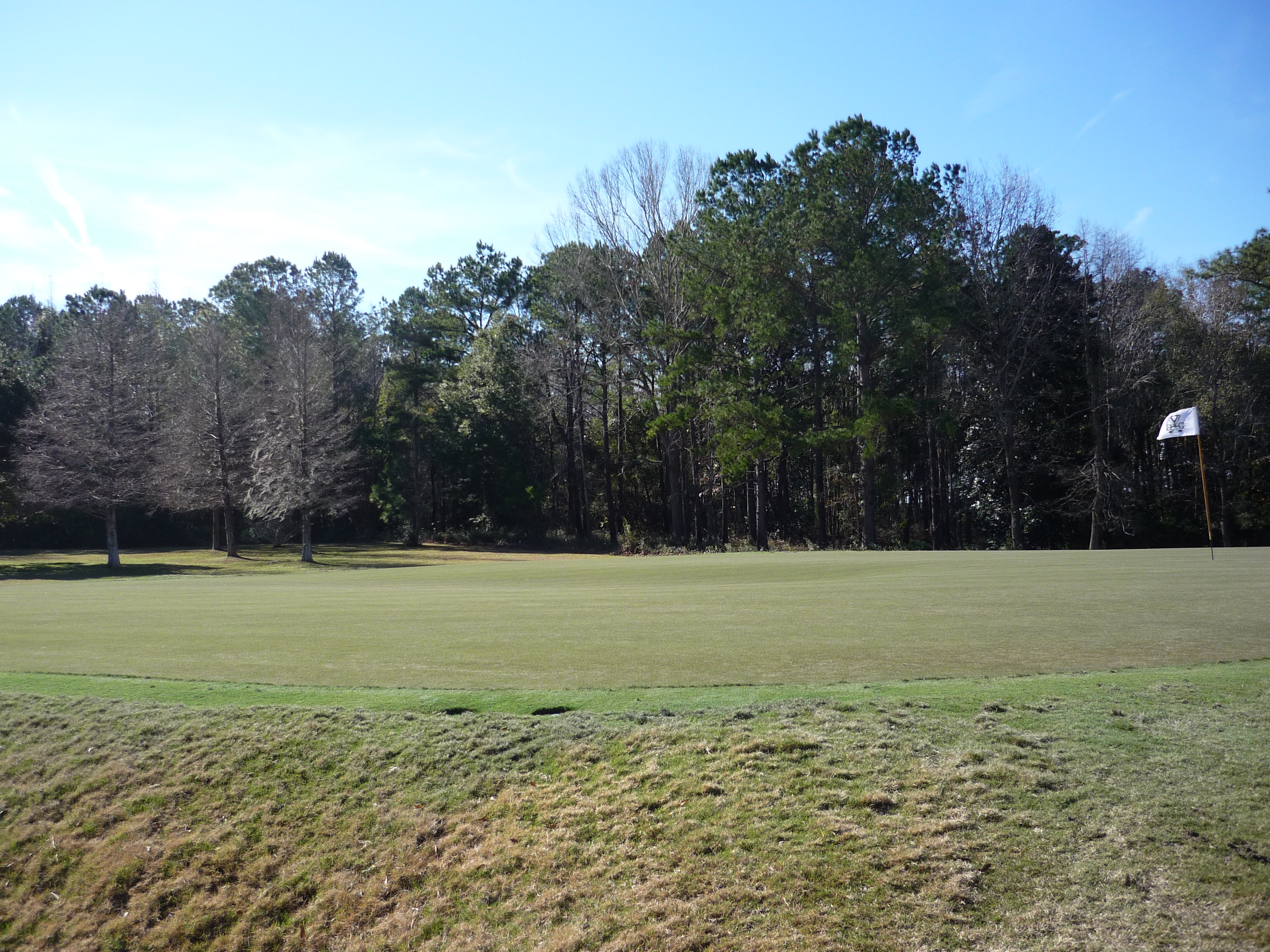
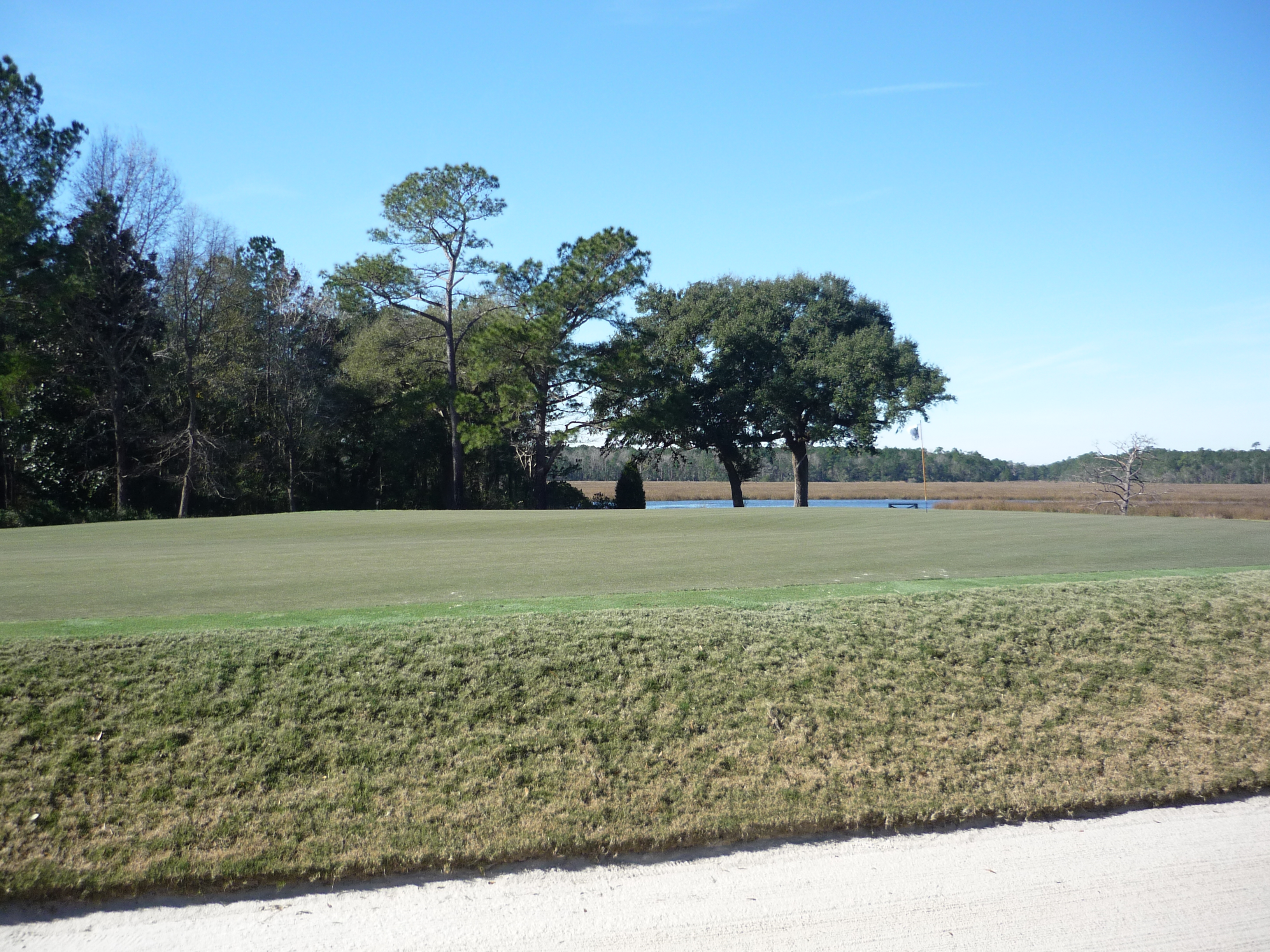
Hole 4 – 410 yards – Par 4
The fourth is on one of the flatter pieces of the property. It is a bottle template with a centerline bunker providing the challenge from the tee.
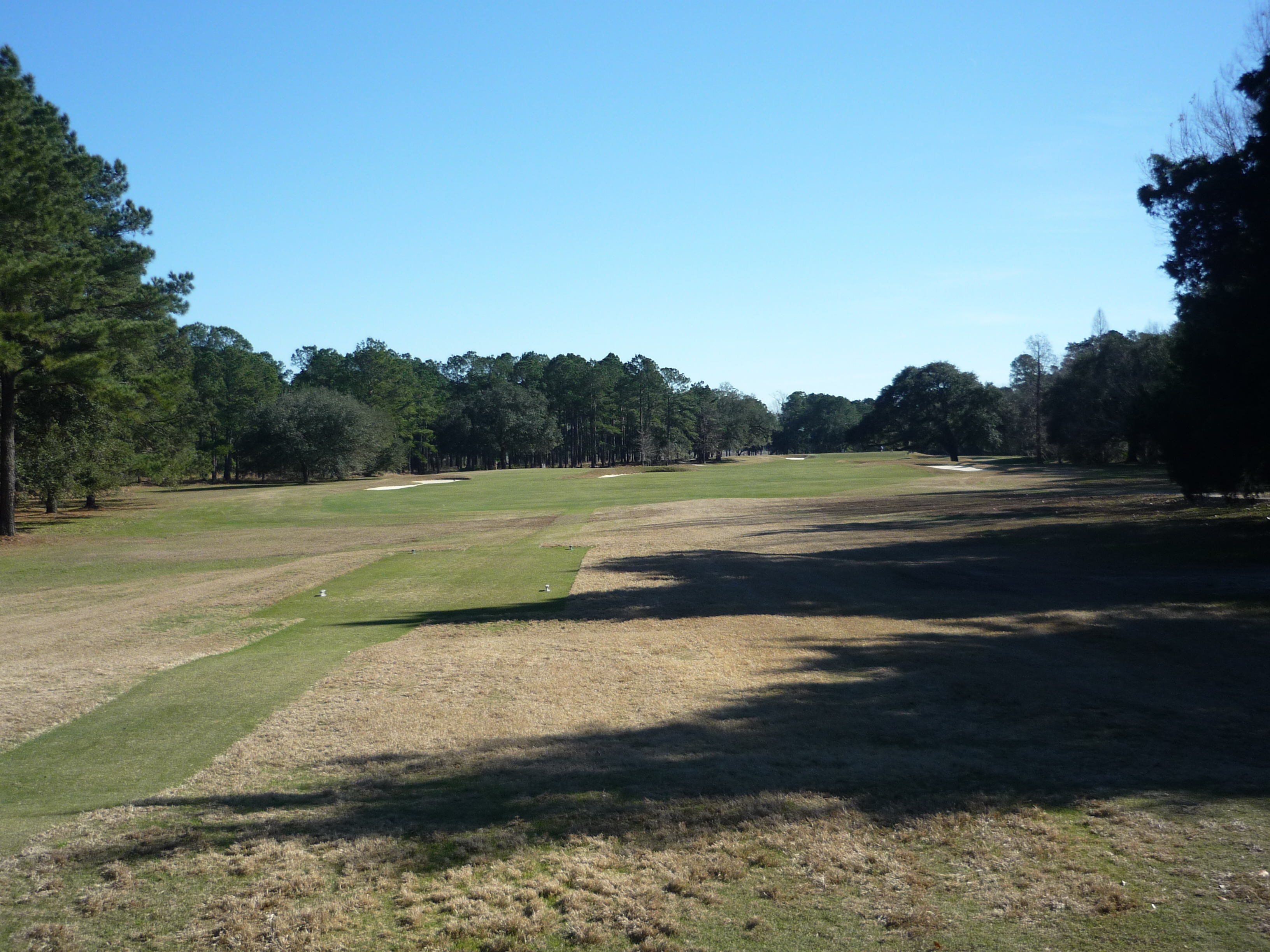
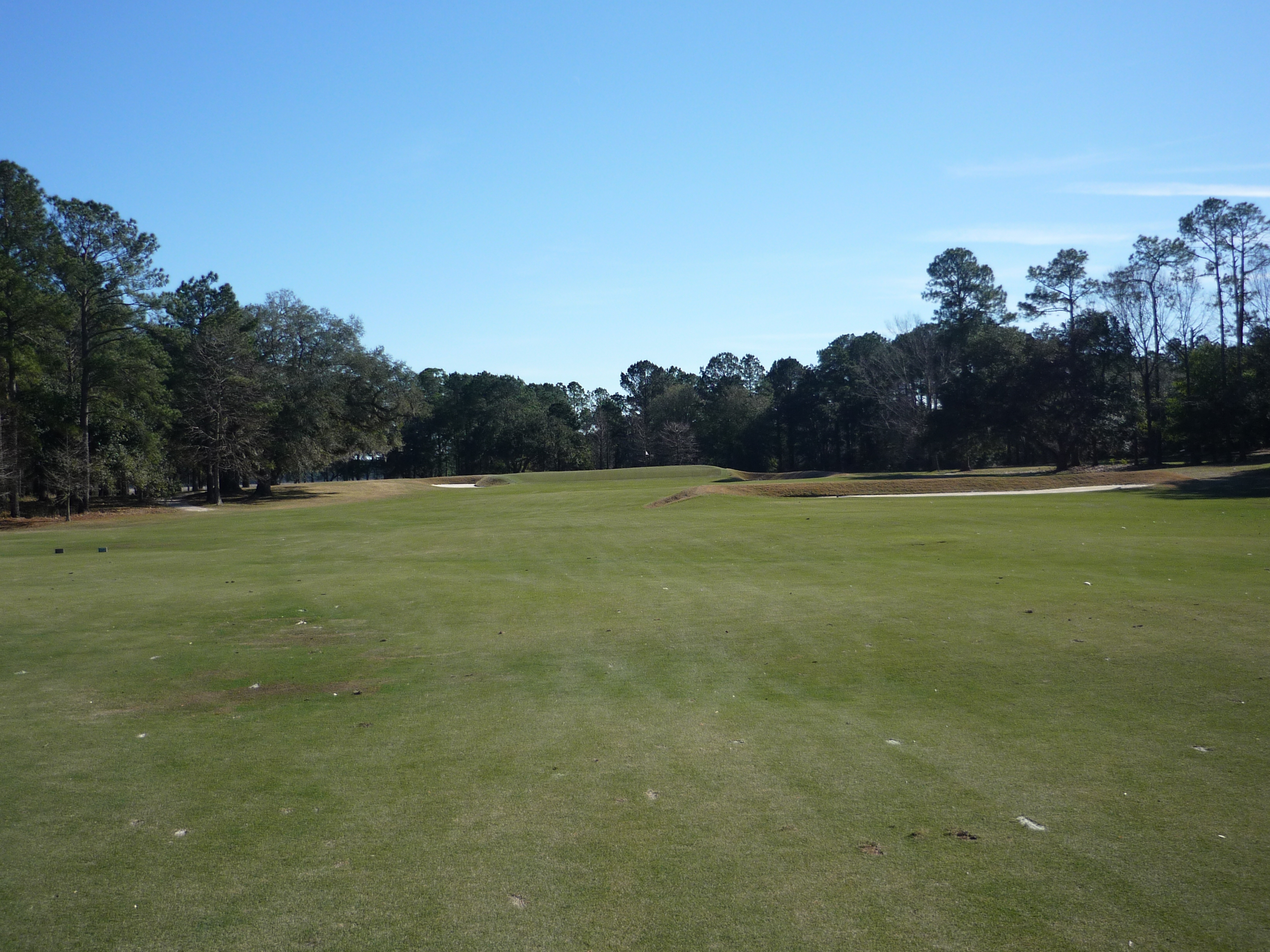
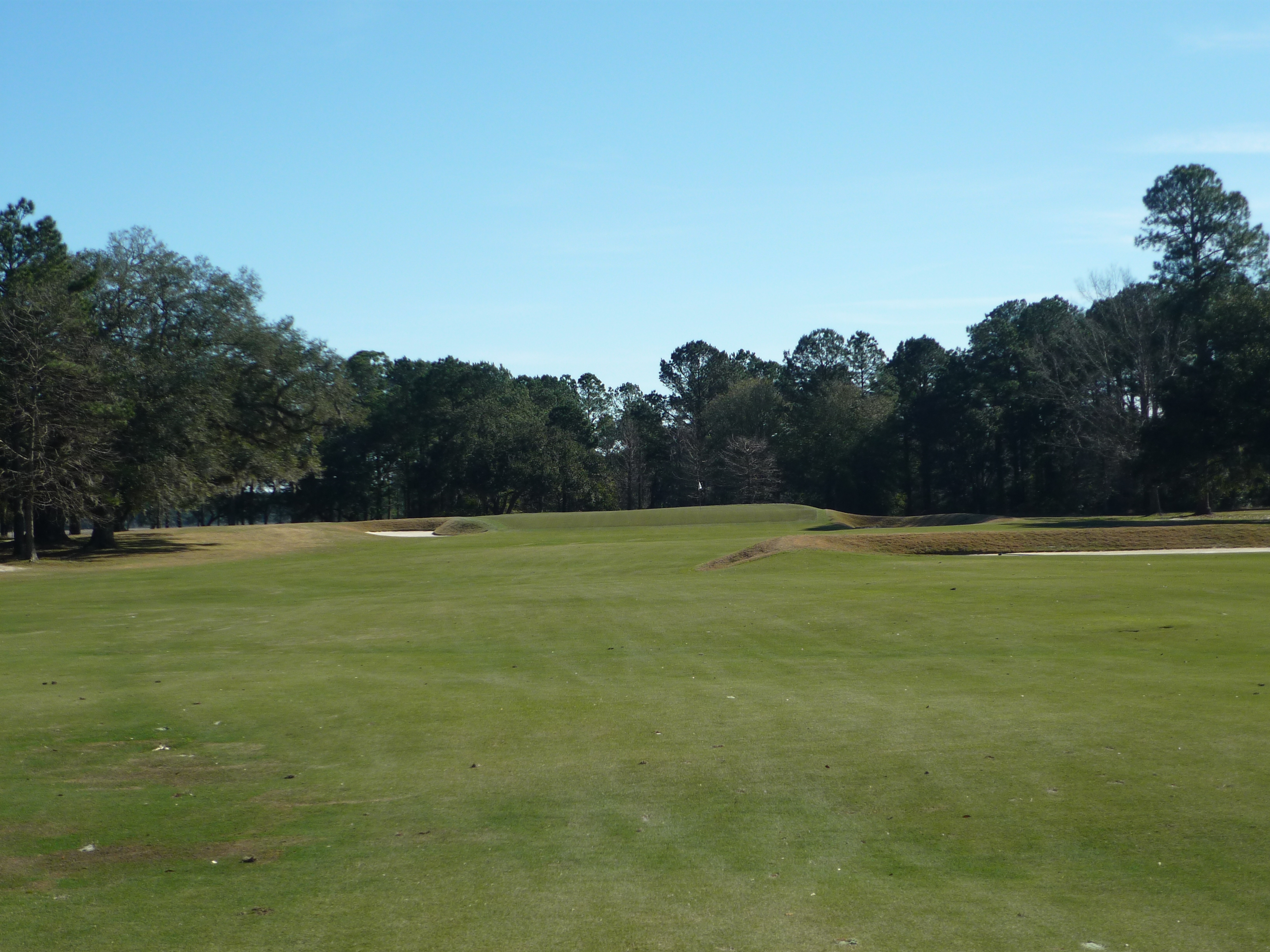
The approach plays to one of the best greens. The false front is epic and must be carried. The bunkers on each side make for almost no room to miss.
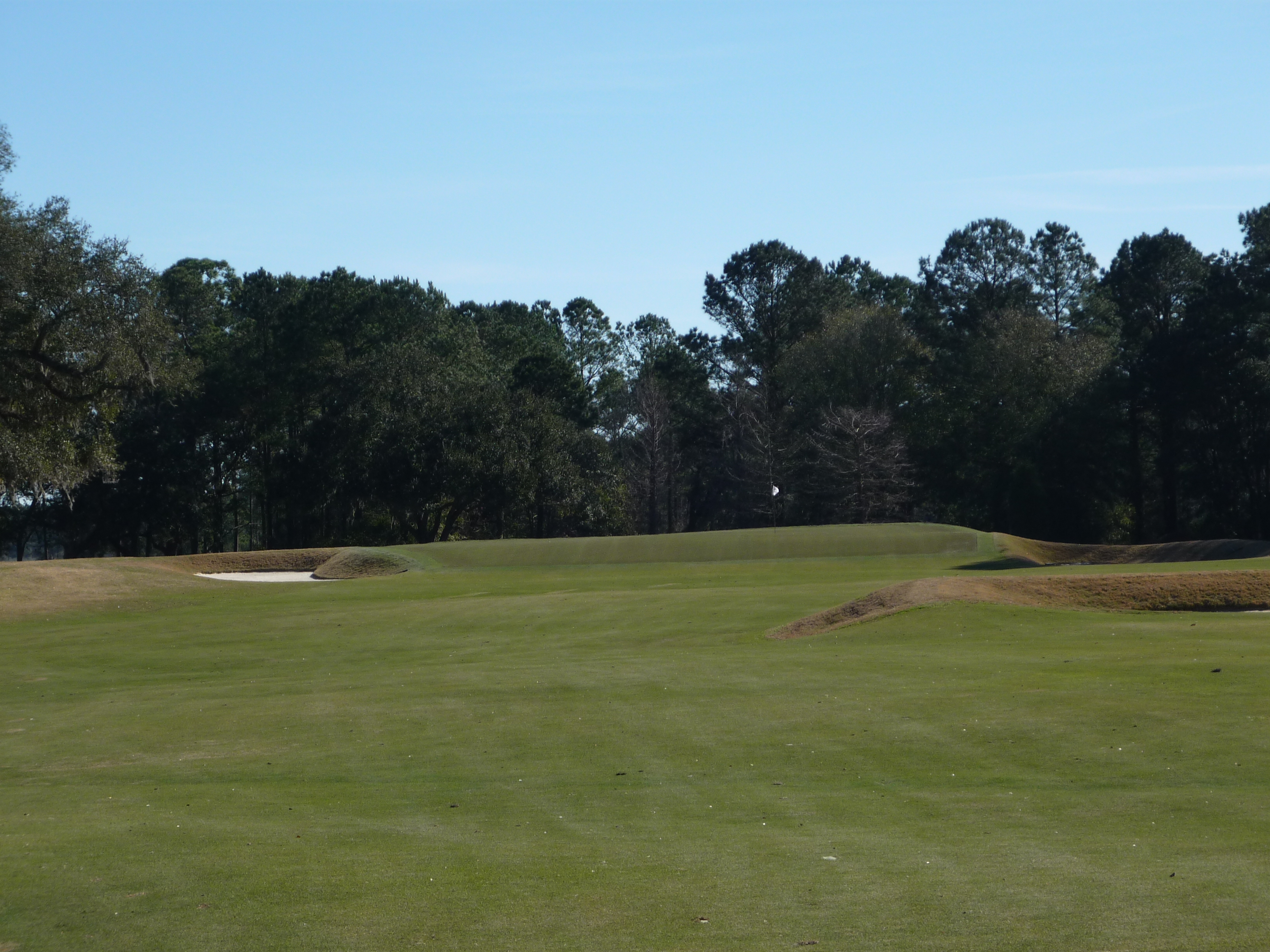
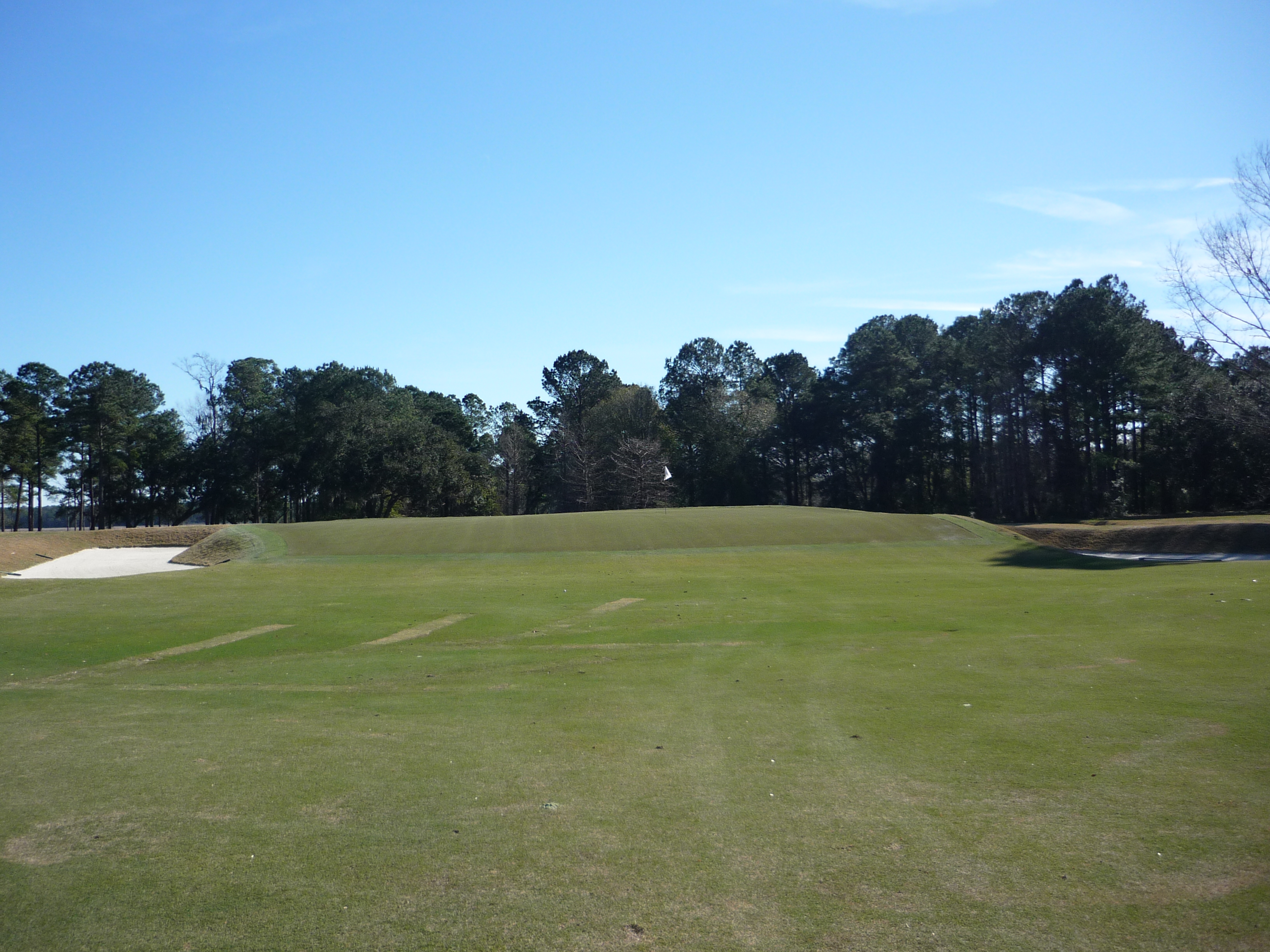
Hole 5 – 391 yards – Par 4
This Alps hole is golf architecture brilliance. The land is dead flat but Raynor put sand traps all up in the fairway to make you work on the tee. What could have been a boring hole turns into a fun exercise.
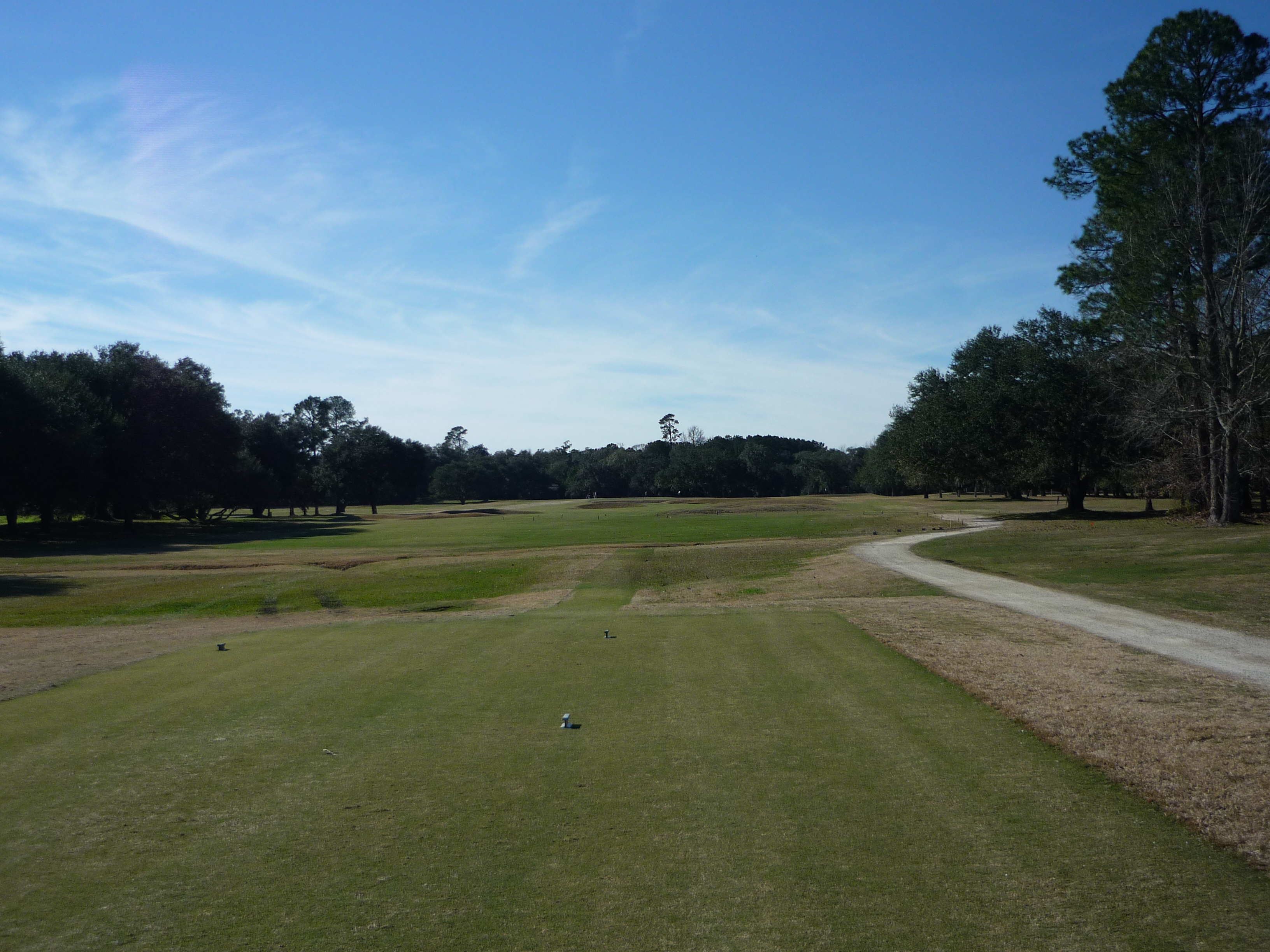
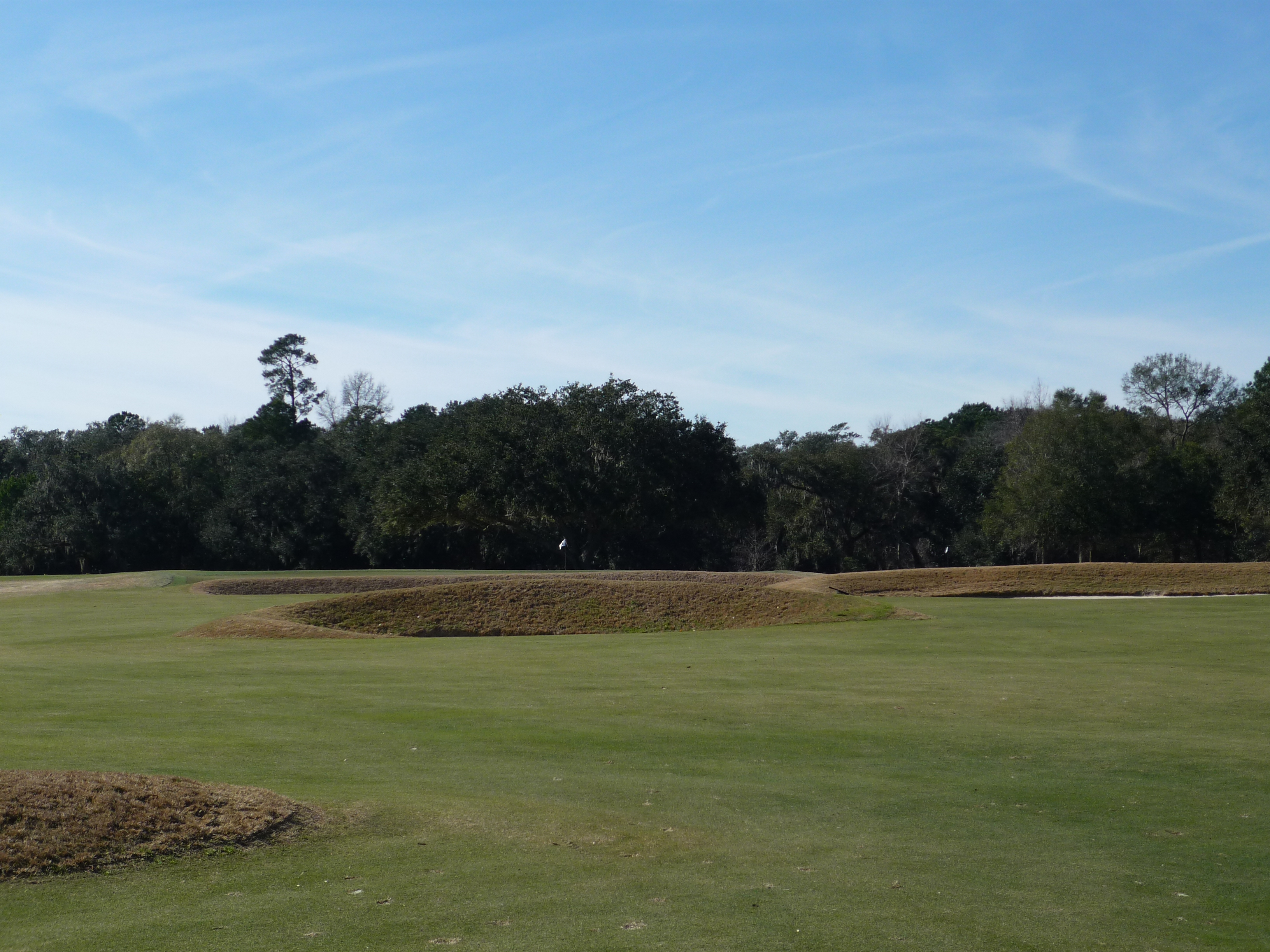
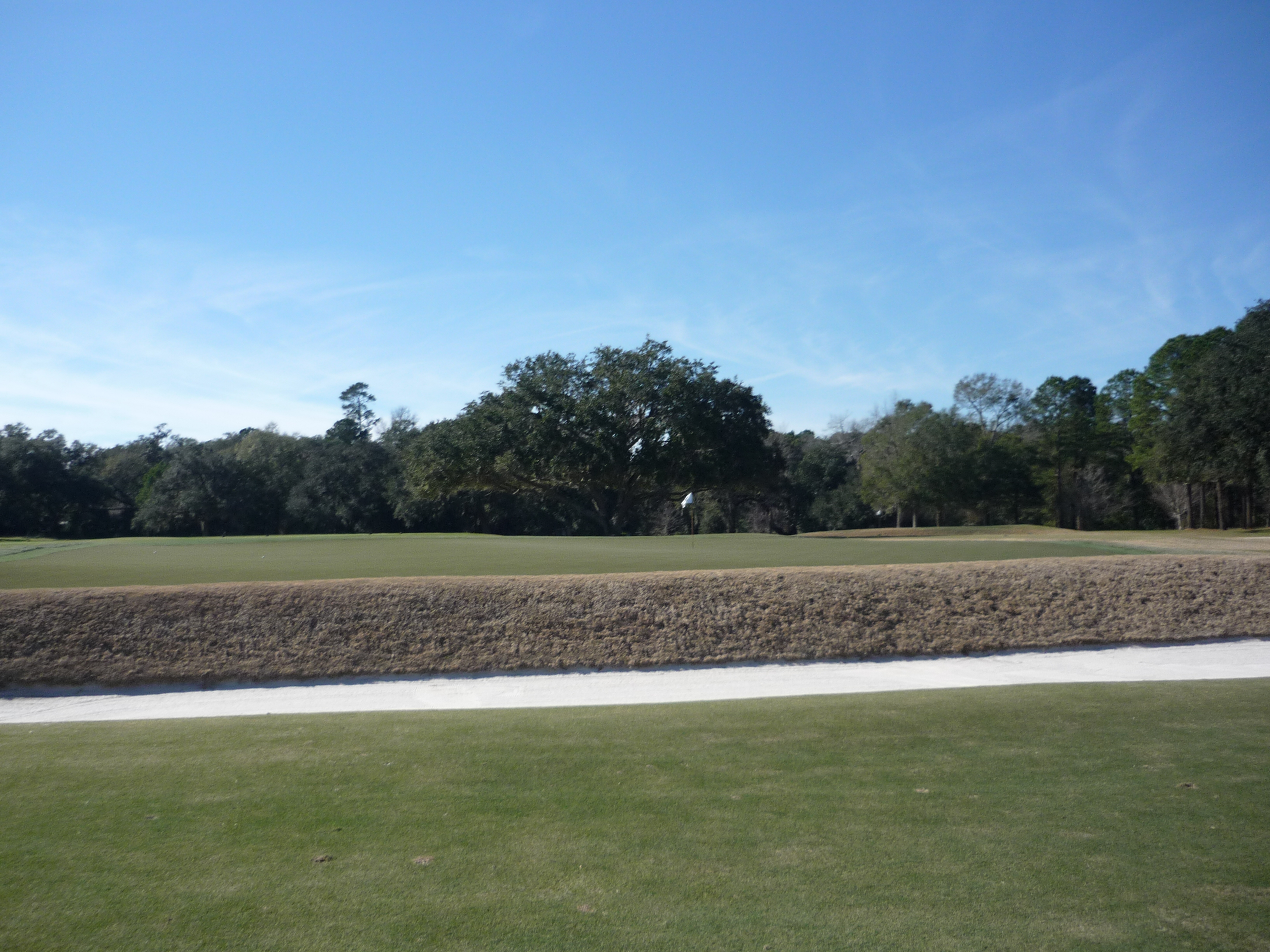
The green is a big target with a large ridge in the middle.
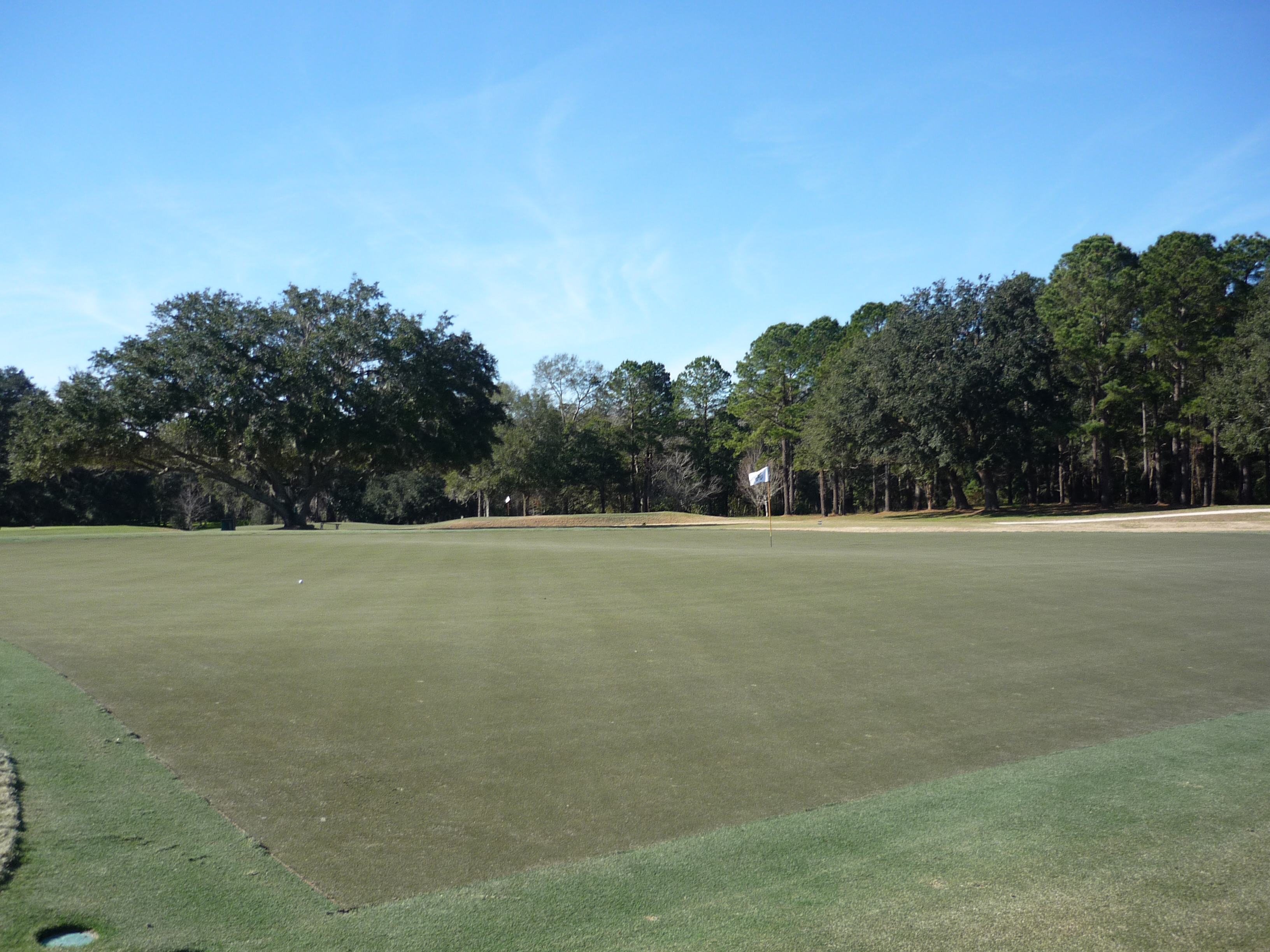
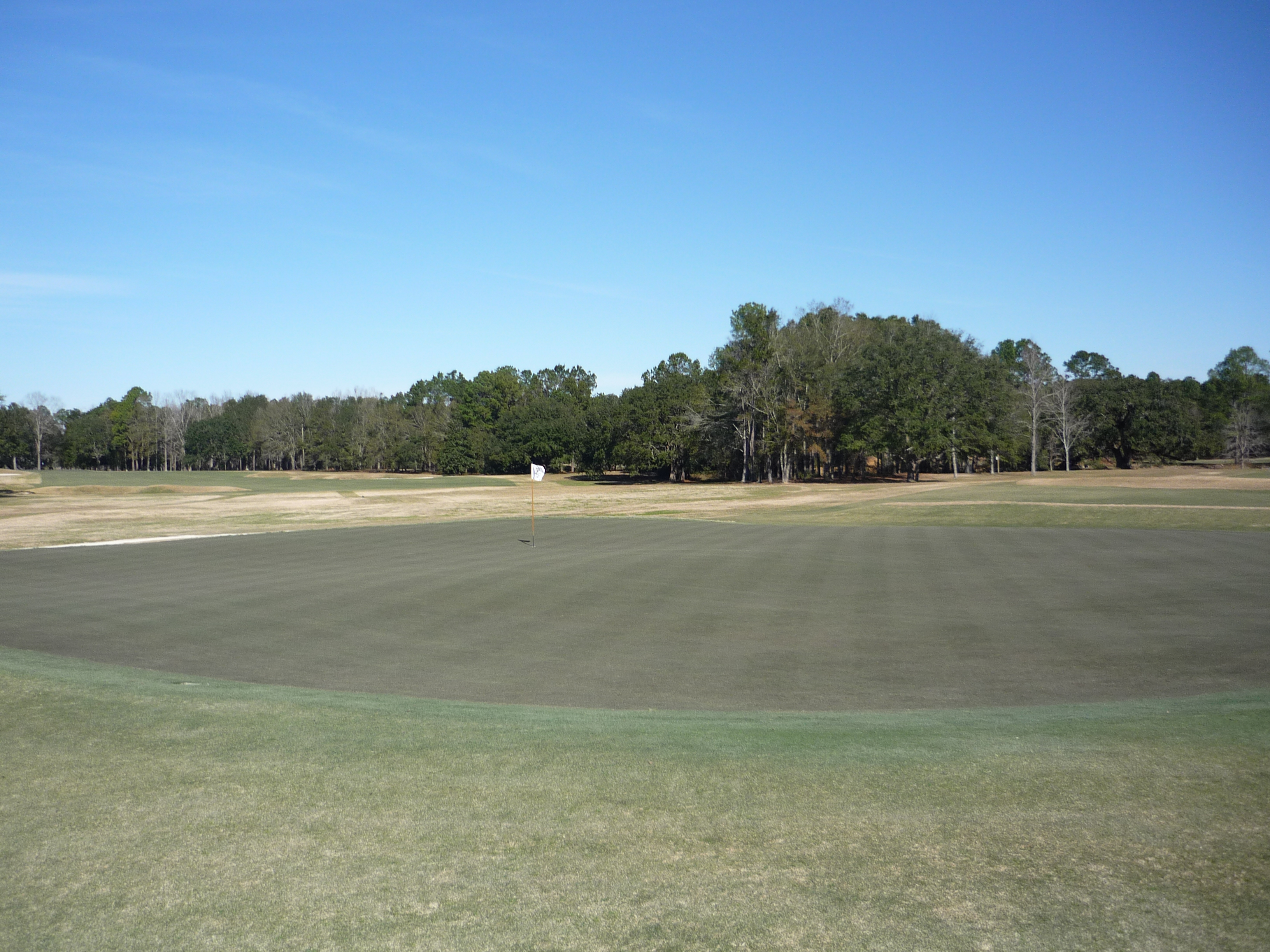
Hole 6 – 173 yards – Par 3
The Redan at Yeamans is awesome. The green extends from the front right at its narrowest and widens toward the back left. The slope of the green funnels a well played draw but the difficulty of the hole depends on the pin position.
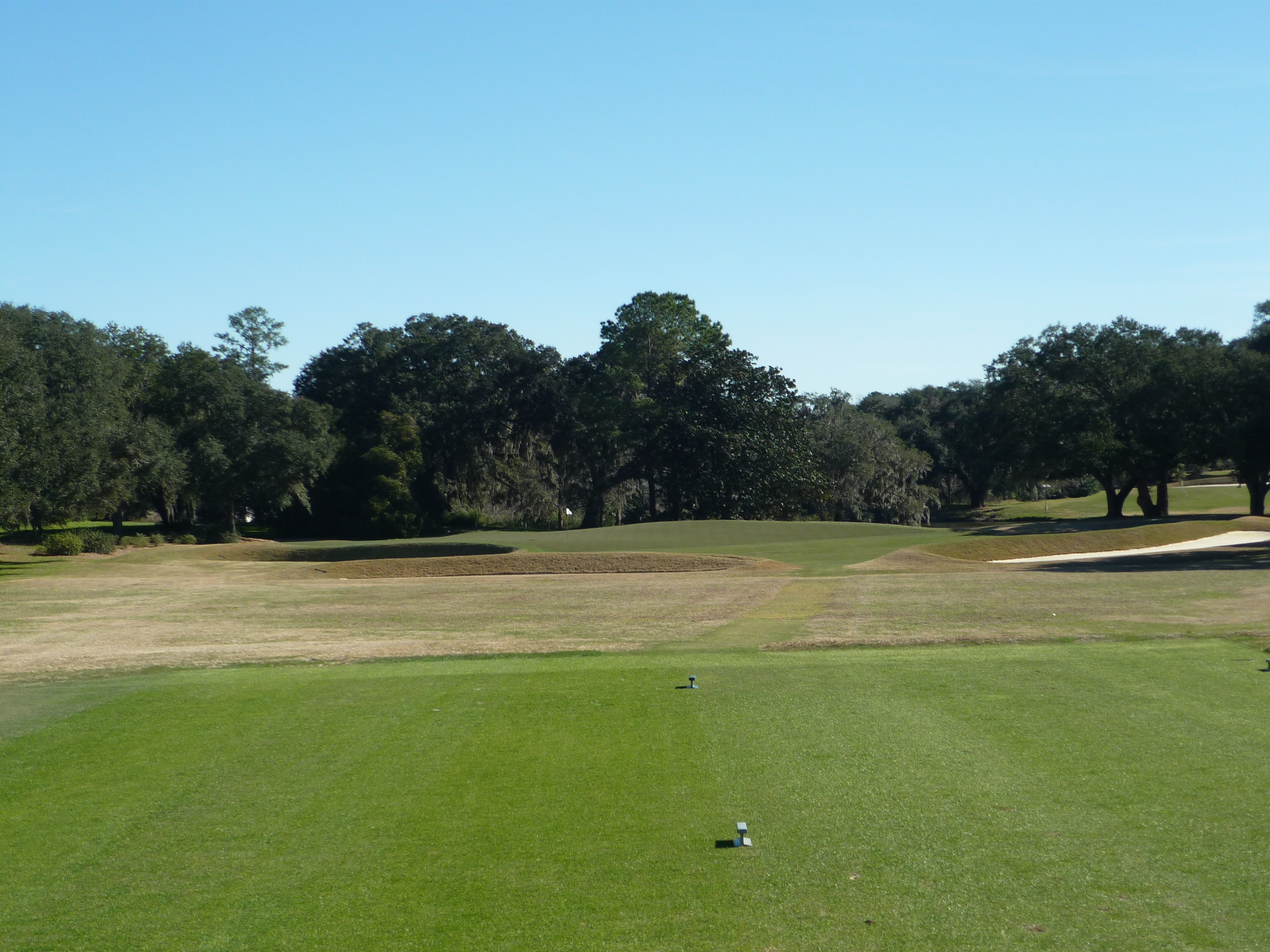
The photos below depict on of the most unique greens I’ve ever seen.
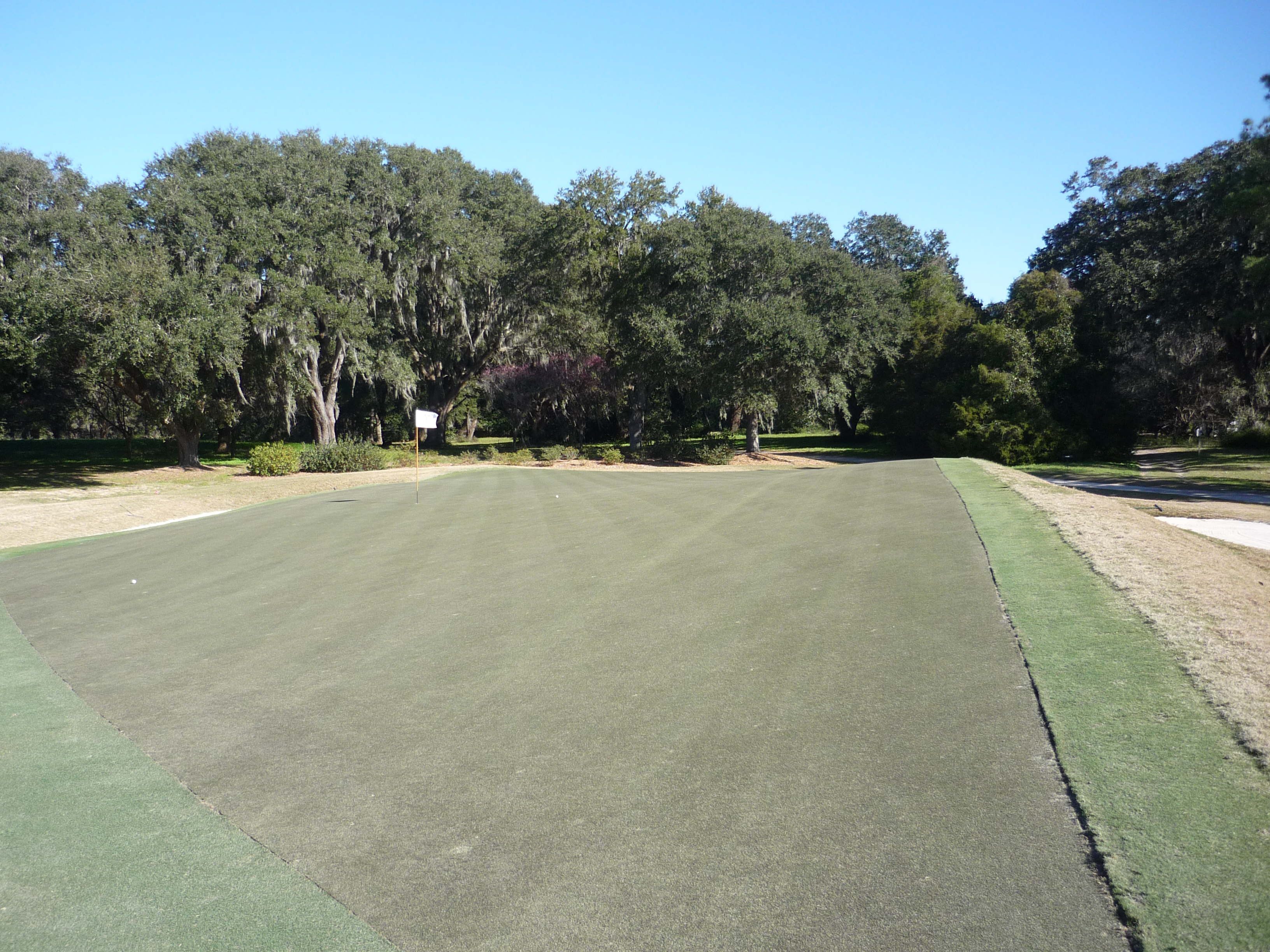
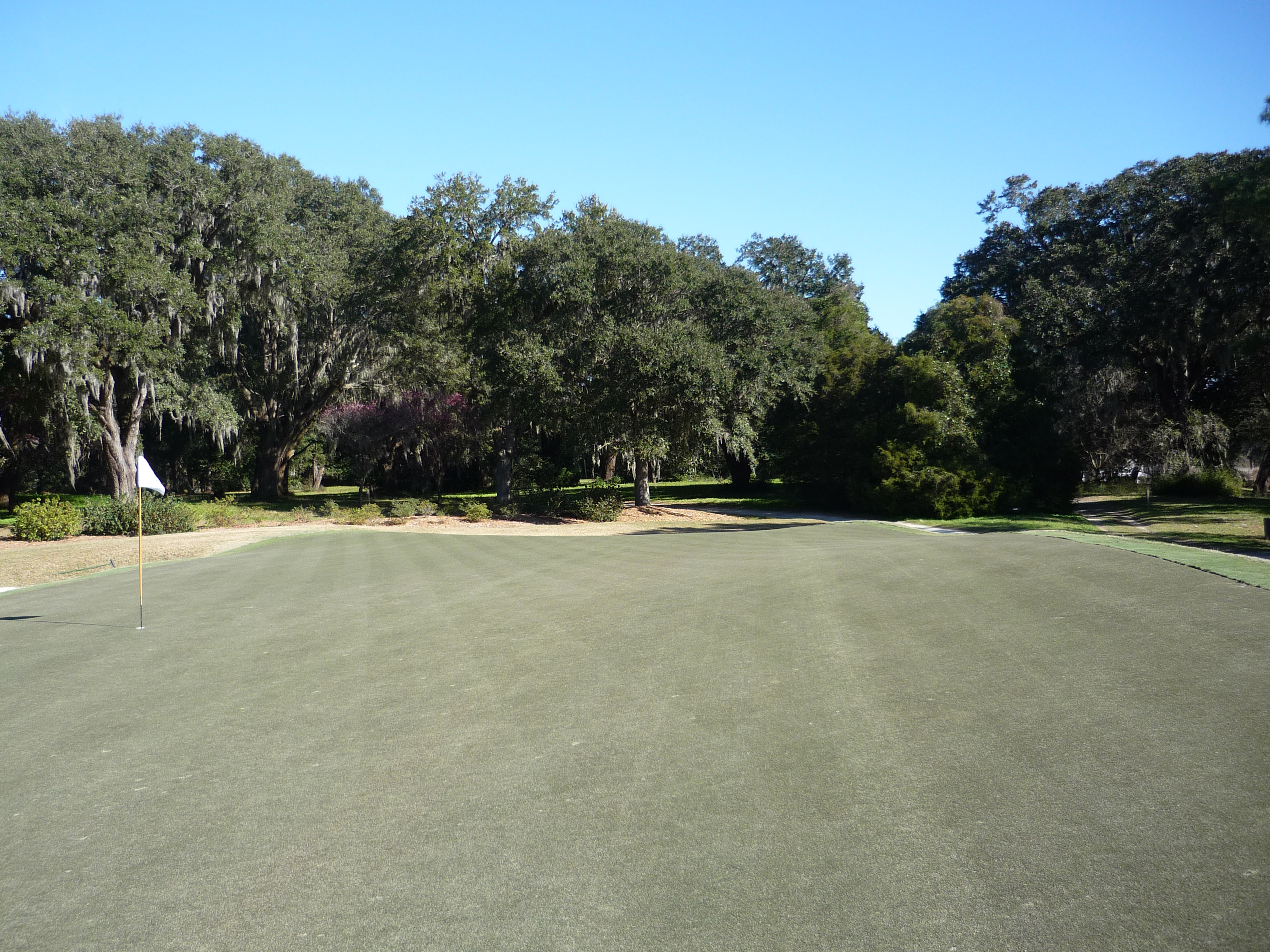
Hole 7 – 409 yards – Par 4
This is the Road Hole template with the main feature being the bunker on the front left of the green. A back right bunker takes the place of the road in St. Andrews. The water is essentially out of play with the real challenge being the uphill second shot to the raised green.
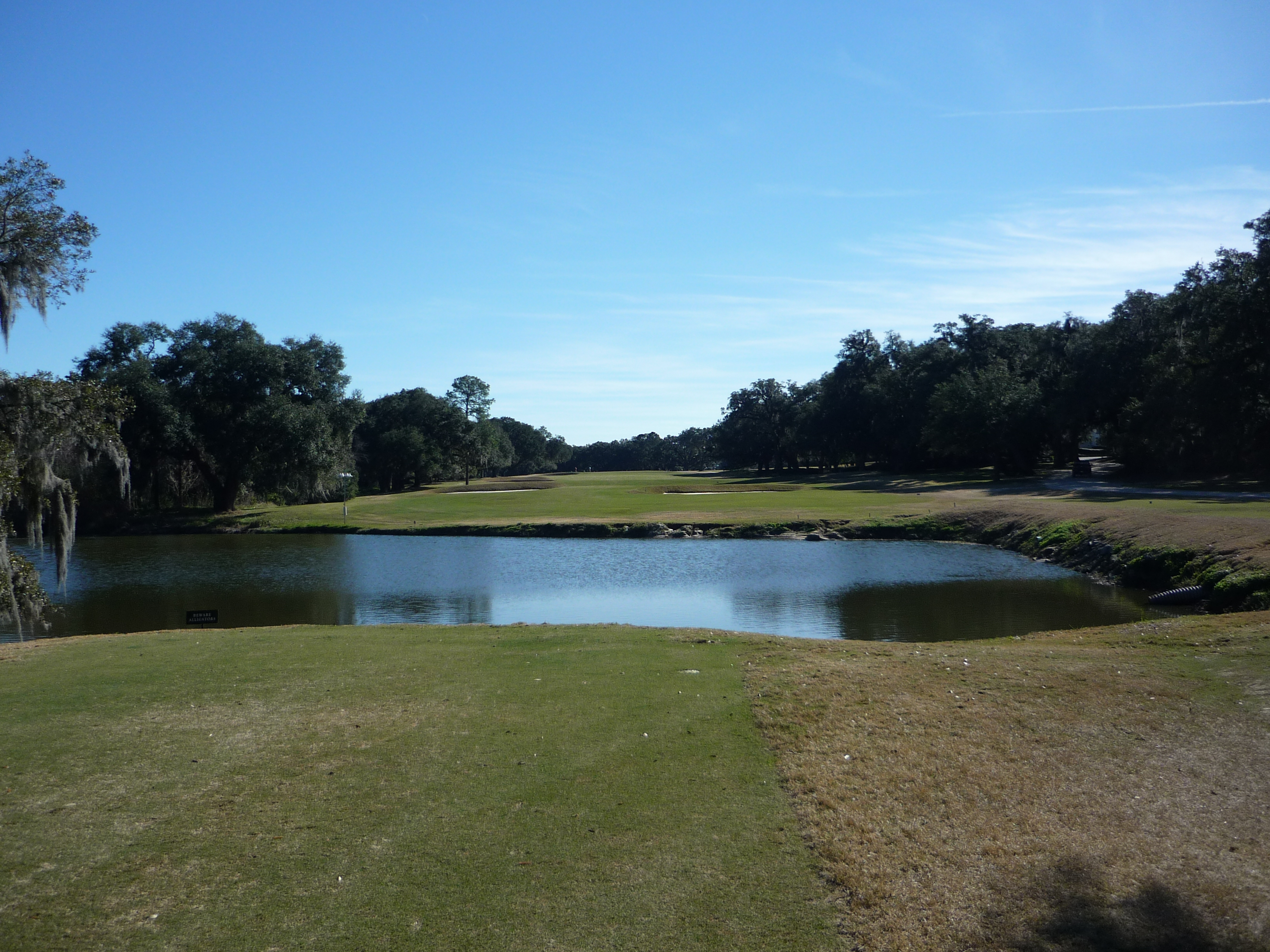
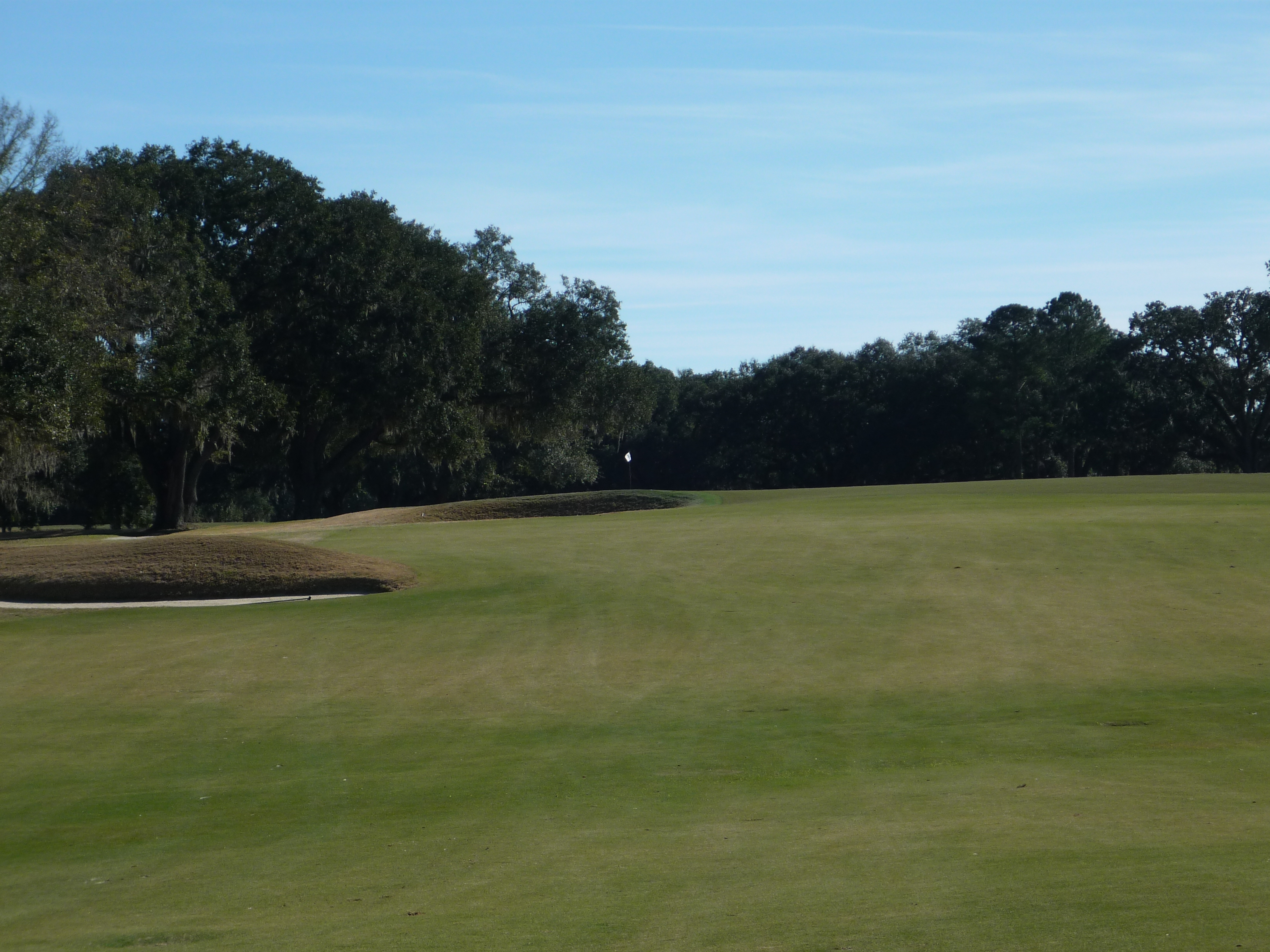
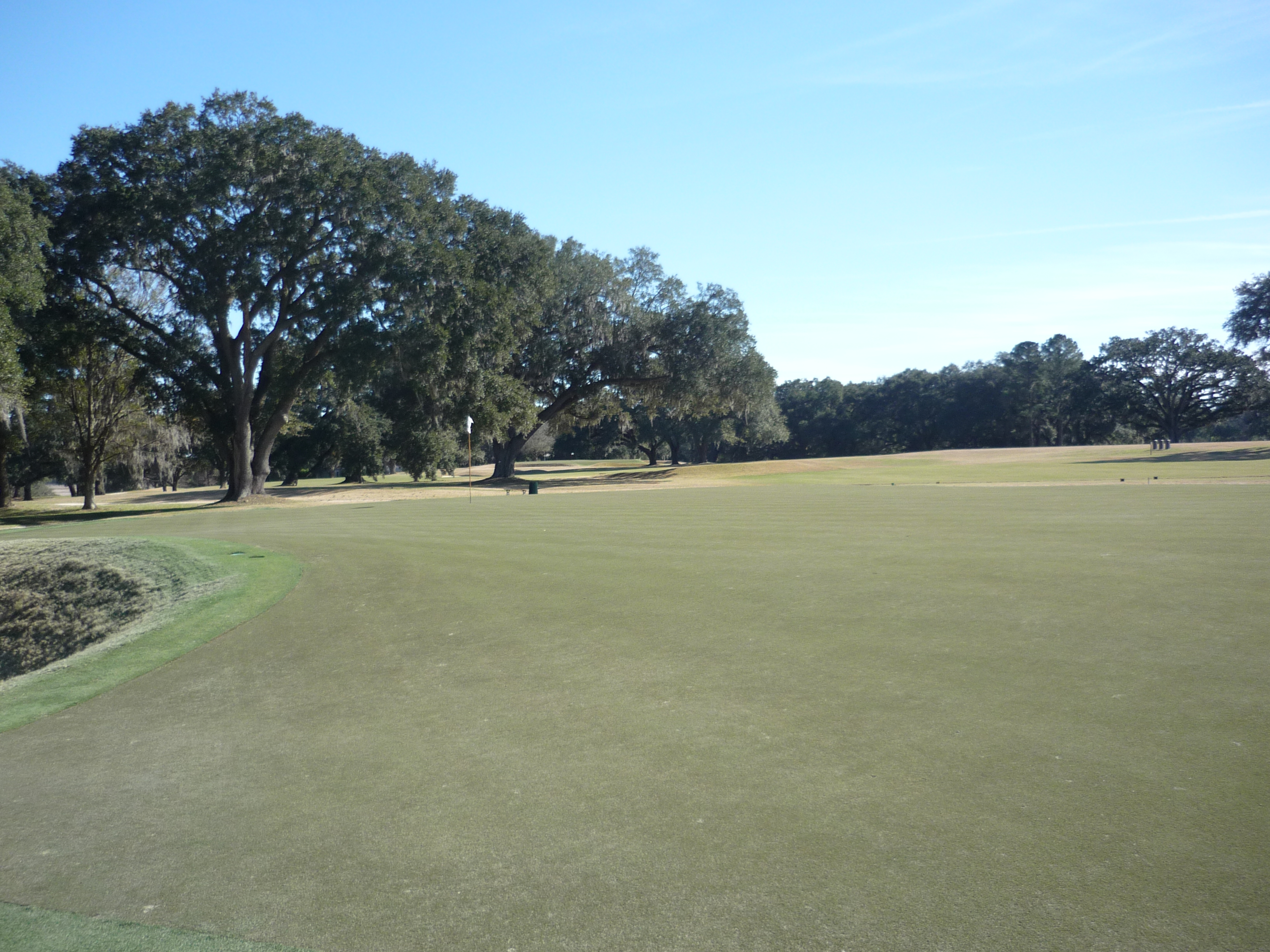
Hole 8 – 402 yards – Par 4
Your eyes will get a full test on this hole. It plays straight all the way to the green but trees draw your gaze on either side. Once you get to the approach shot the water behind the green makes an optical illusion that distorts depth perception. When paired with a large green, this hole offers up plenty of imagination even though it is dead straight.
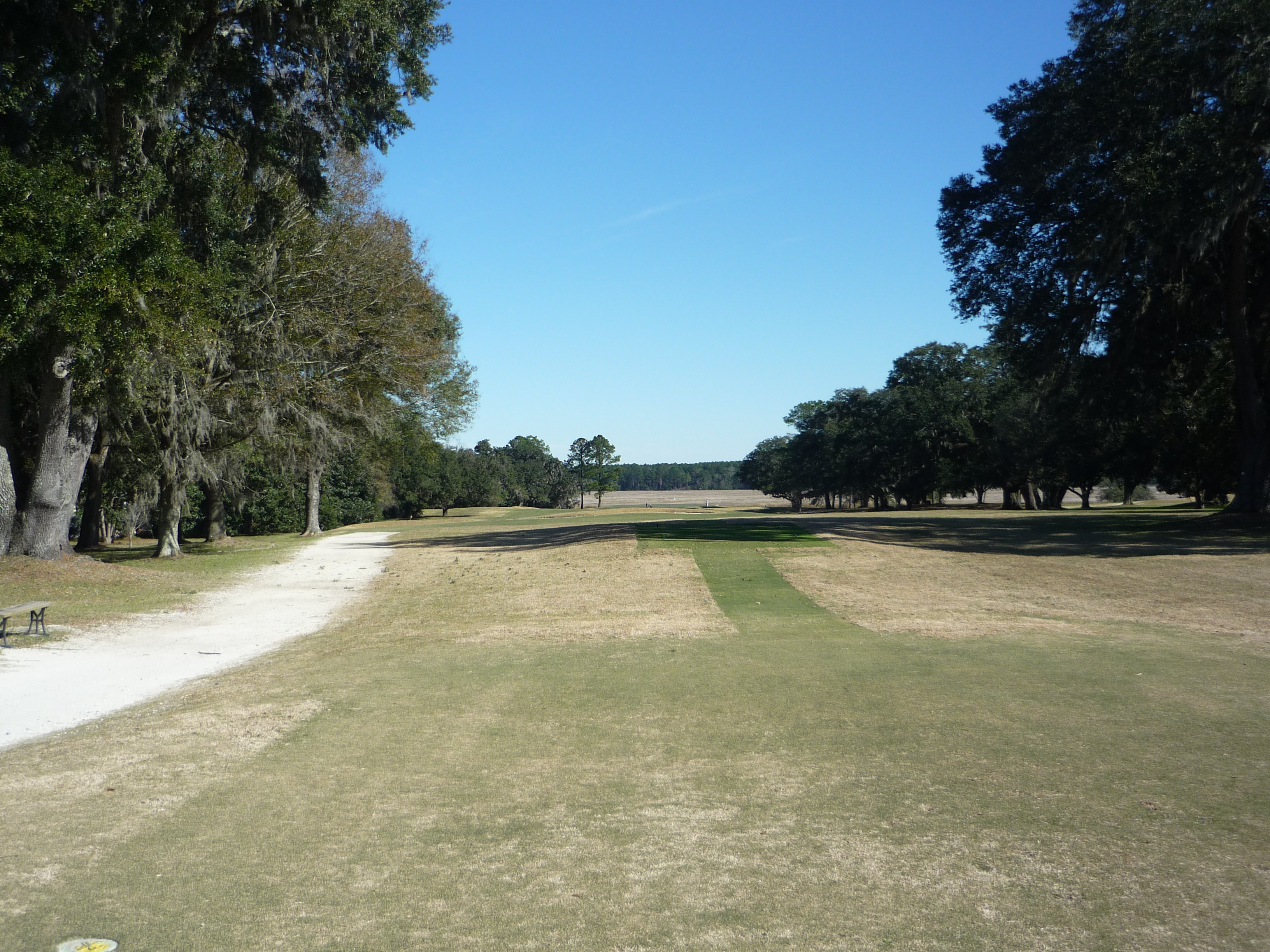
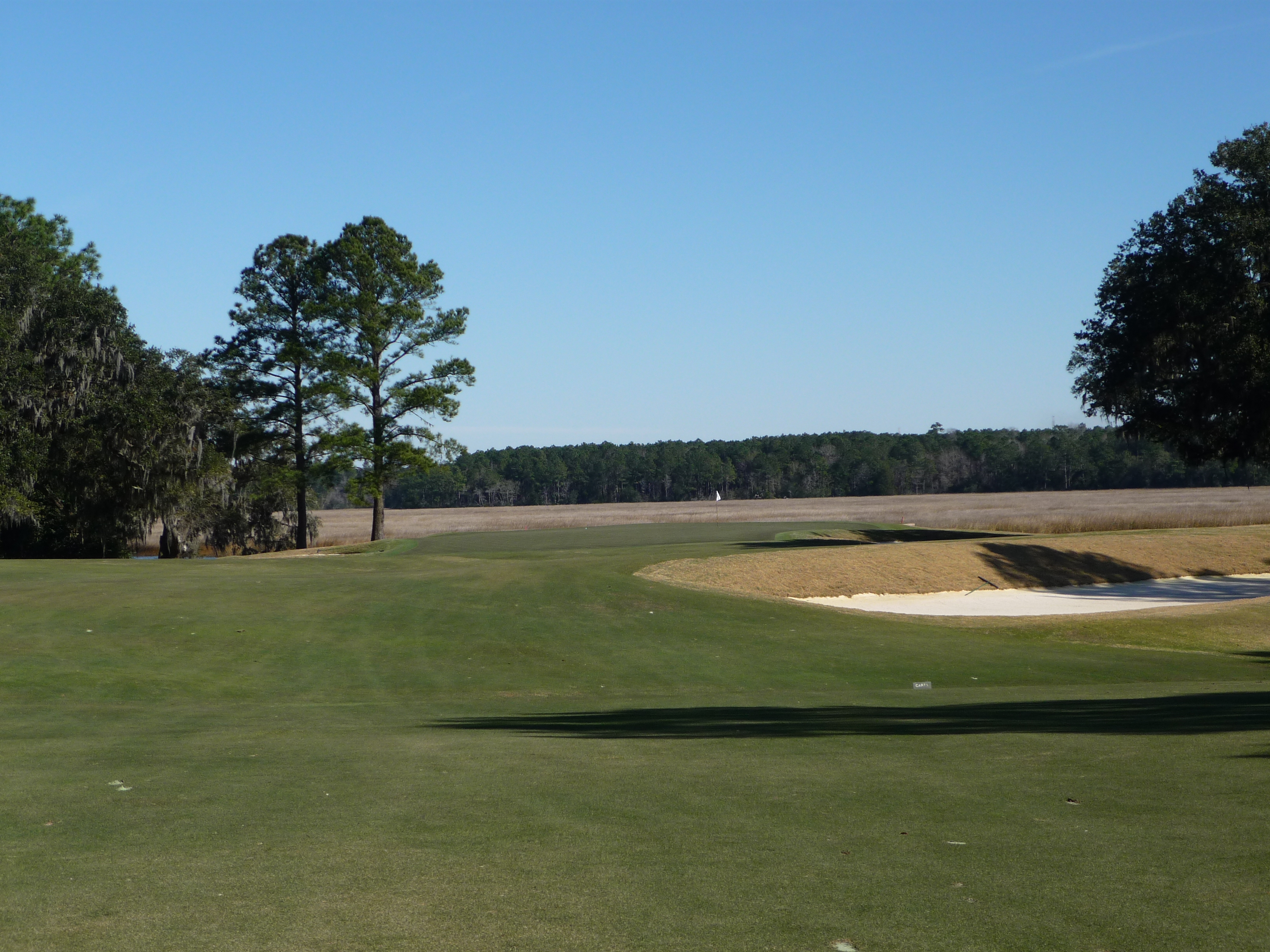
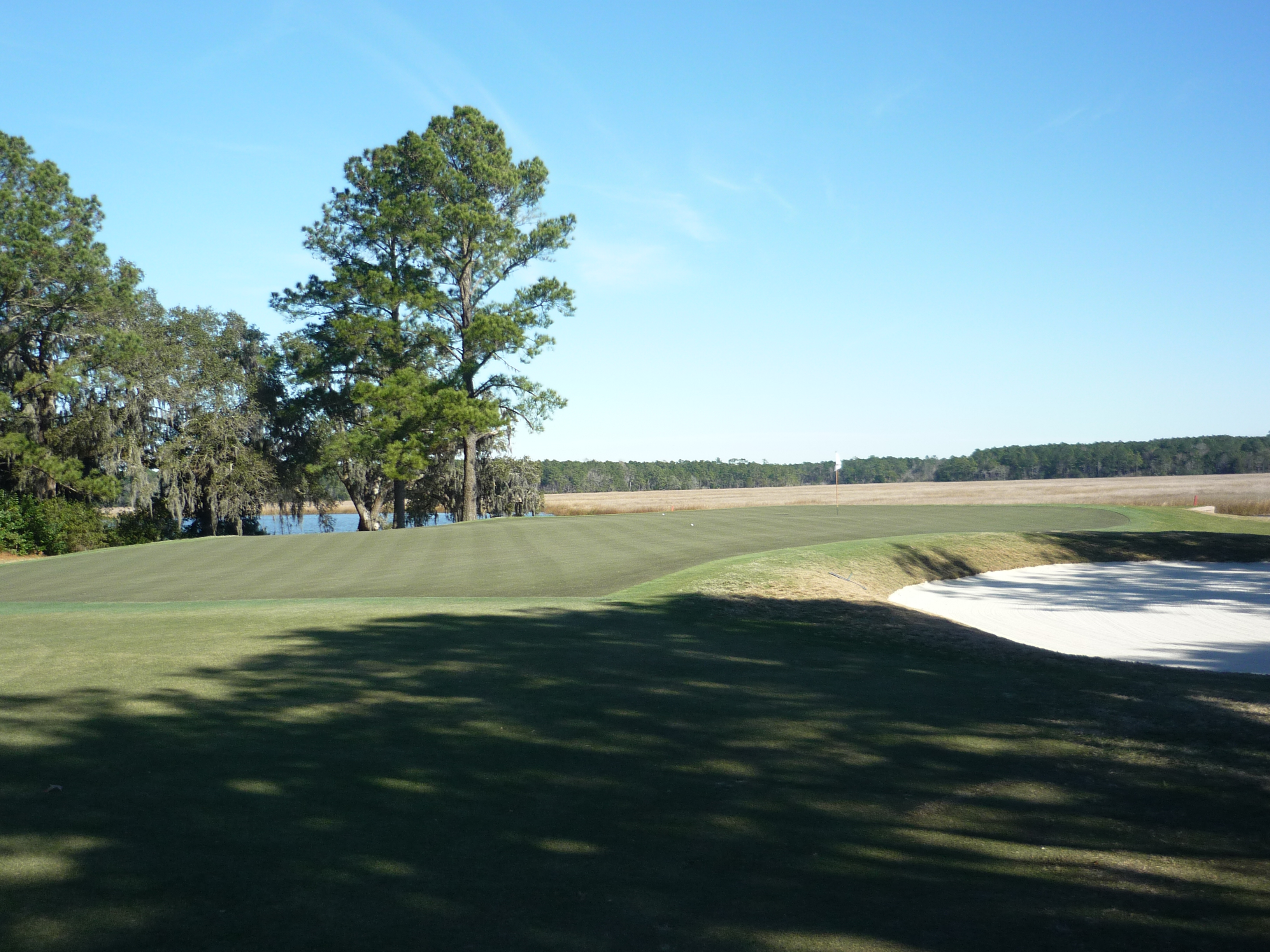
Hole 9 – 508 yards – Par 5
The bunker on the right calls for a fade on this tee to set up a chance to get home in two. The severe slope in the front section of the green makes for difficult approach shots with a wood or a wedge.
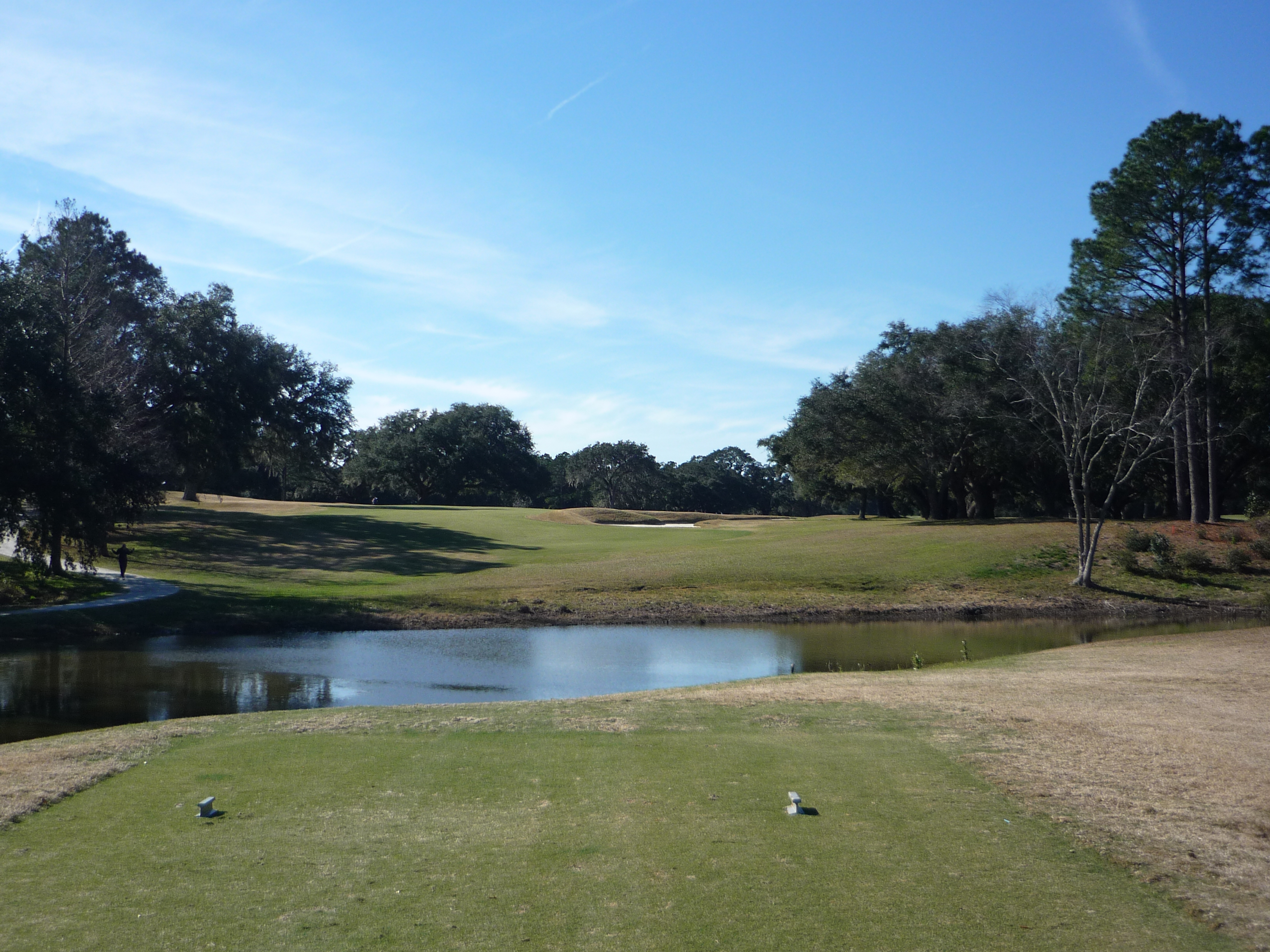
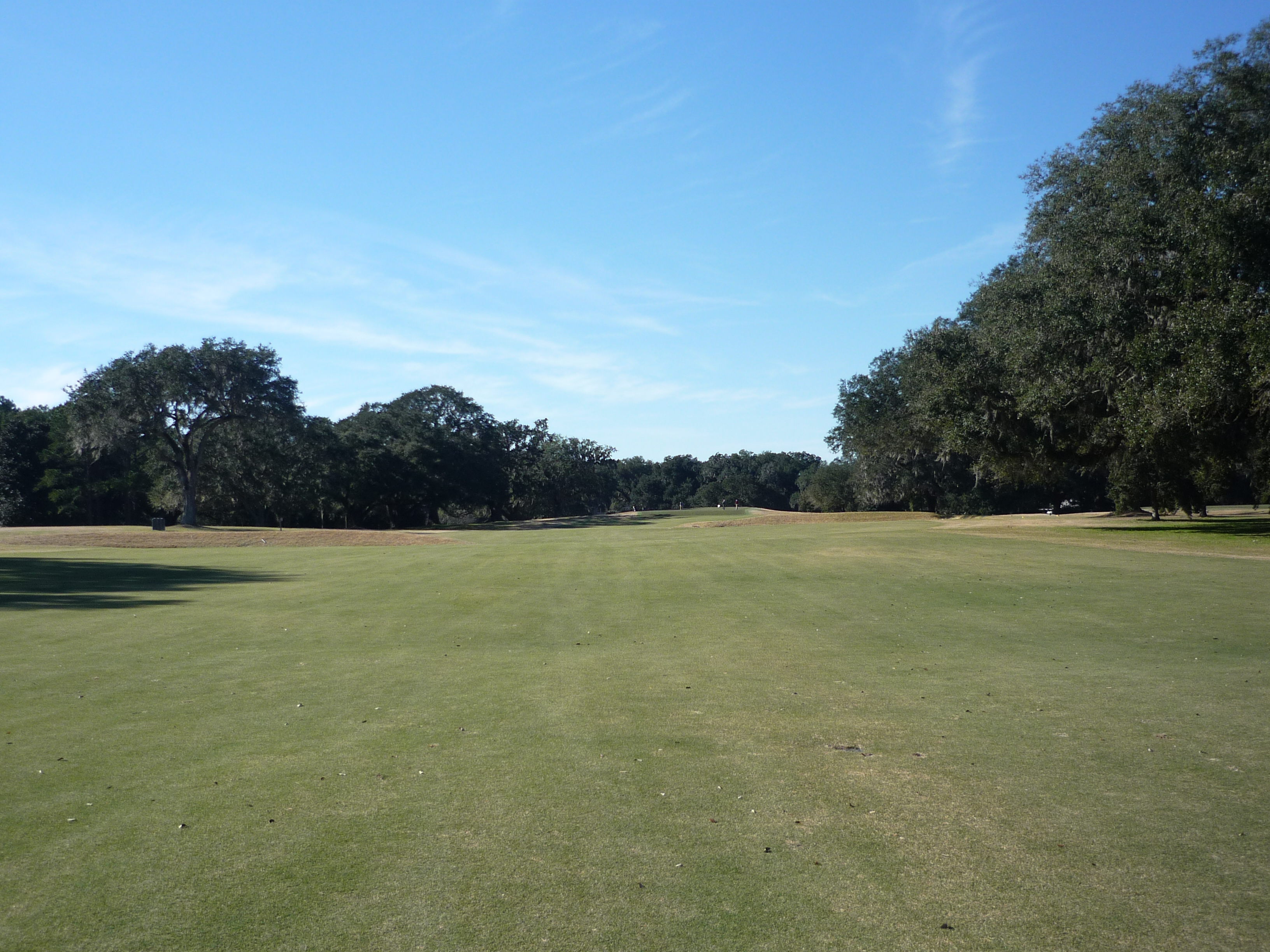
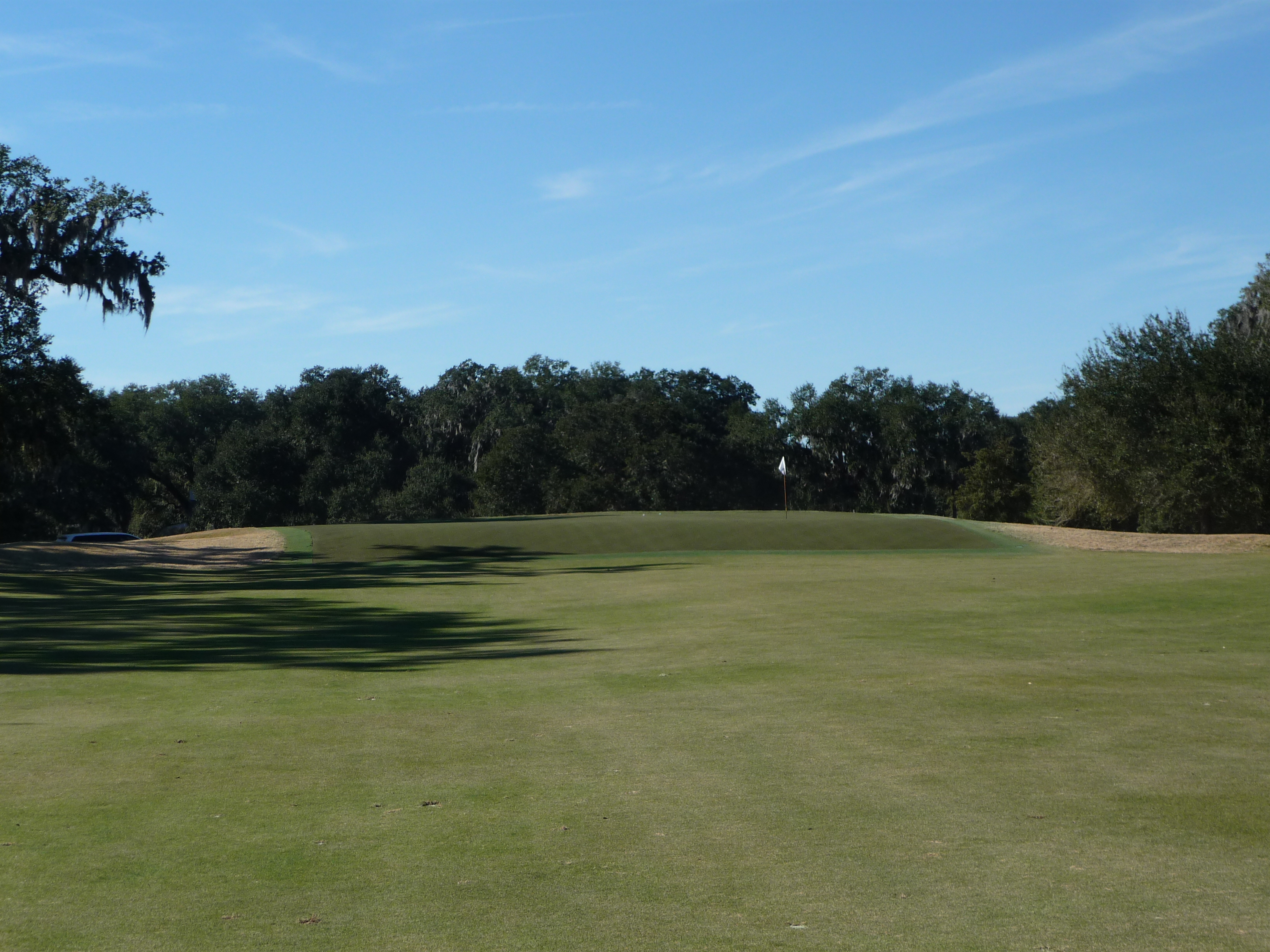
See what I mean on the slope?
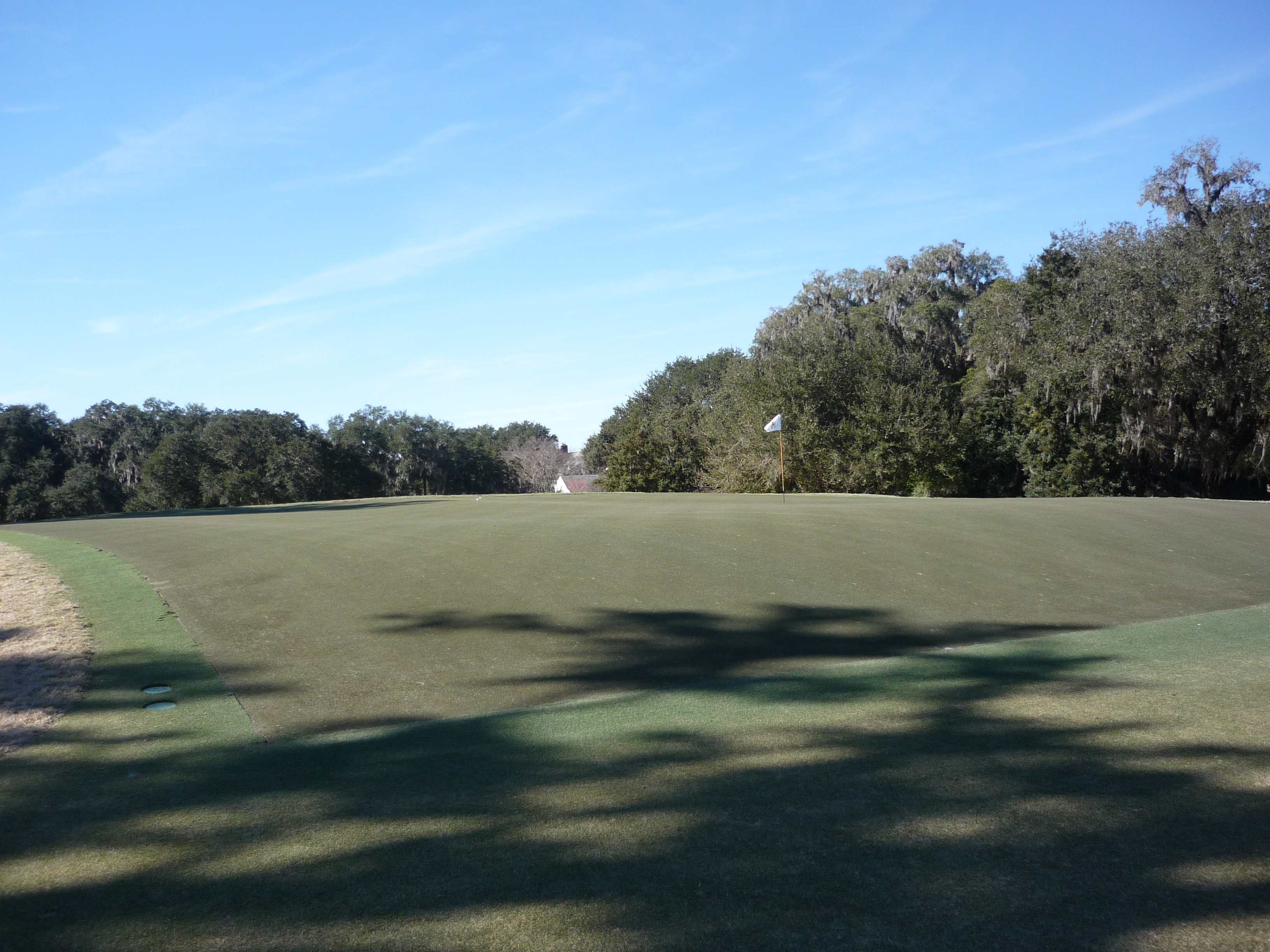
Hole 10 – 339 yards – Par 4
I quite liked this hole that looks unassuming from the tee. Tee shots should be placed on the left side of the fairway for the best angle to the green. The real fun comes with the approach shot.
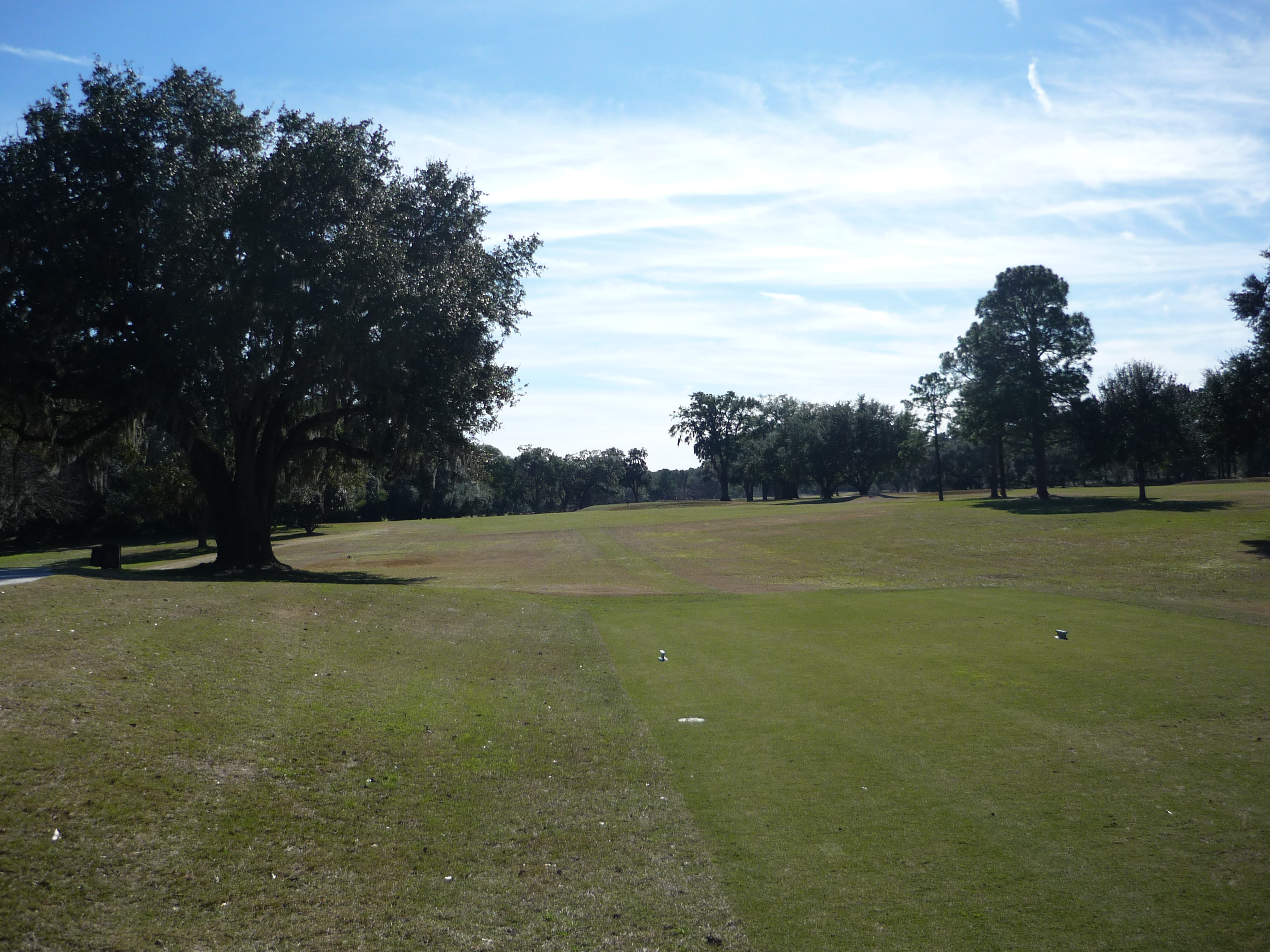
Trees can block out shots coming from the right side. In addition, a deep bunker guards the front right of a green that angles from left to right. Precision with your second shot is critical here.
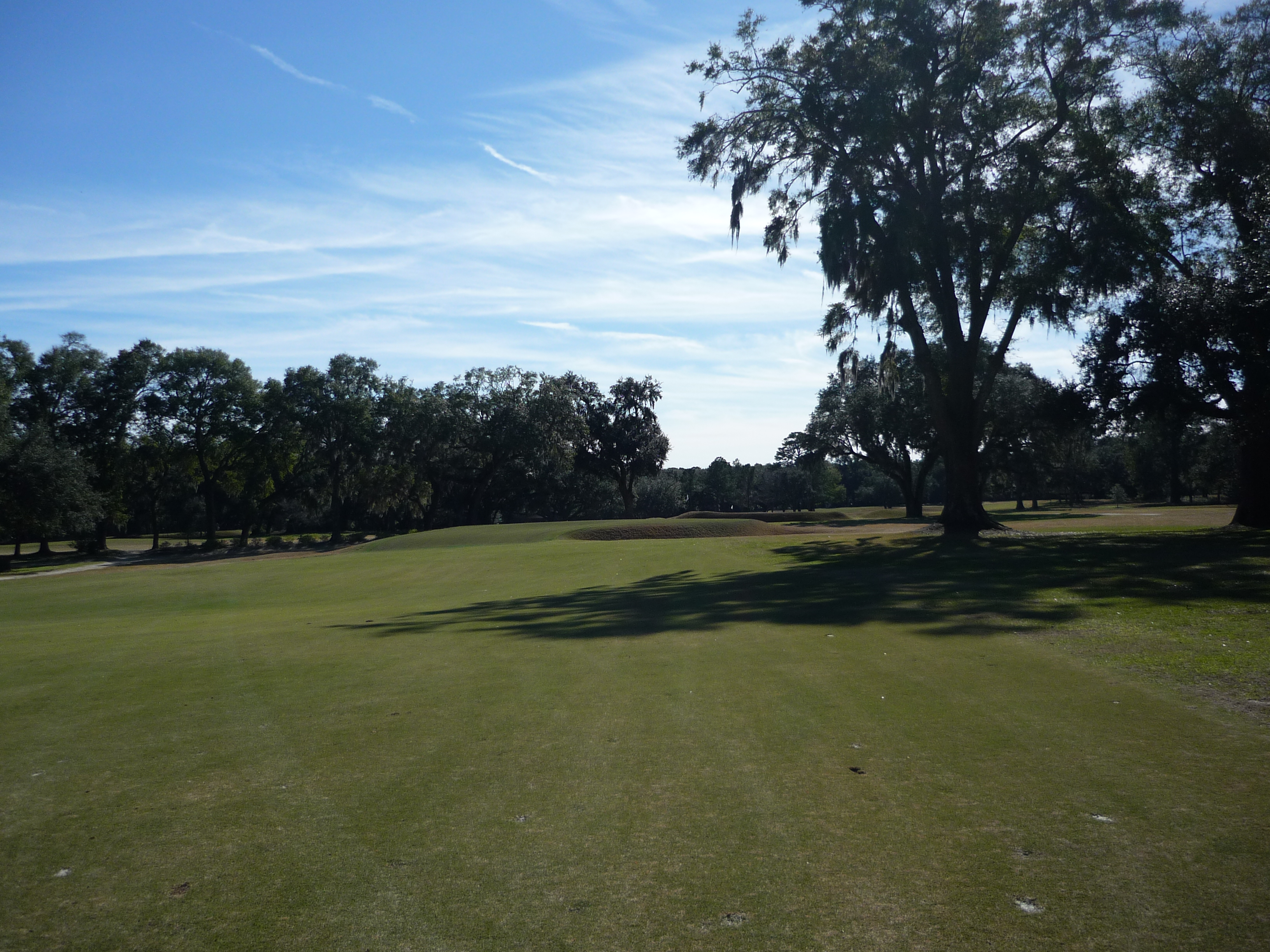
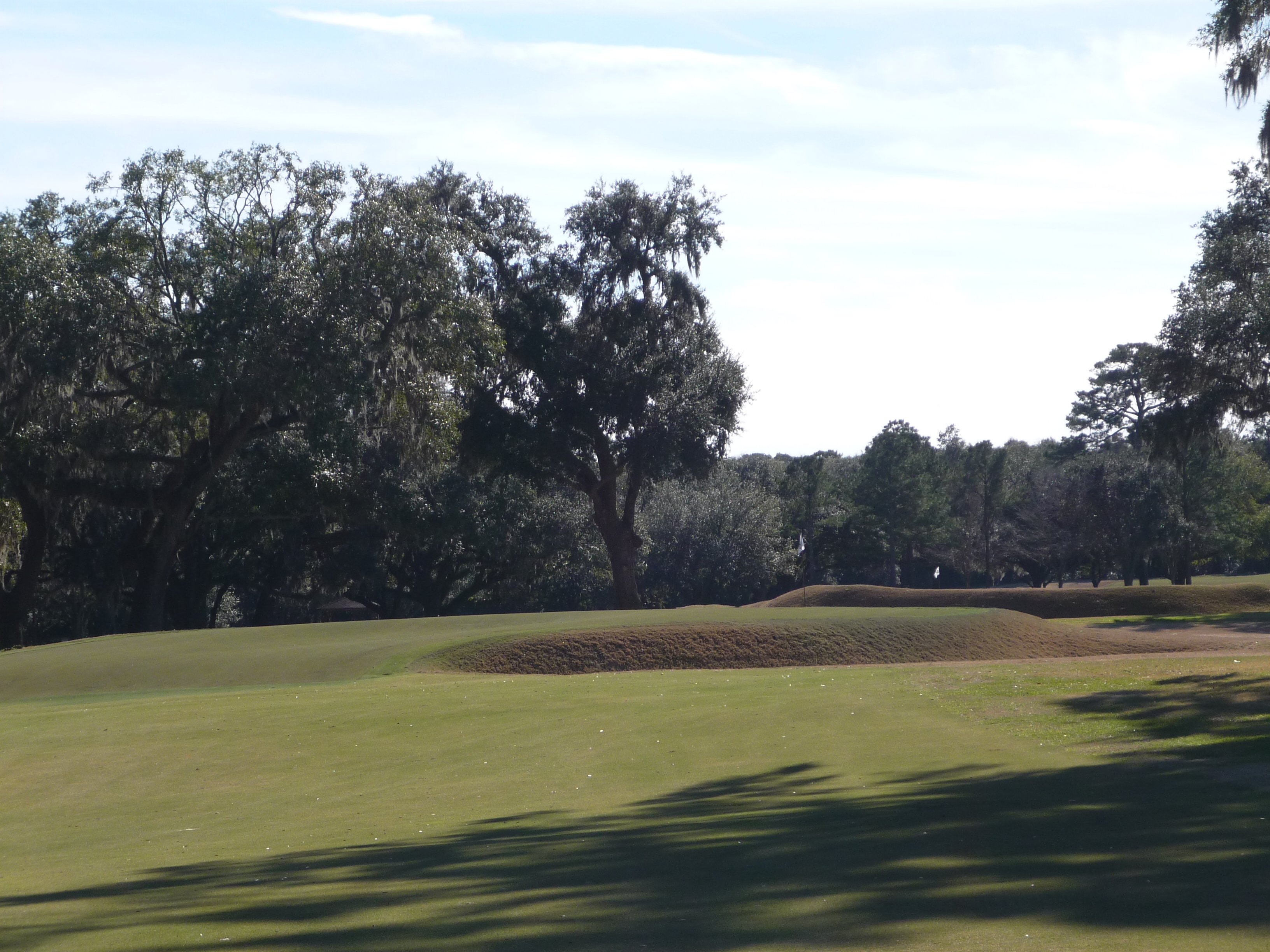
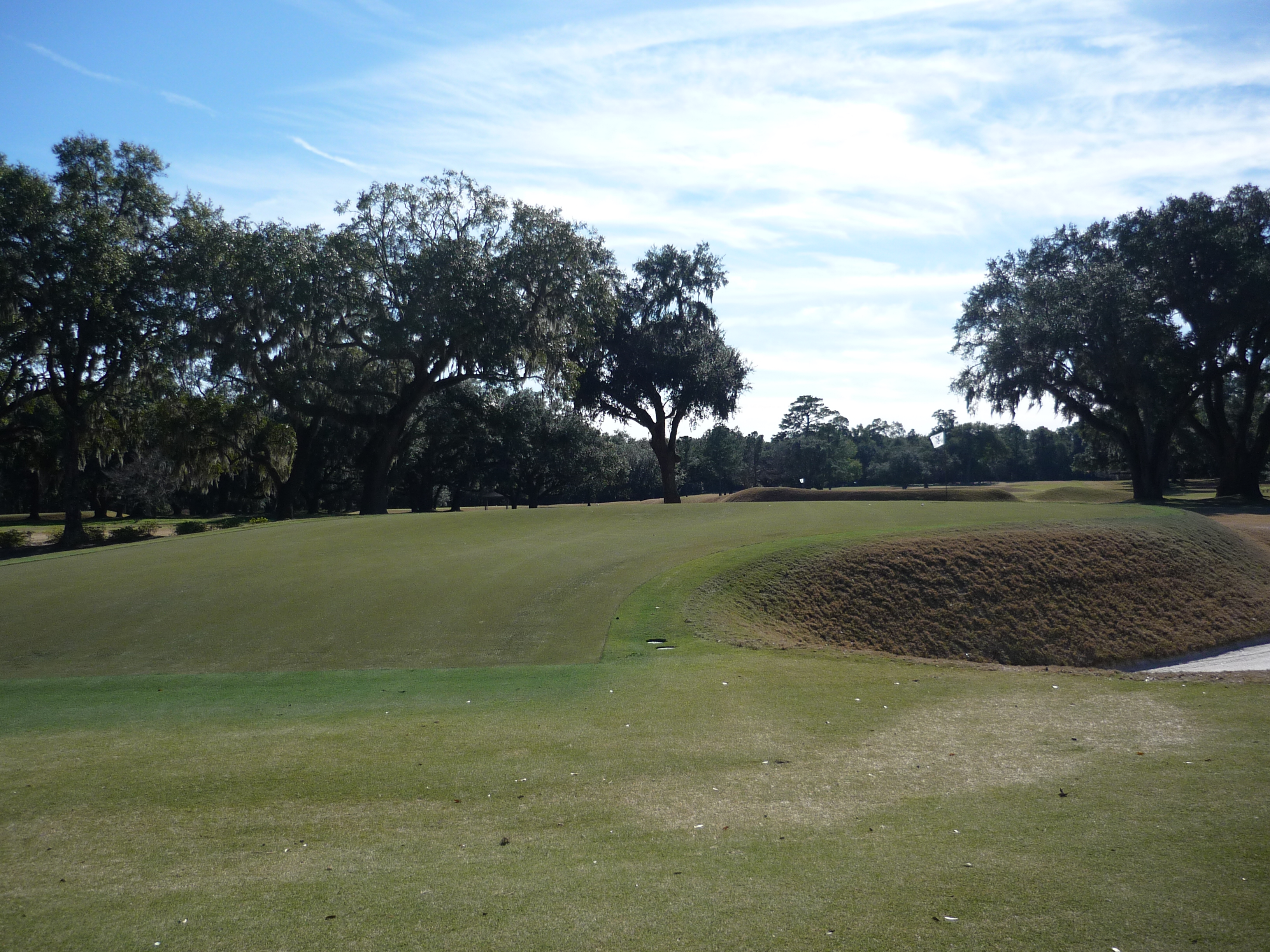
Hole 11 – 392 yards – Par 4
This view is more expansive than it has been in the past due to extension tree removal that one of my hosts detailed to me. Fairway bunkers add to the fun but the real star on this hole is the heavily contoured putting surface.
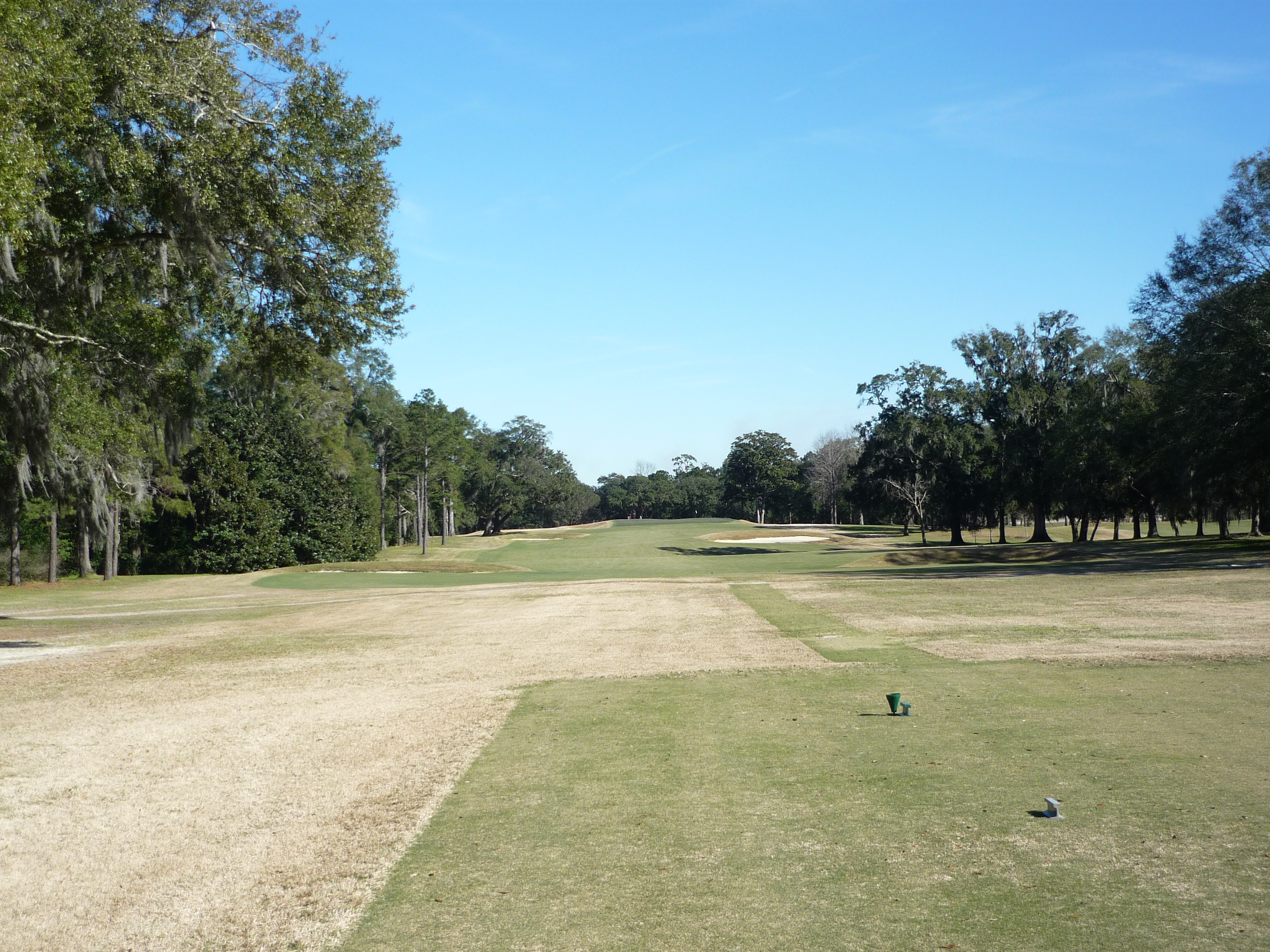
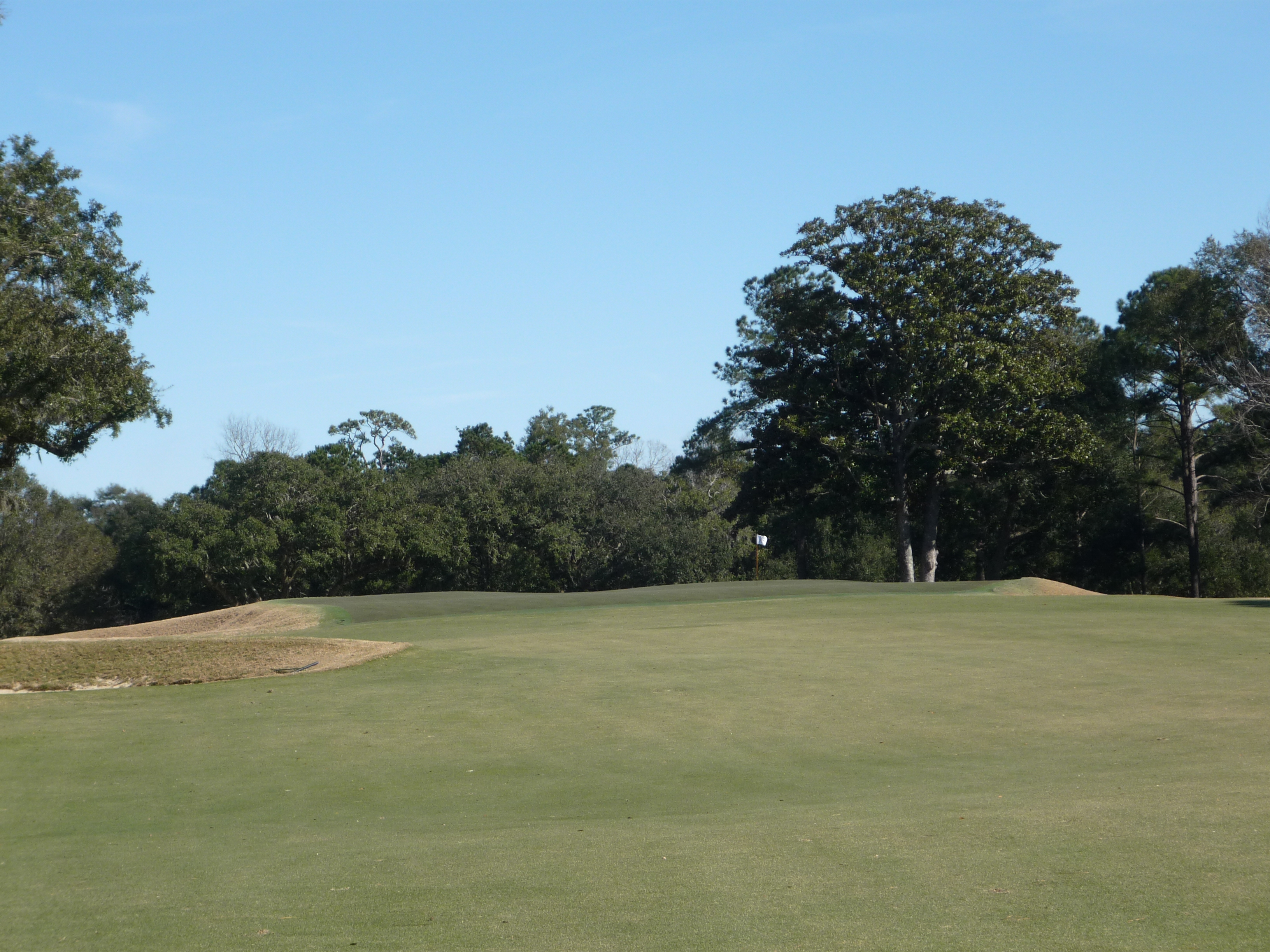
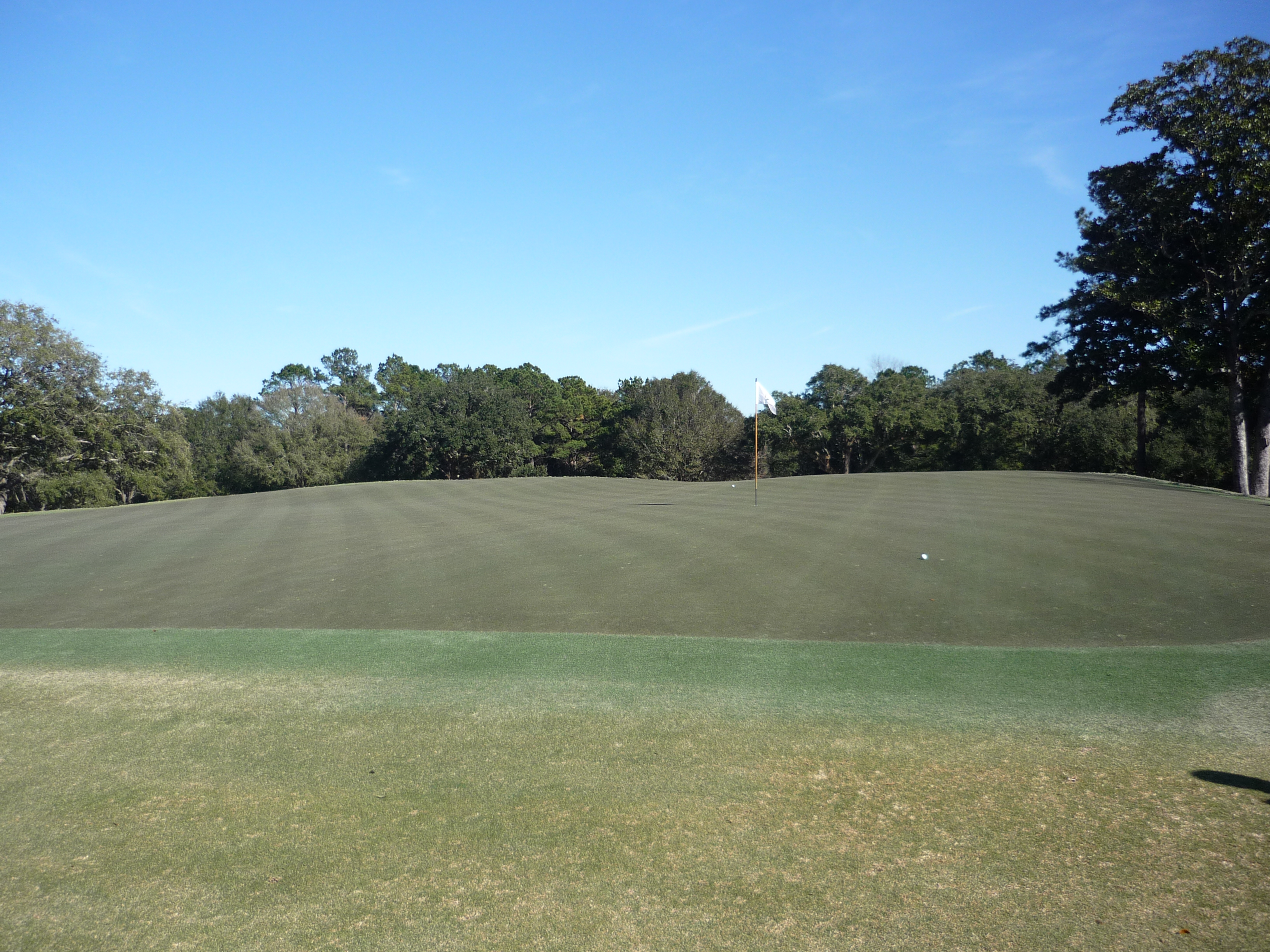
Hole 12 – 336 yards – Par 4
A fairway bunker on the left makes you think on your tee shot but it should be one of the easier shots to execute.
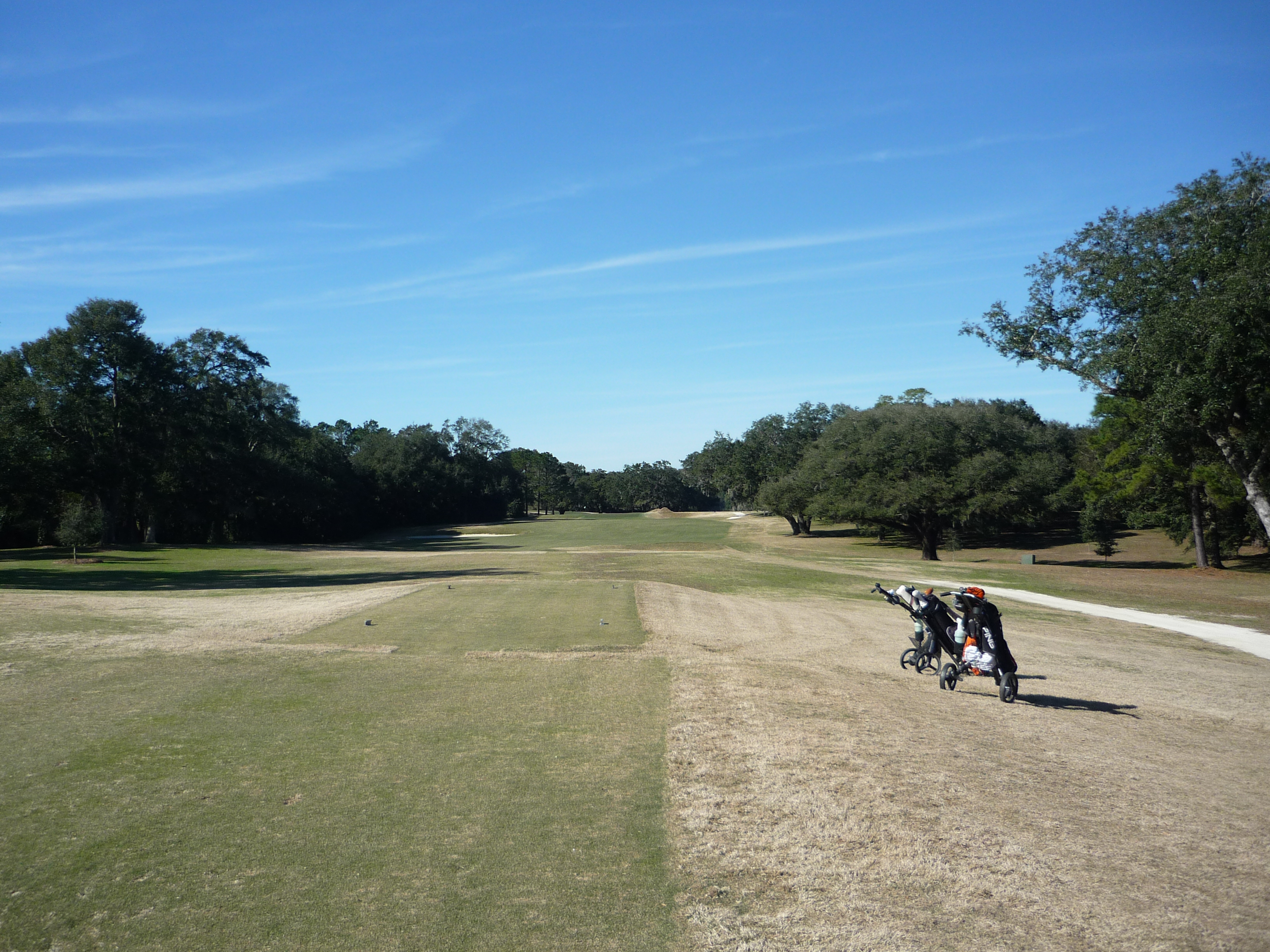
The second shot ratchets up the difficulty. The green, one of the smallest, is guarded on the right by a deep bunker and gum drop mounds with deep rough. Oh, don’t forget about the bunker long either!
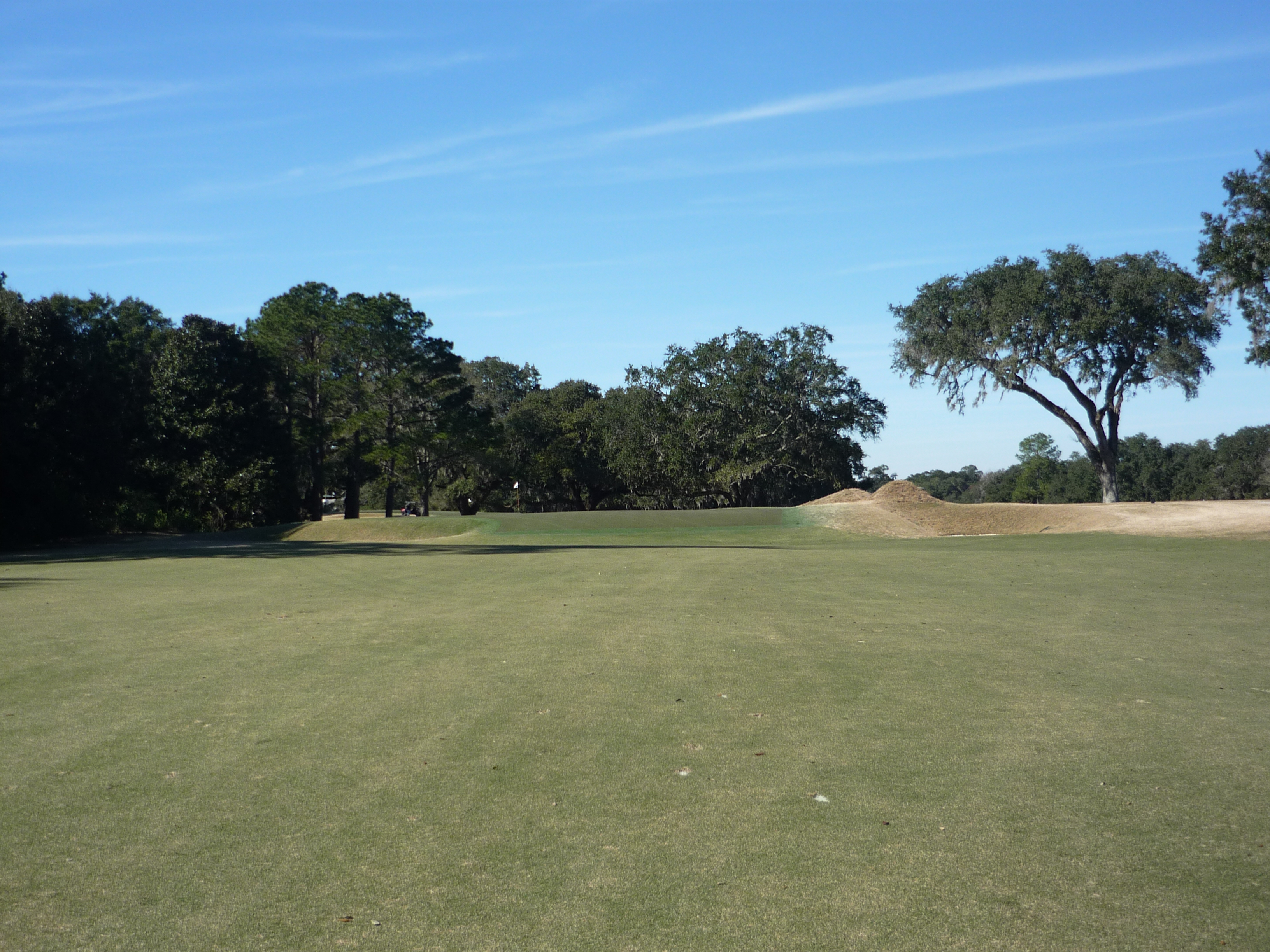

You just don’t see green complexes like this anywhere else. Splendid!
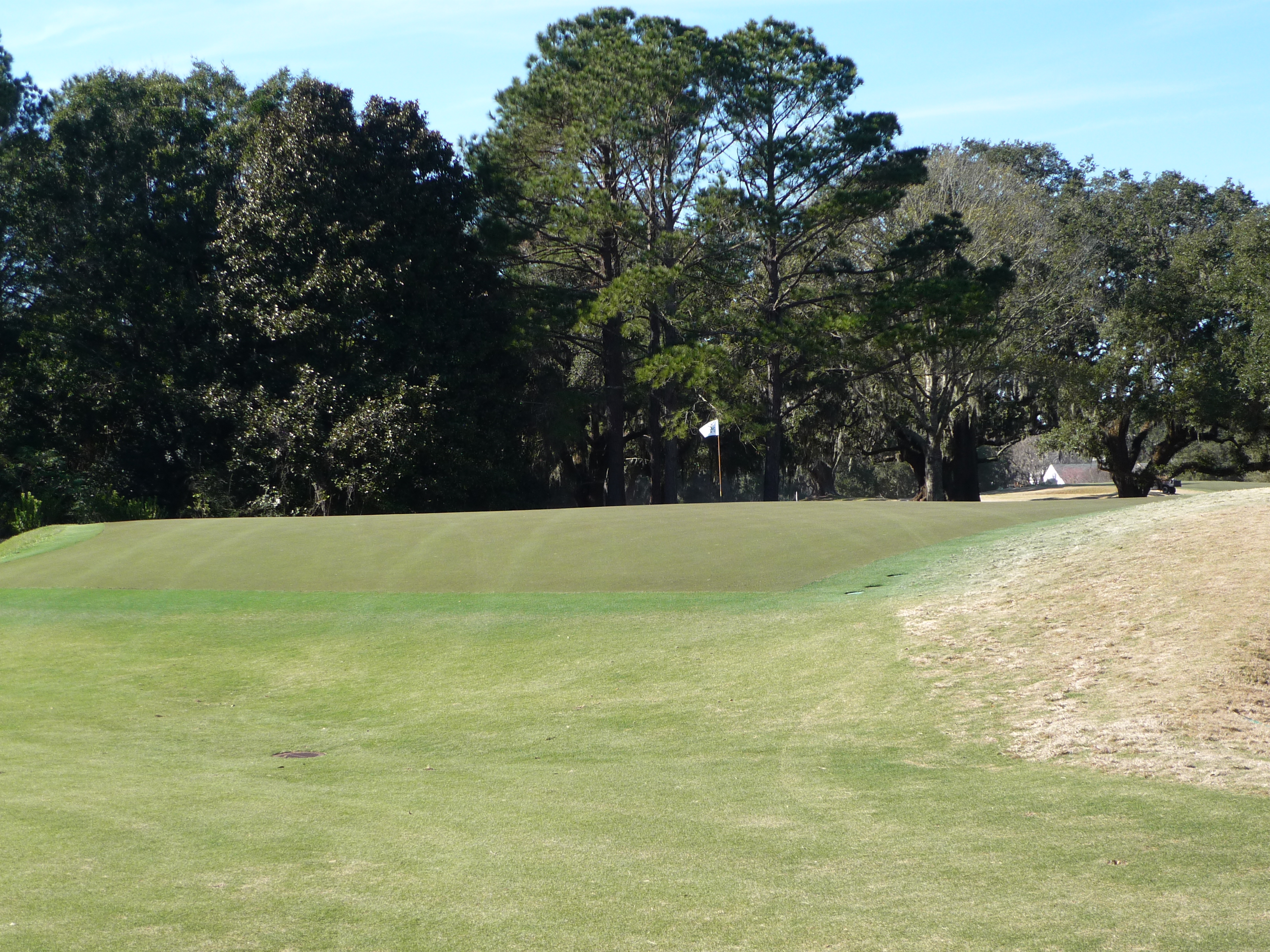
Hole 13 – 161 yards – Par 3
The Eden template is put to use here and the shot is made more difficult by the winds whipping through this corridor. The main objective is to avoid the bunkers on either side of the green.
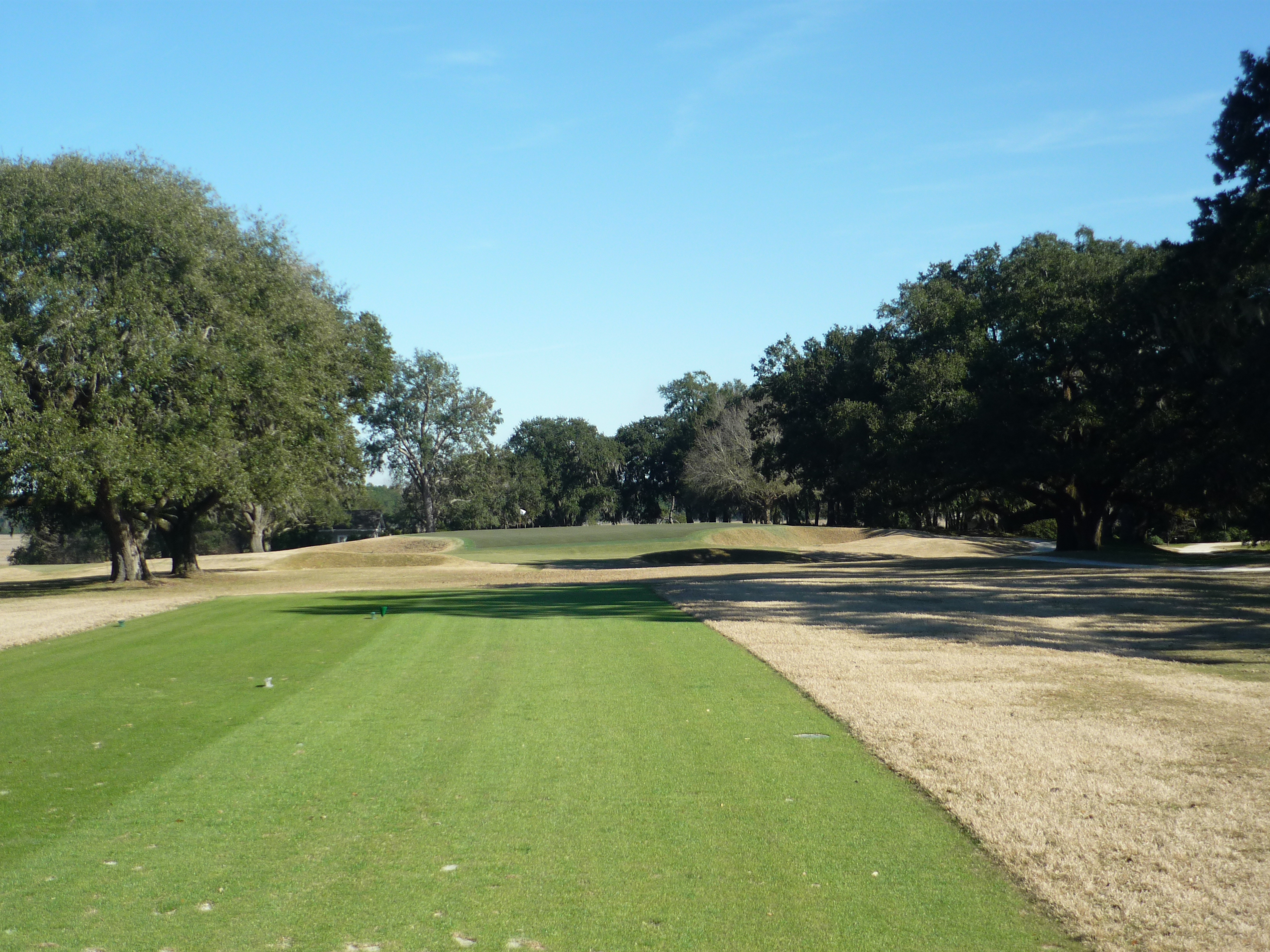
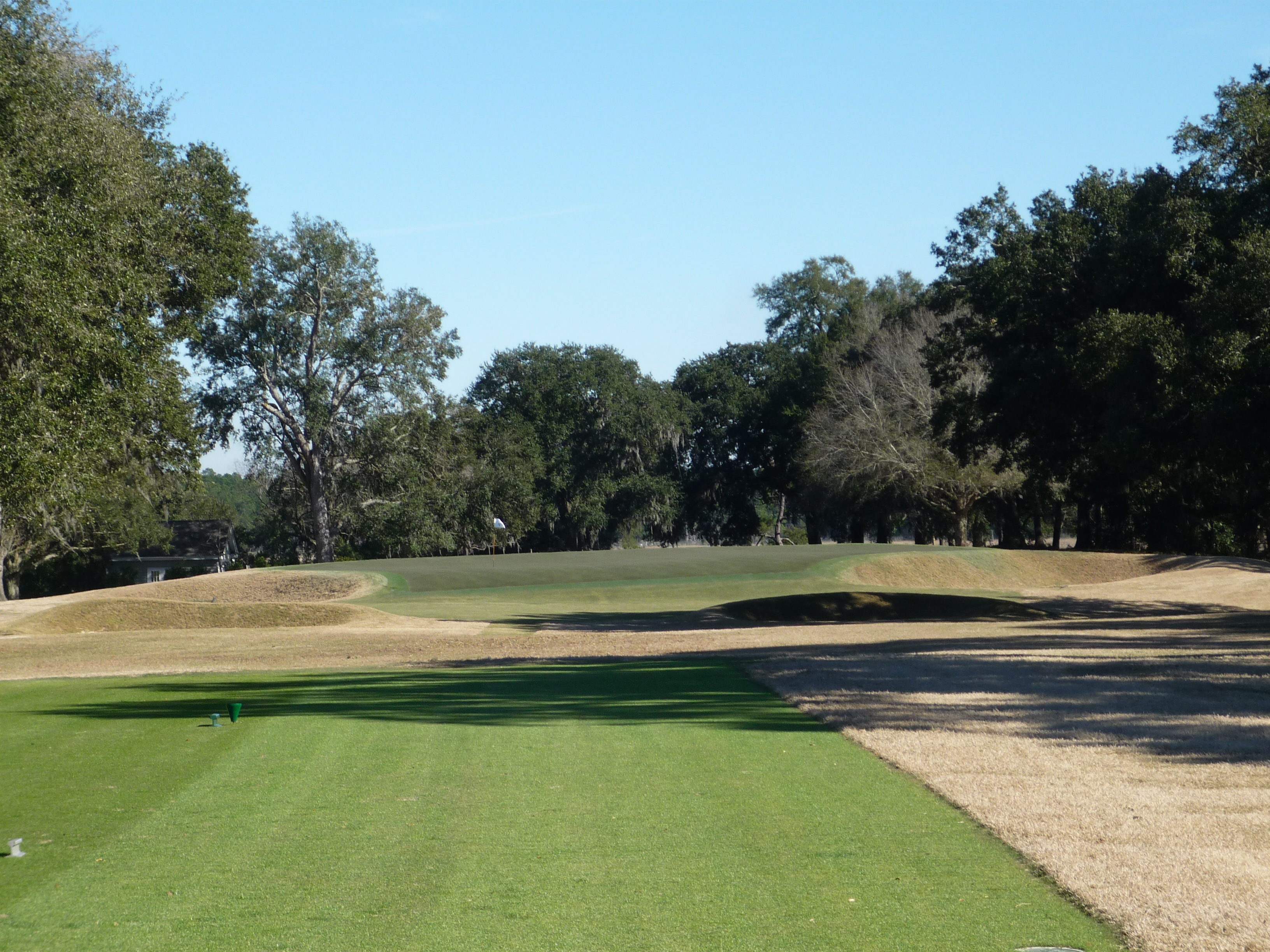
This pin was set just behind the false front and made for some devilish chips.
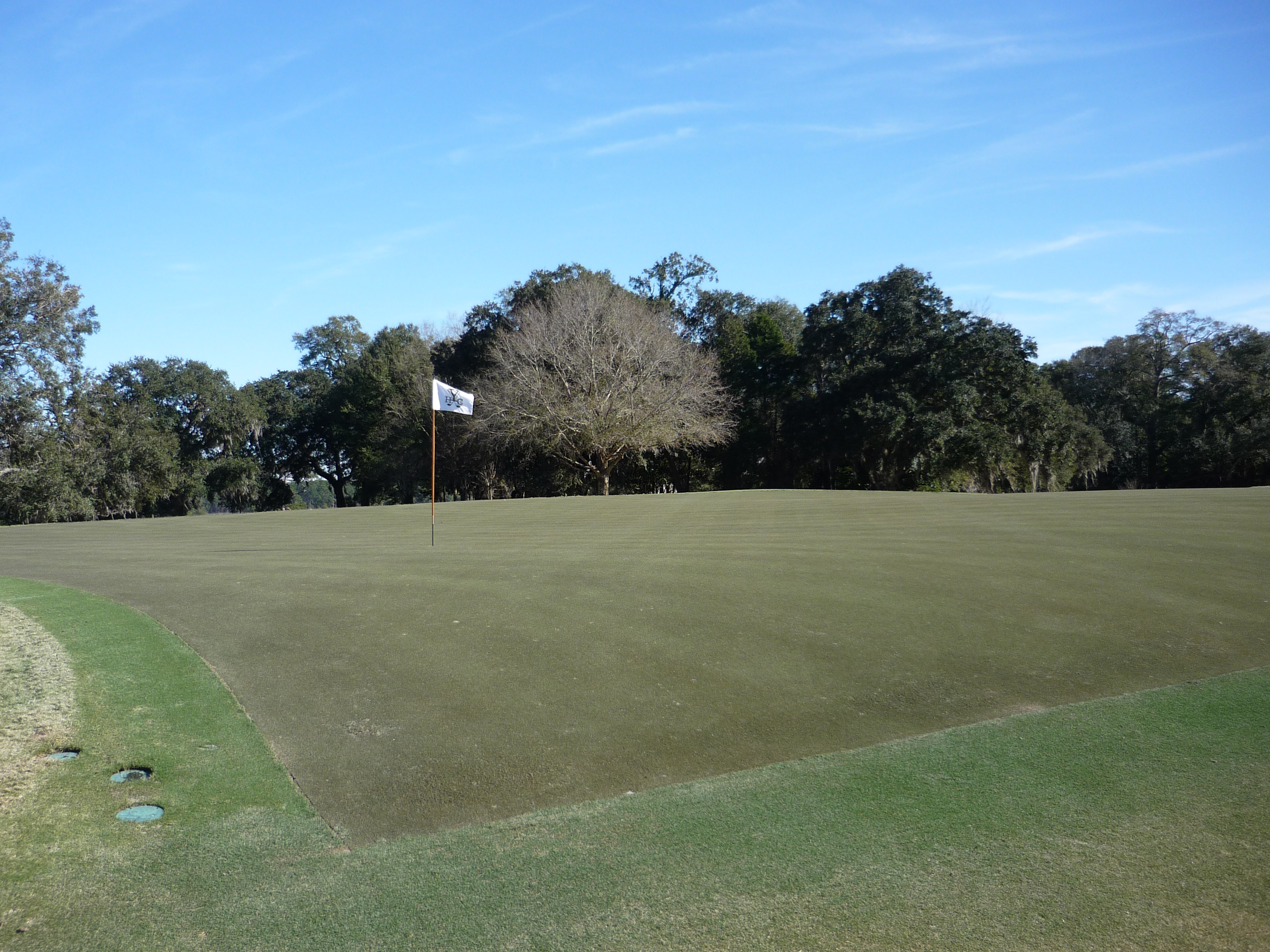
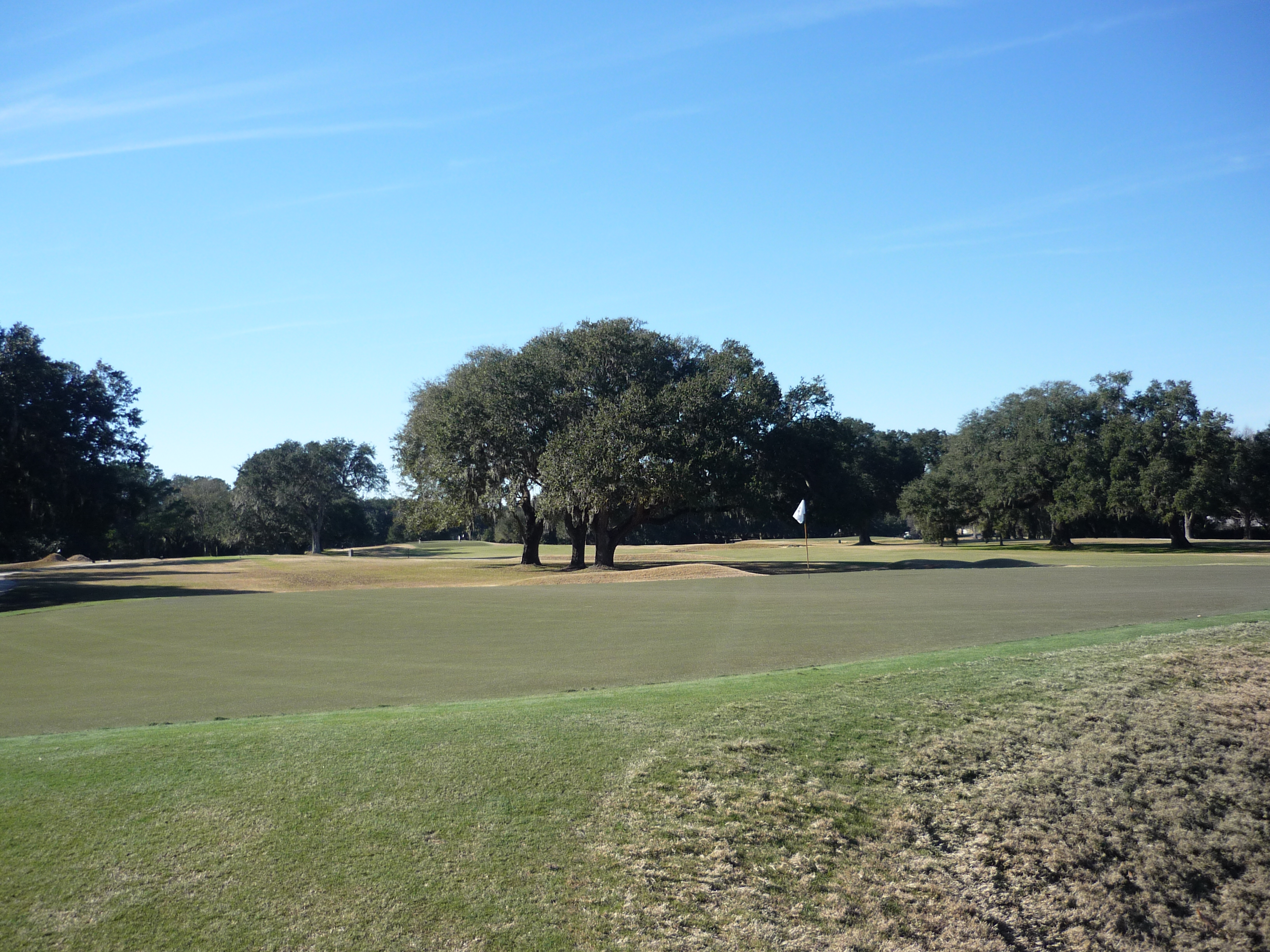
Hole 14 – 380 yards – Par 4
I may have given this distinction away already but 14 might just be my favorite hole at Yeamans Hall. The tee shot is fairly open with a ridge in the landing area. The hole really grabbed me on the approach though.
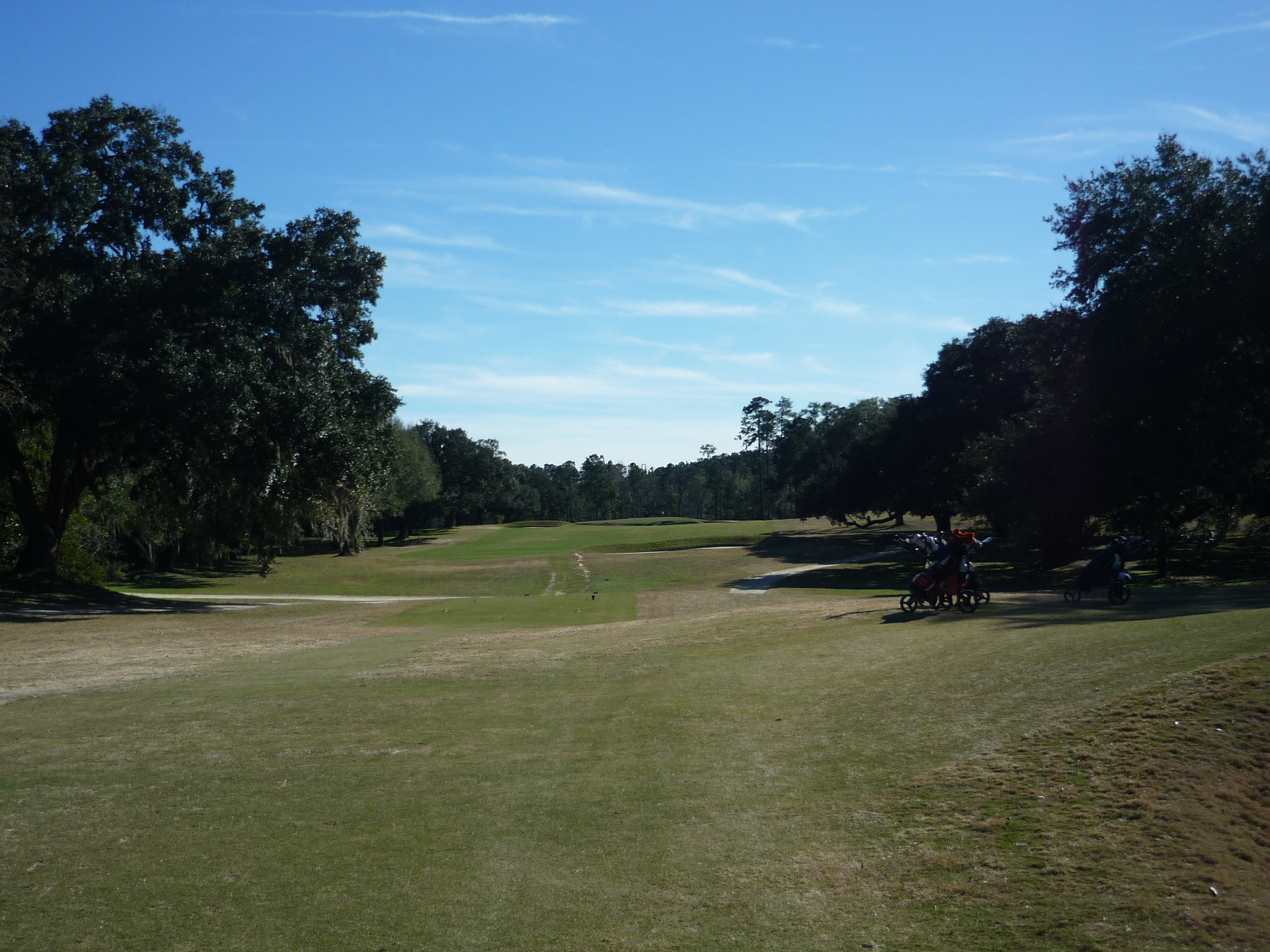
As you are walking along the green looks level with the fairway. The first photo below conceals the dip in the land shown in the second photo.
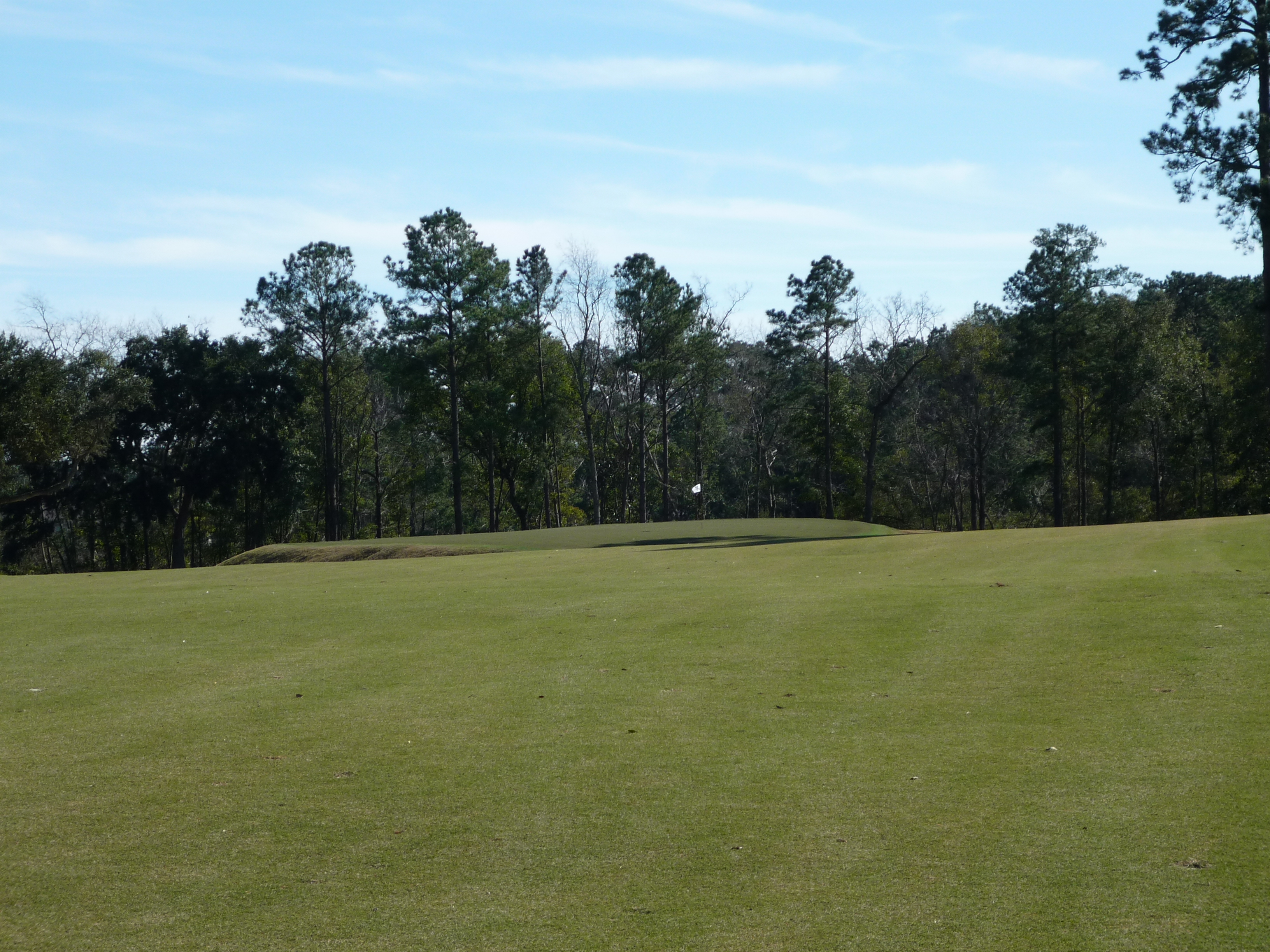
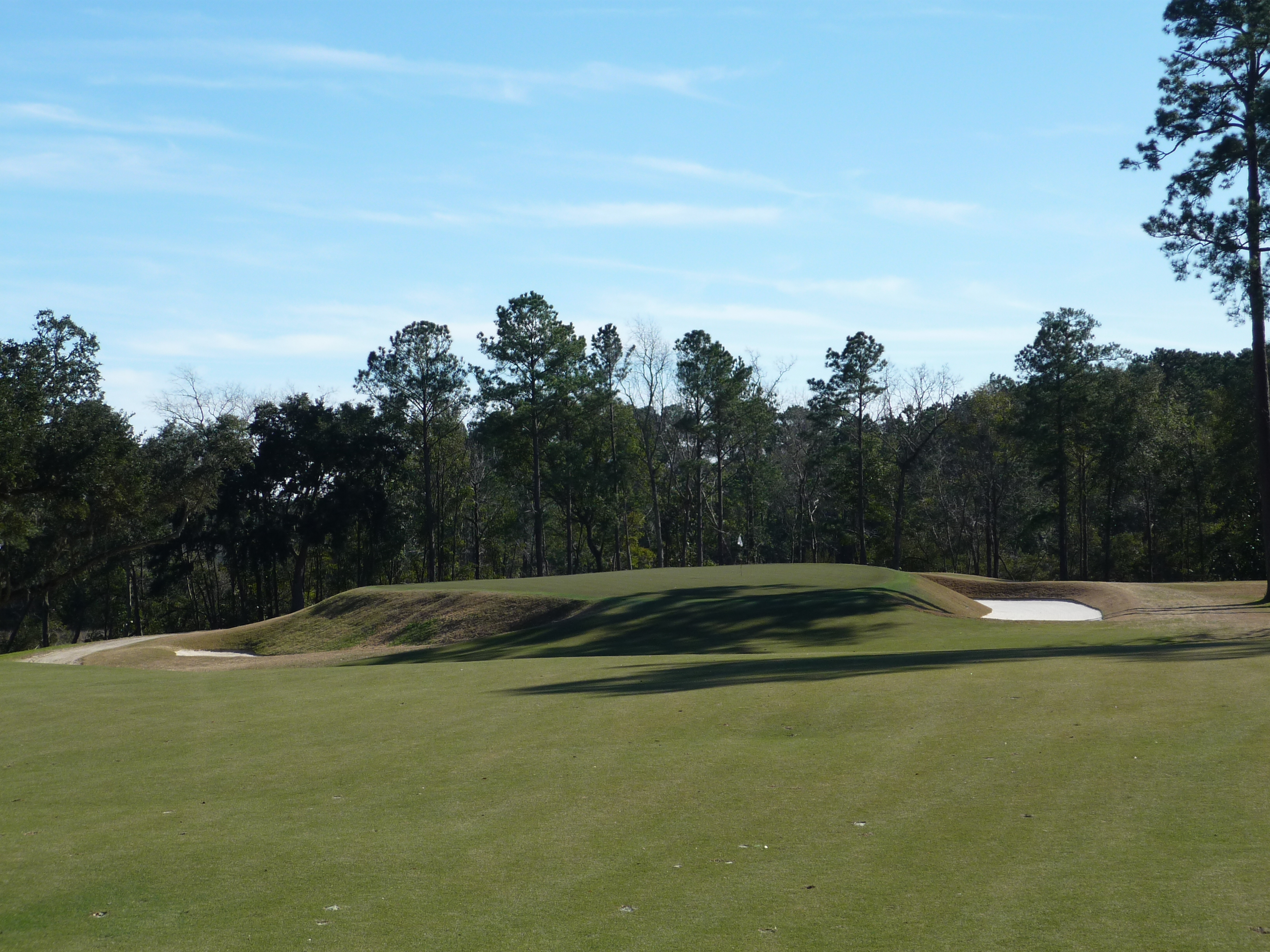
The hole provides a stiff challenge with the tabletop green and deep bunkers on either side. I just loved it.
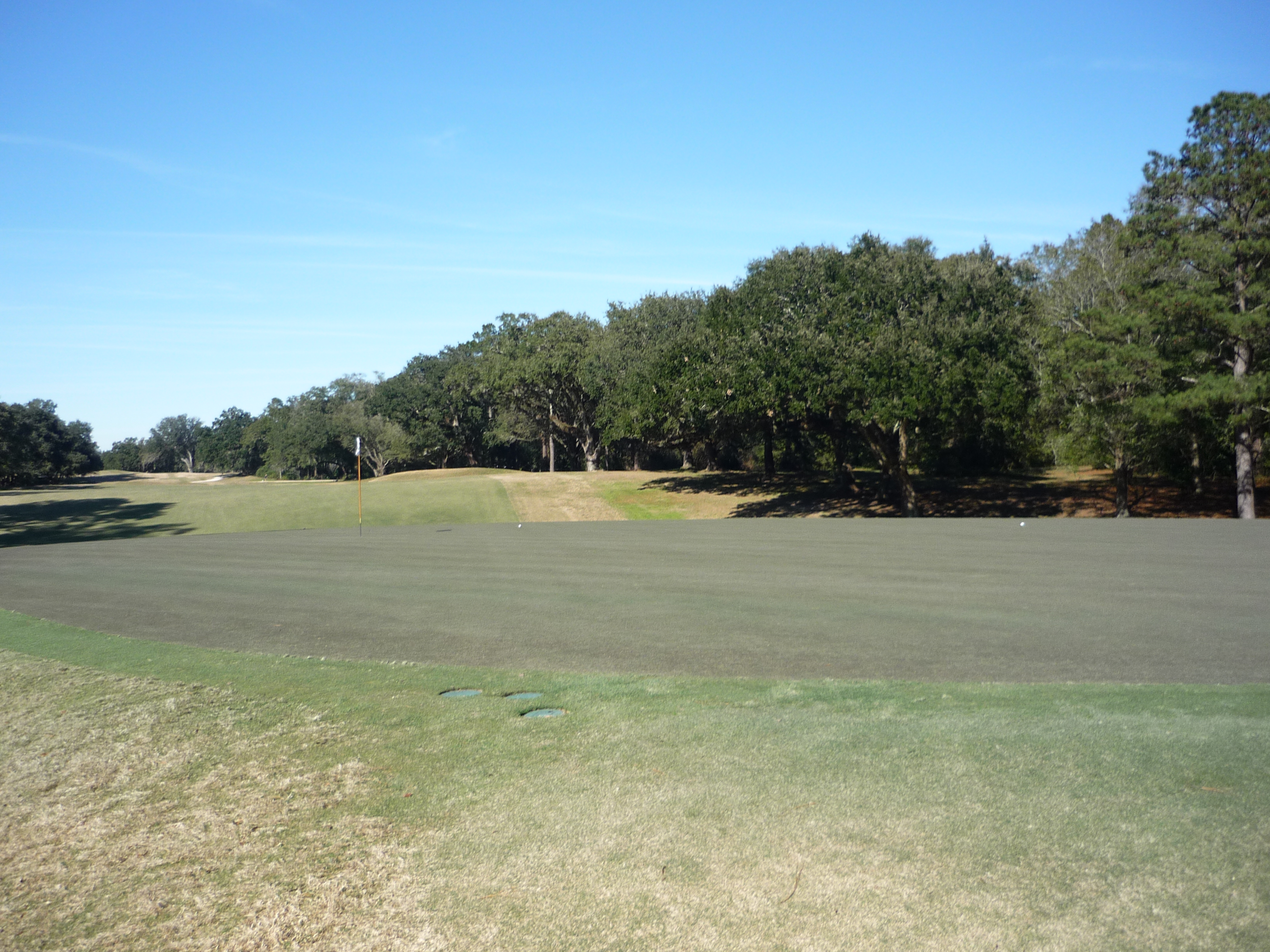
Hole 15 – 425 yards – Par 4
Get ready to get punched in the mouth! This Lido hole is a damn beast. She bends to the left and heads toward a crazy green. About 80 yards short of the putting surface are some gnarly cross bunkers that will gobble up poorly struck approaches.
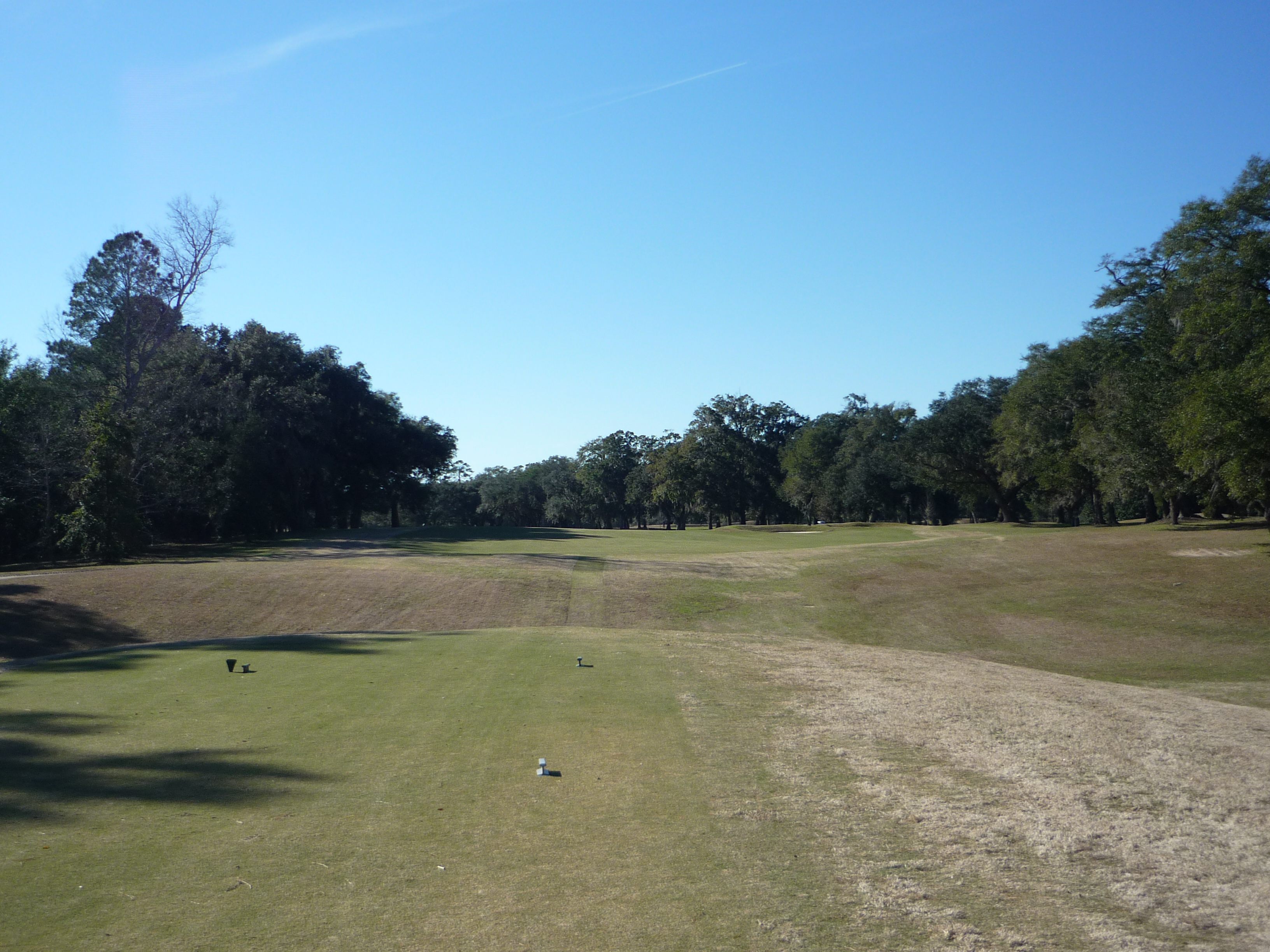
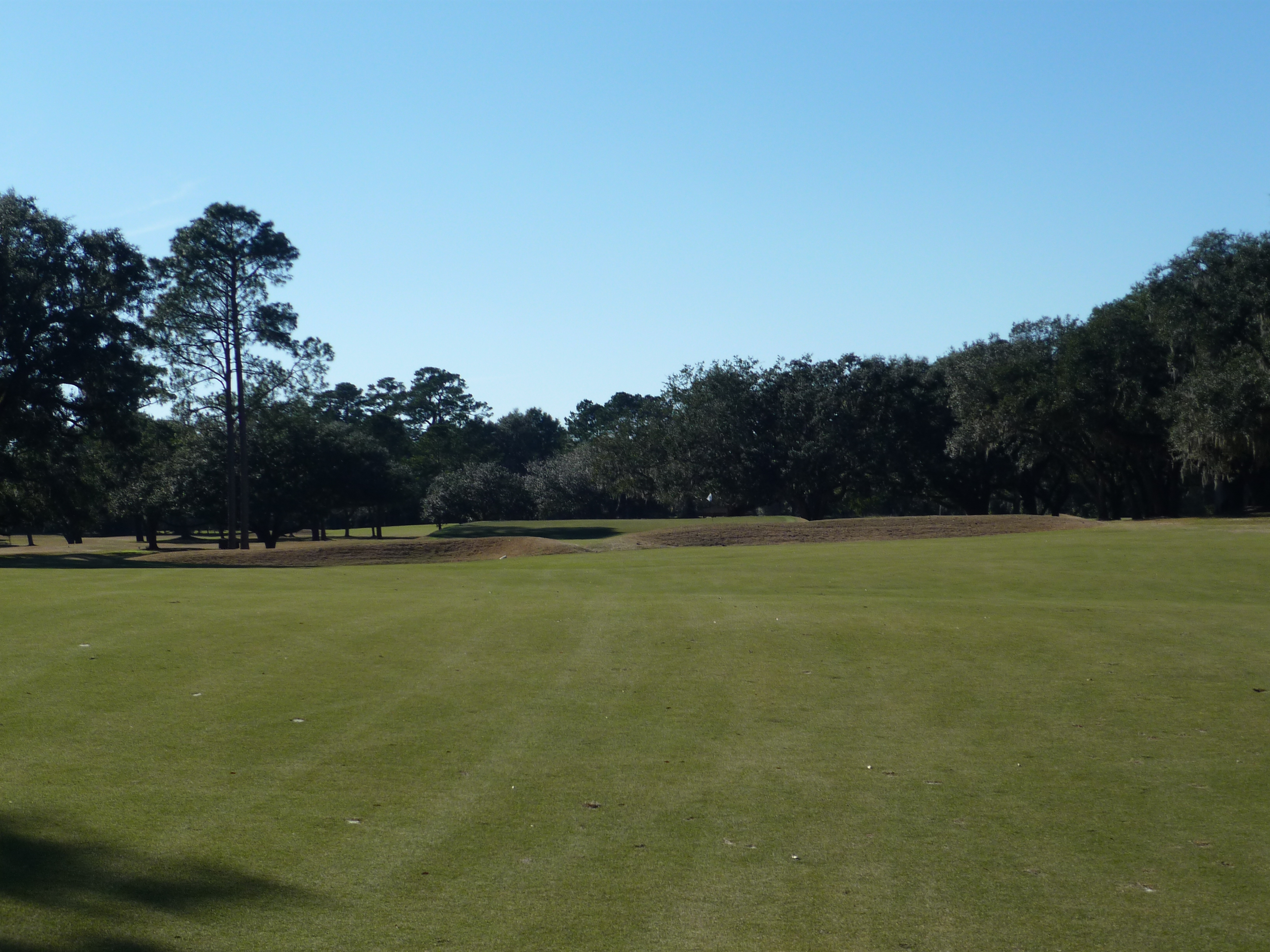
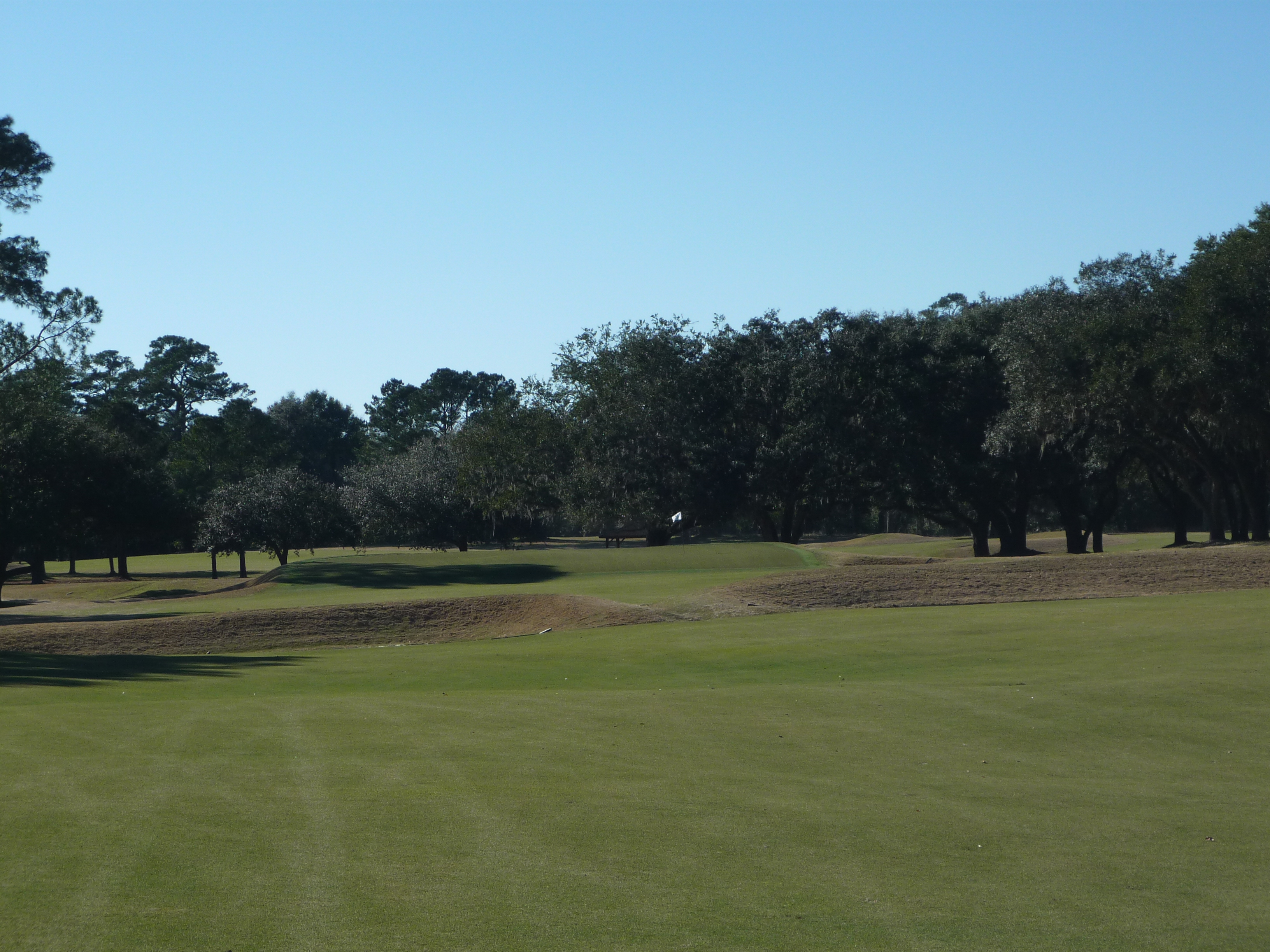
This green is a difficult one to hit due to it’s size and the likelihood of hitting a longer club.
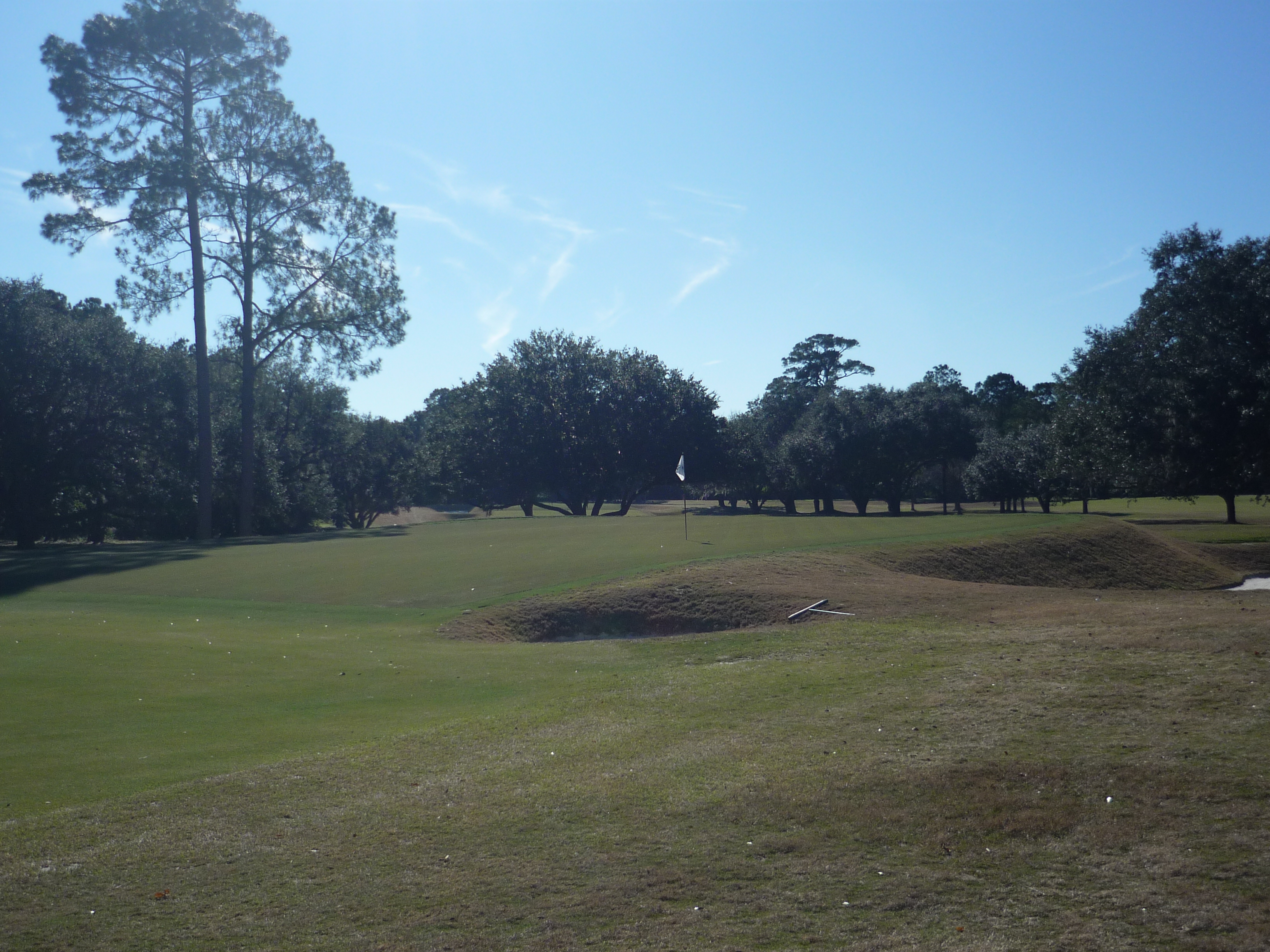
Hole 16 – 194 yards – Par 3
One of the most famous templates, Biarritz, is used on this hole. Biarritz holes have deep troughs in the greens as you see below. The intent is to run a shot up onto the green and through the trough. It’s good fun you don’t get to see too many places.
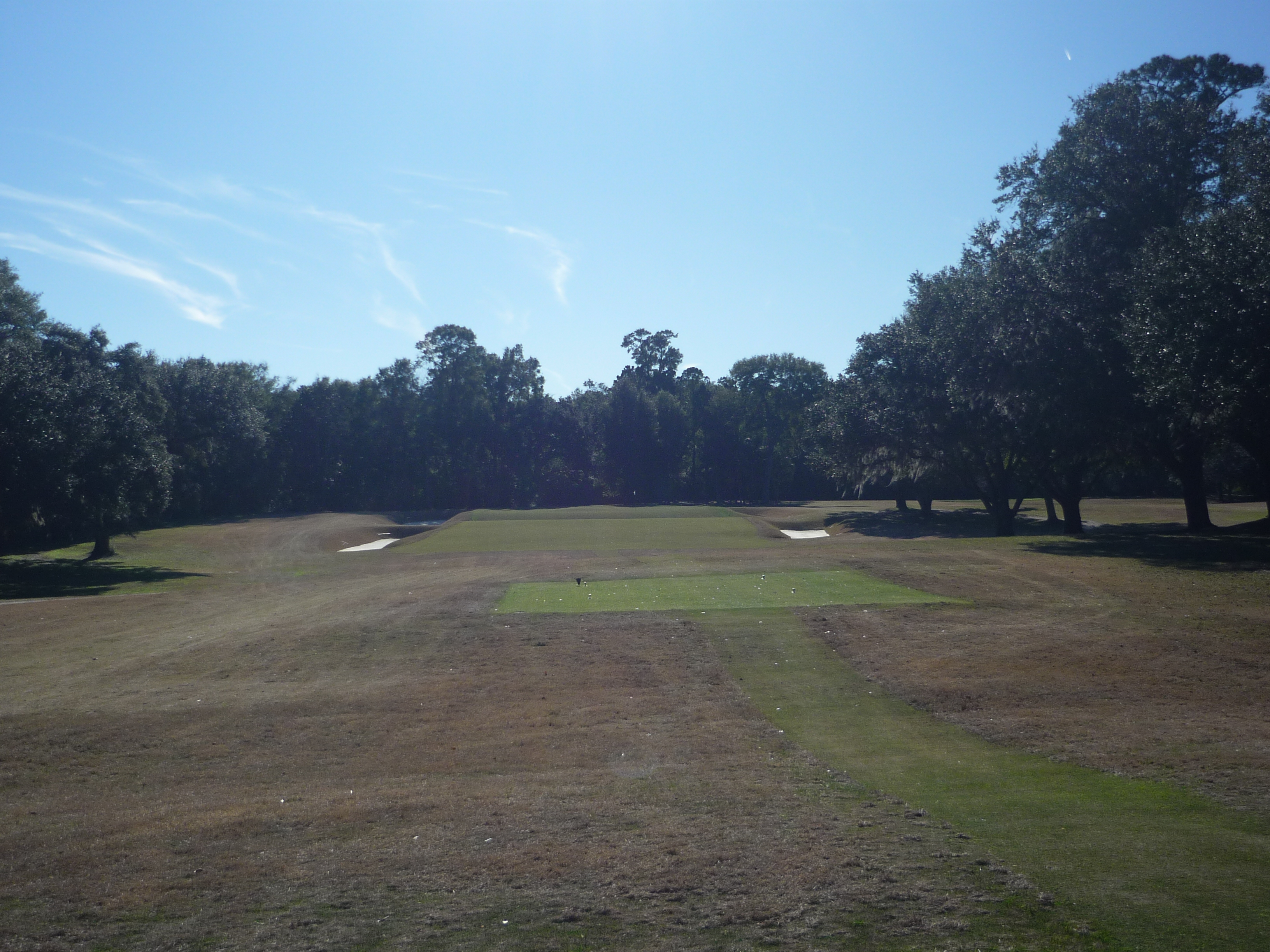
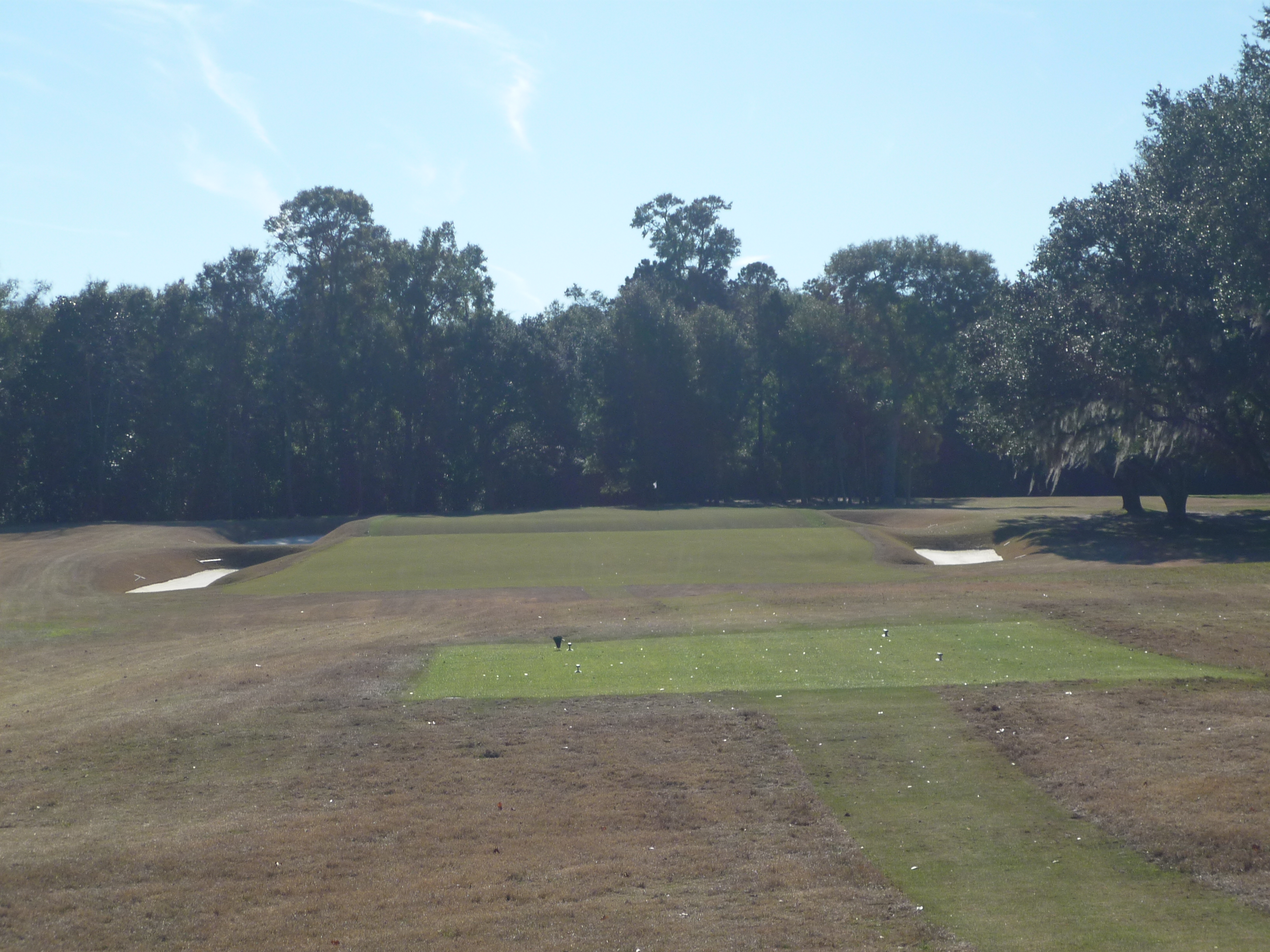
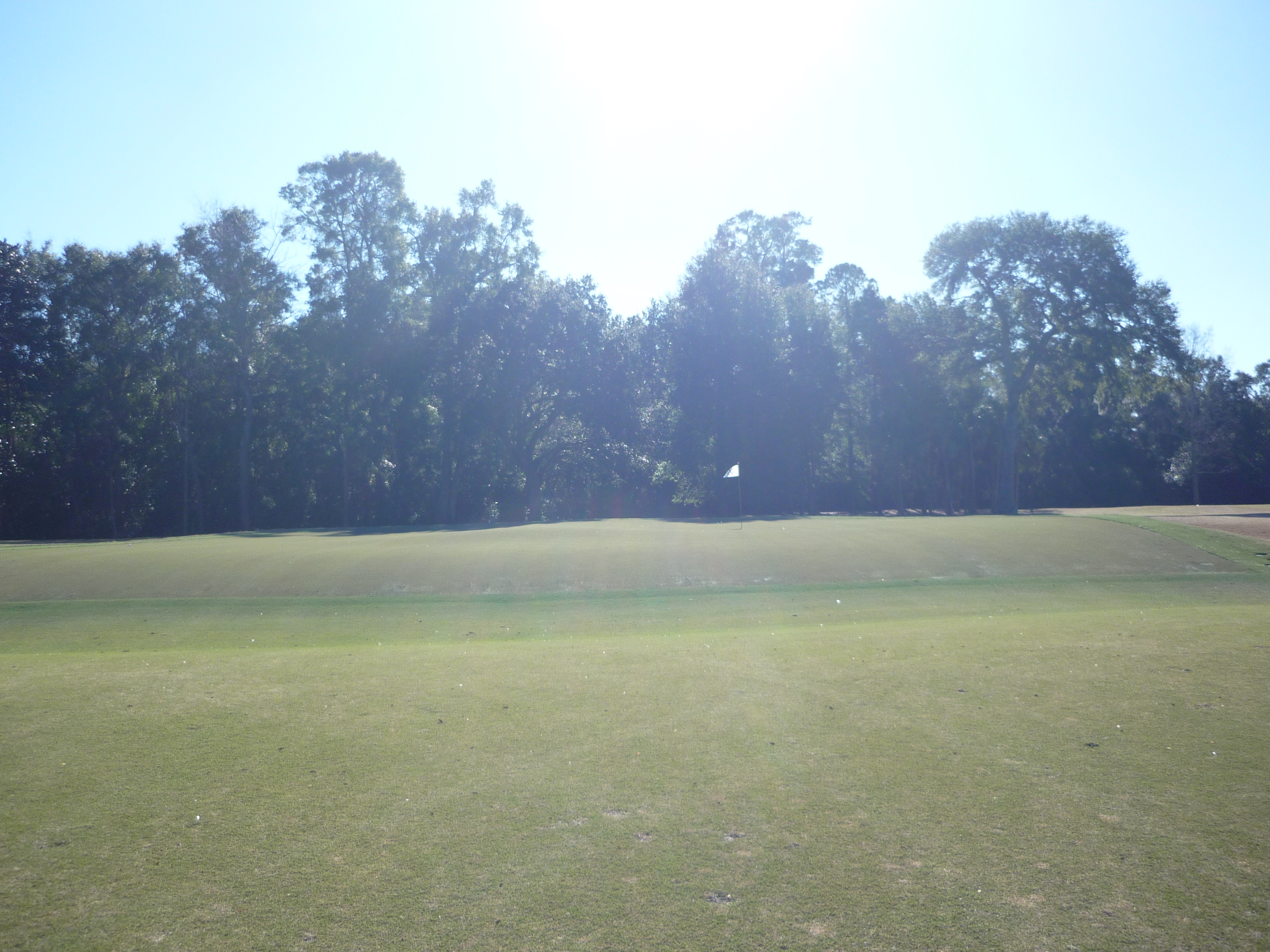
Hole 17 – 387 yards – Par 4
We’ve got another good hole here, evidenced by the fact that it is my host’s favorite. This Punchbowl template provides width off the tee with the danger presenting itself in the form of cross bunkers.
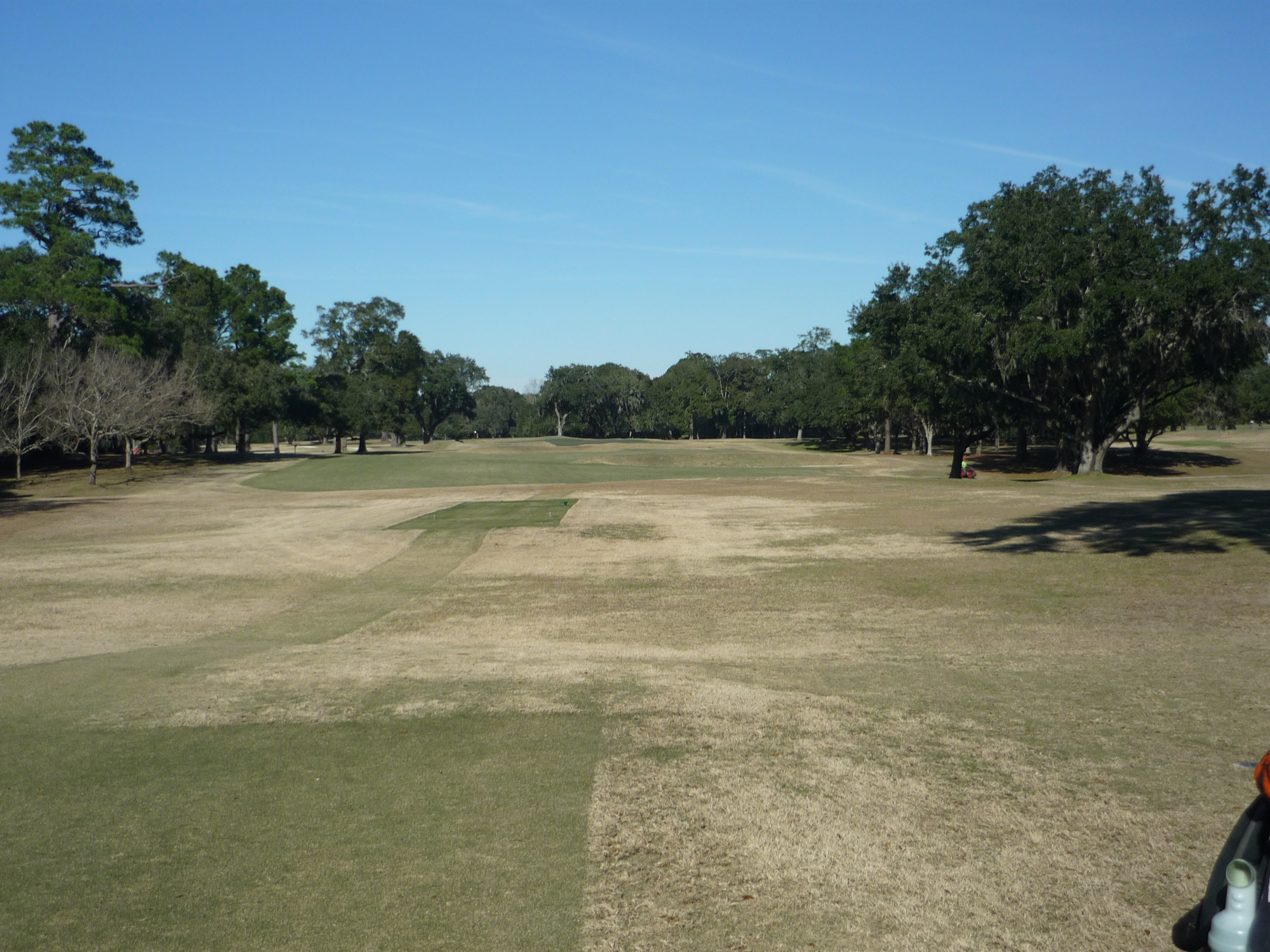
Master class on visual stimulation seen below!
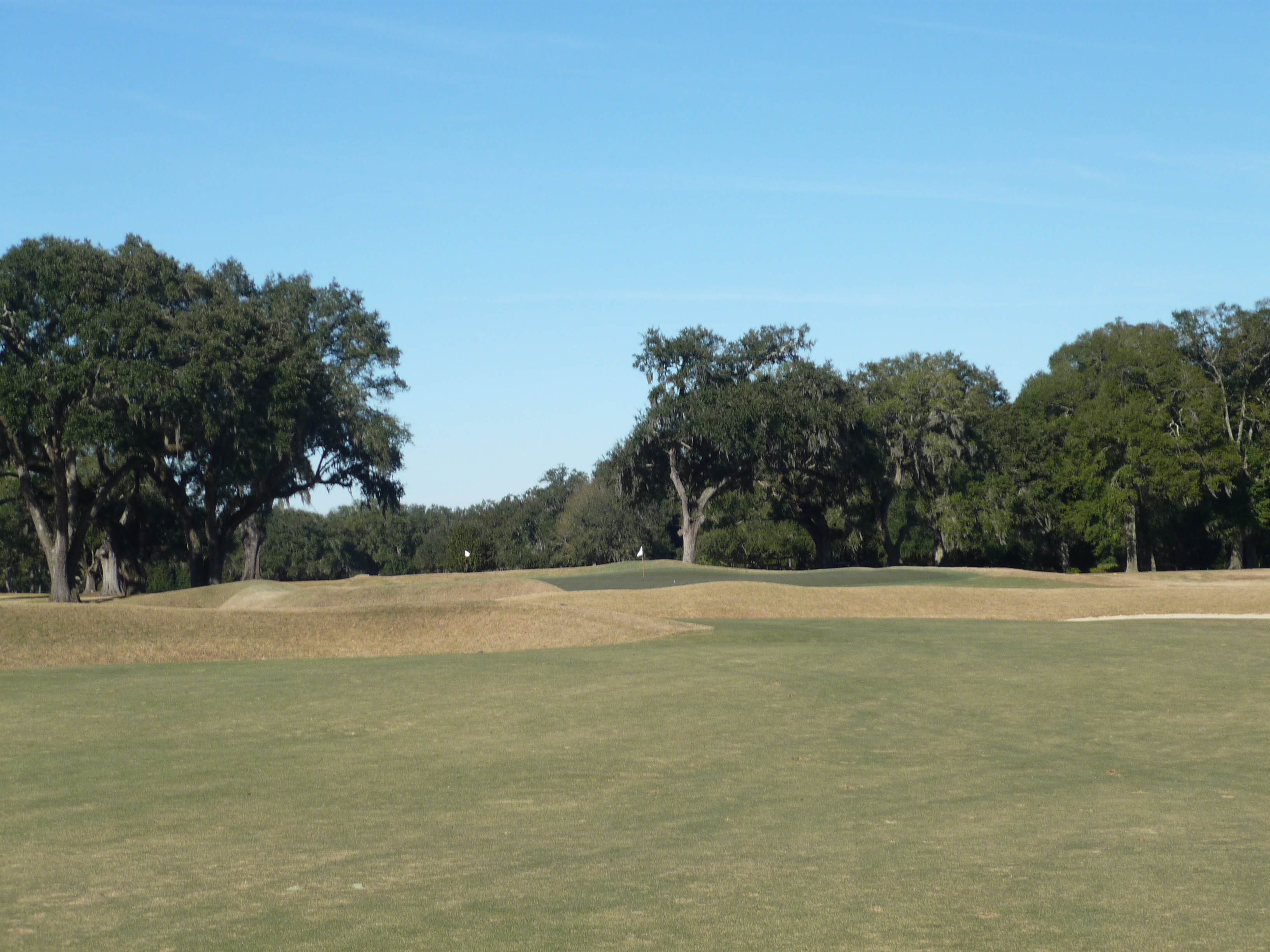
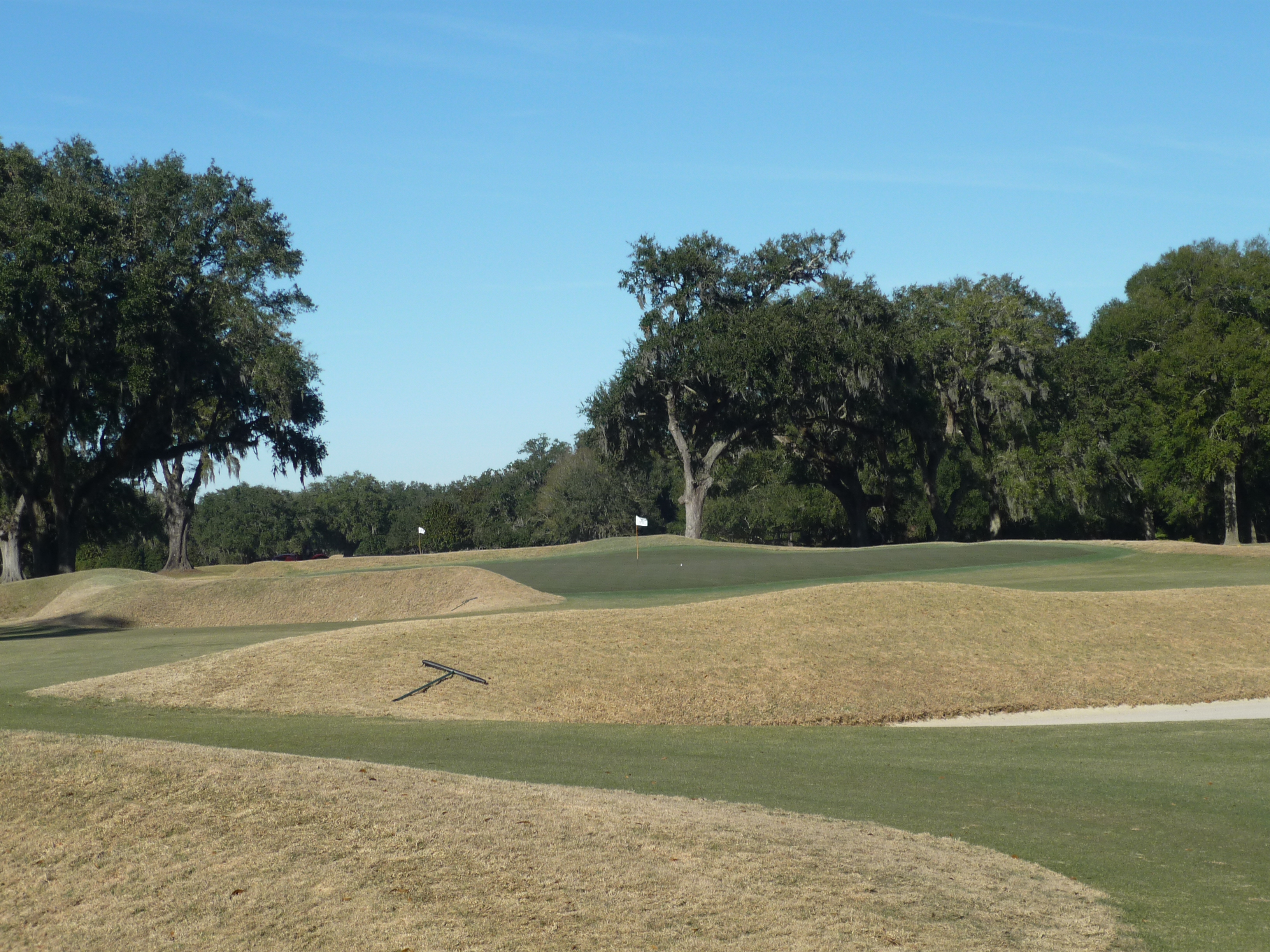
The deep greenside bunkers push right up against the putting surface creating large mounds and accentuating the Punchbowl shape. Great golf hole.
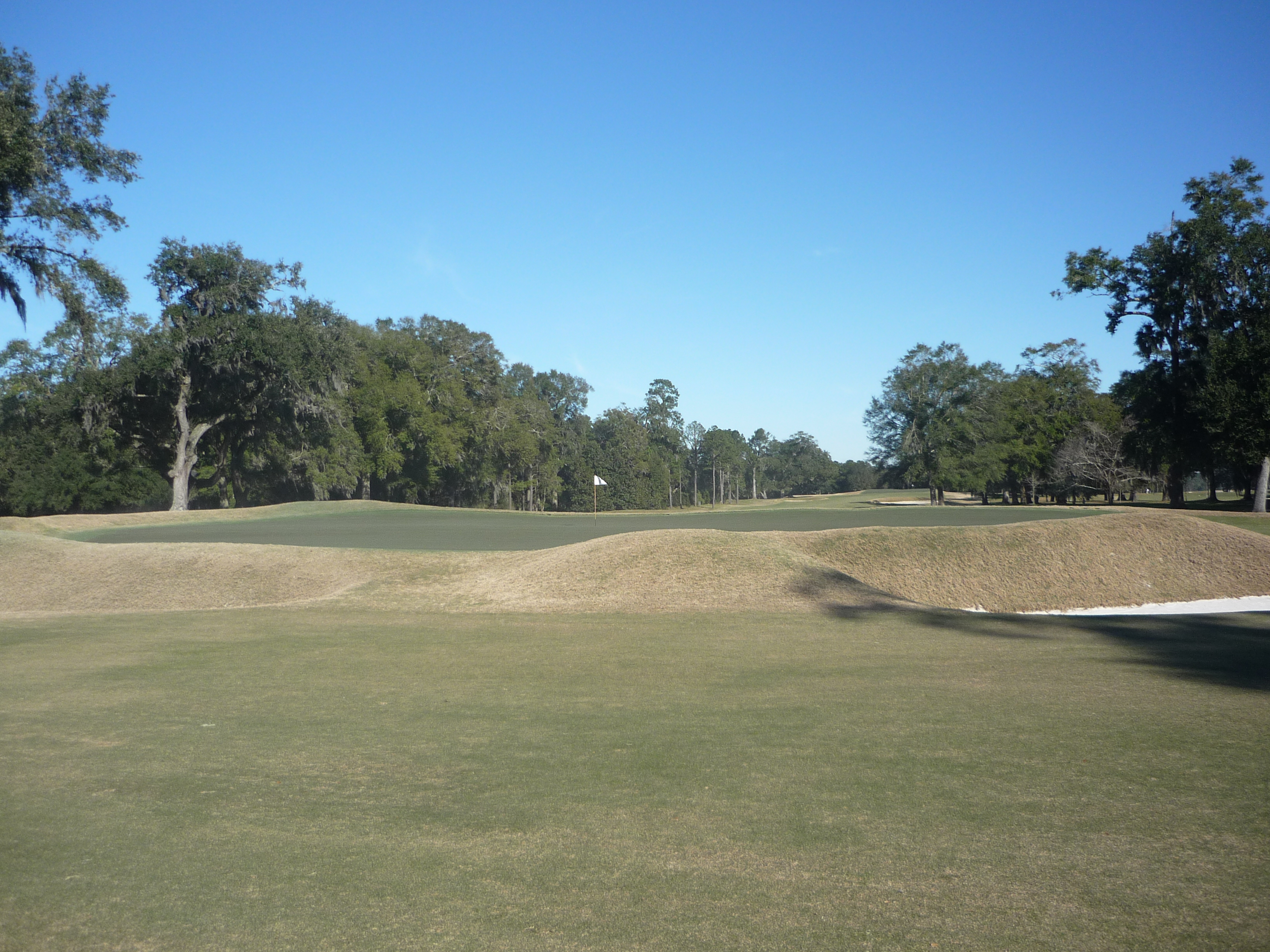
Hole 18 – 504 yards – Par 5
The final hole gives you a great opportunity at birdie. The tee shot begs you to let one rip.
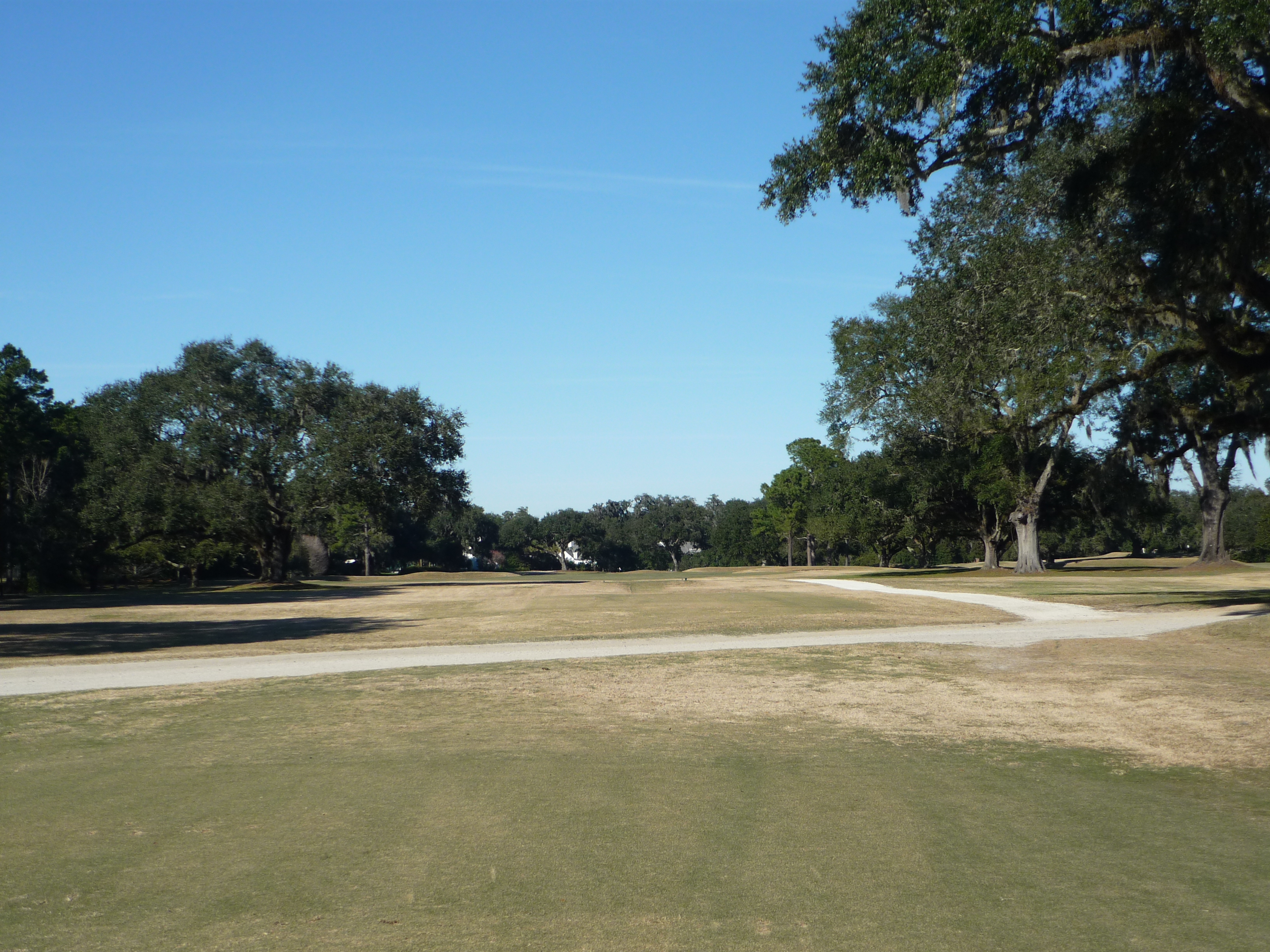
Bunkers await wayward lay up shots and drives.
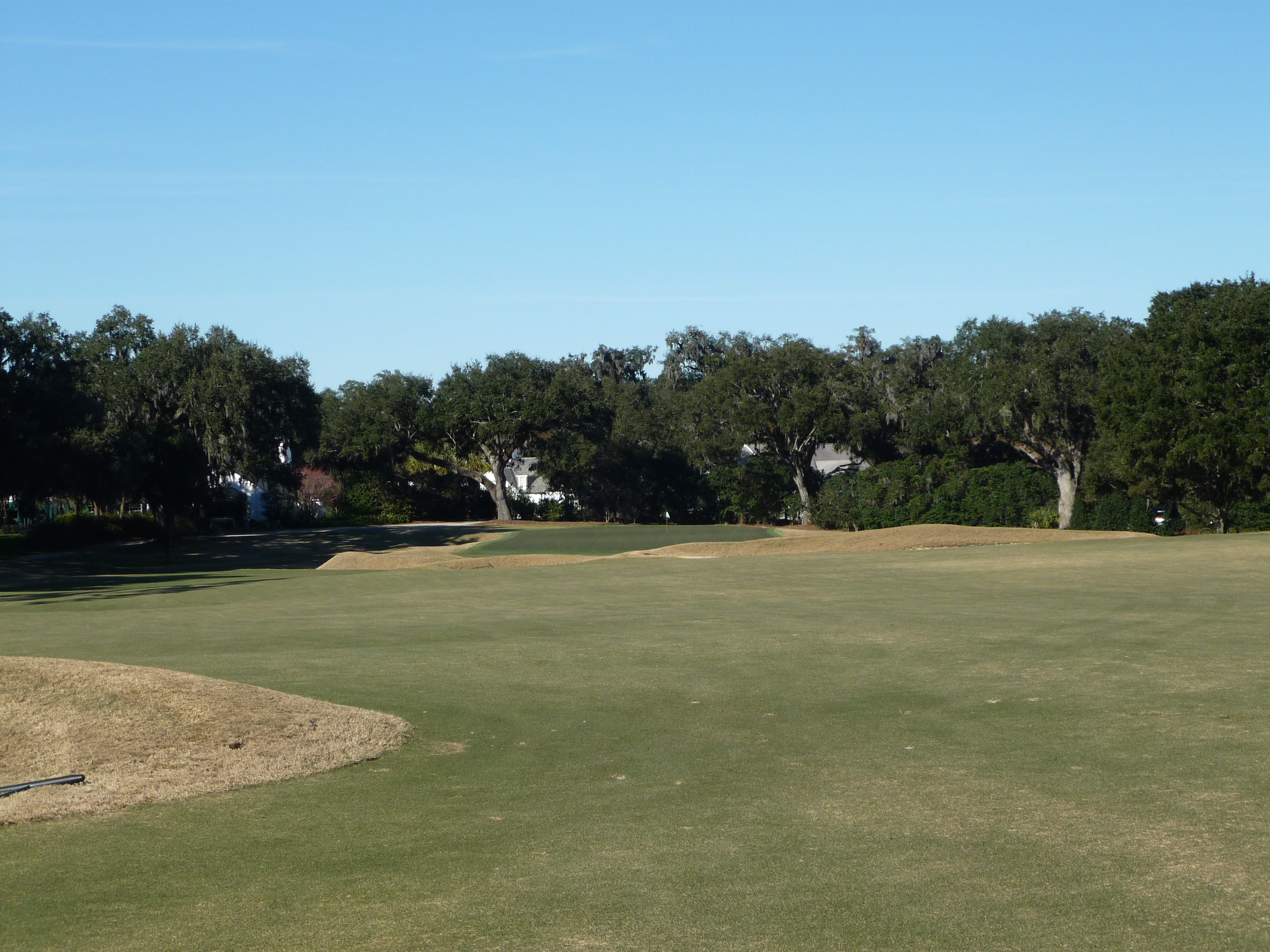
The final approach plays down into a natural staging area with the backdrop of foliage. This green is quite sloped and tricky. You may make a birdie but you’ll certainly earn it.
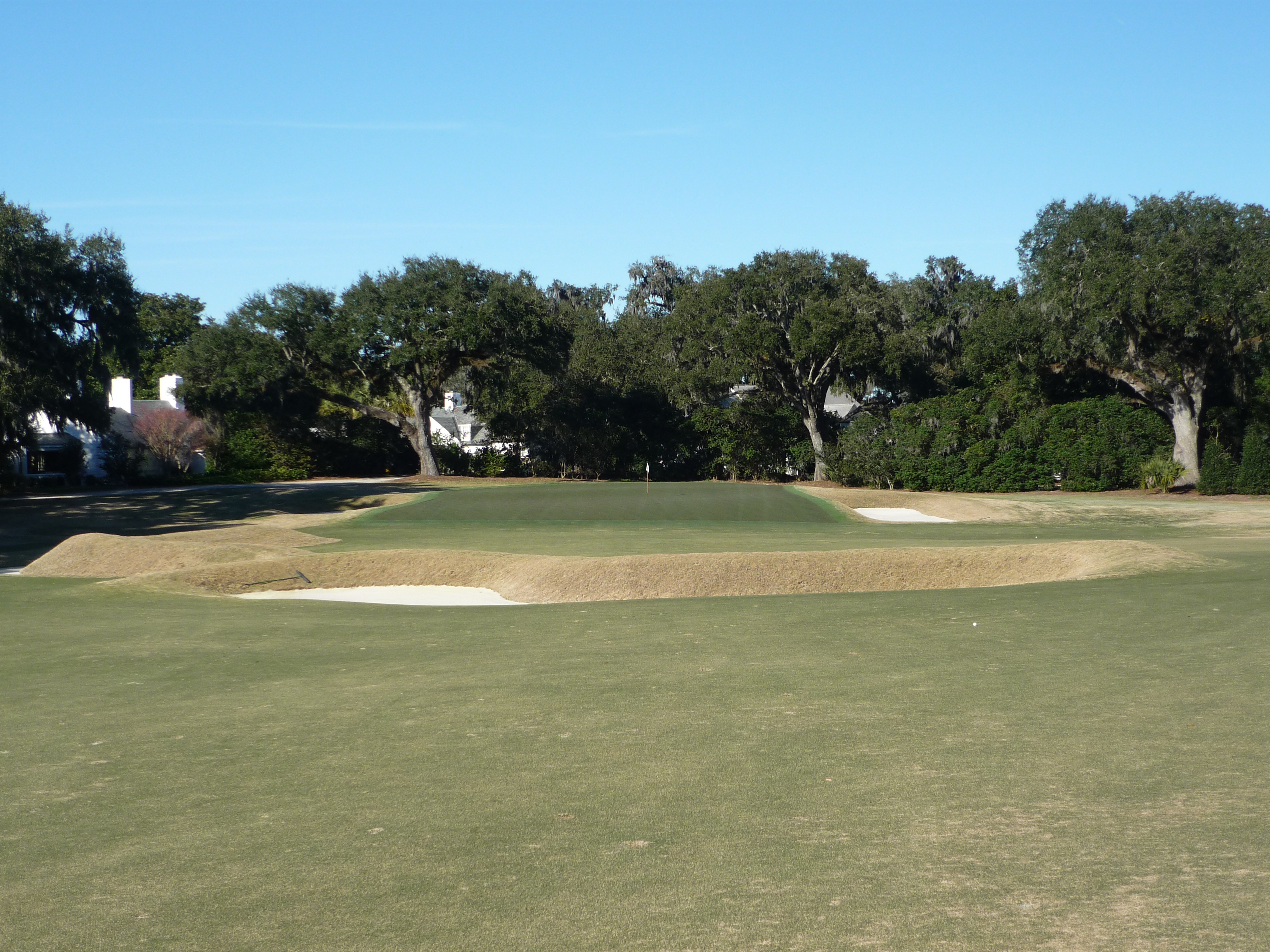
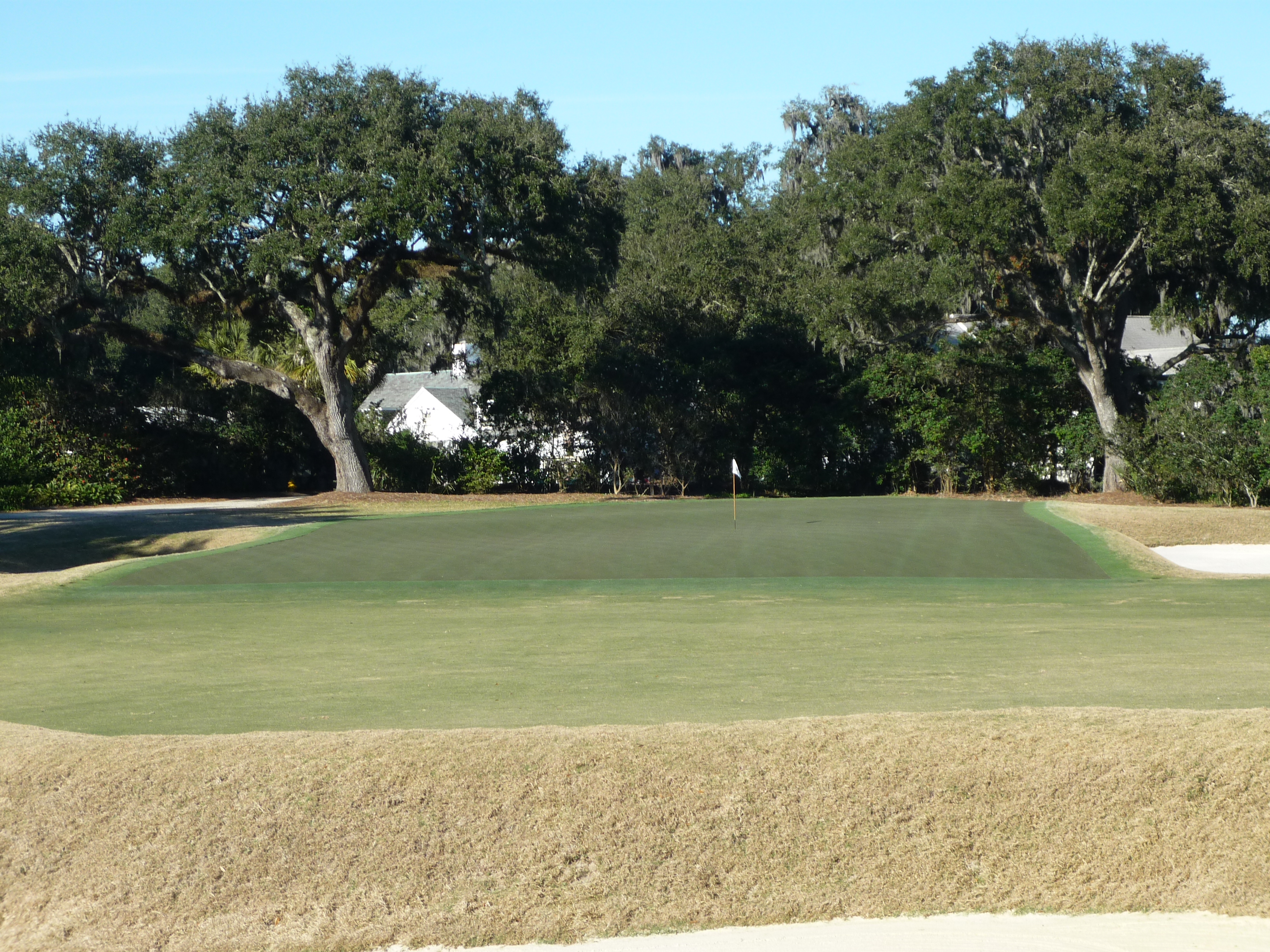
Holing out on the final green is bittersweet. Bitter because your round is over, far often feeling as if it flew by in an instant. Sweet because you’ve just experienced an incredibly charming Raynor course in a world that doesn’t have enough of them. Yeamans Hall is one of my favorite golf experiences ever, full stop. Get here if you can.
